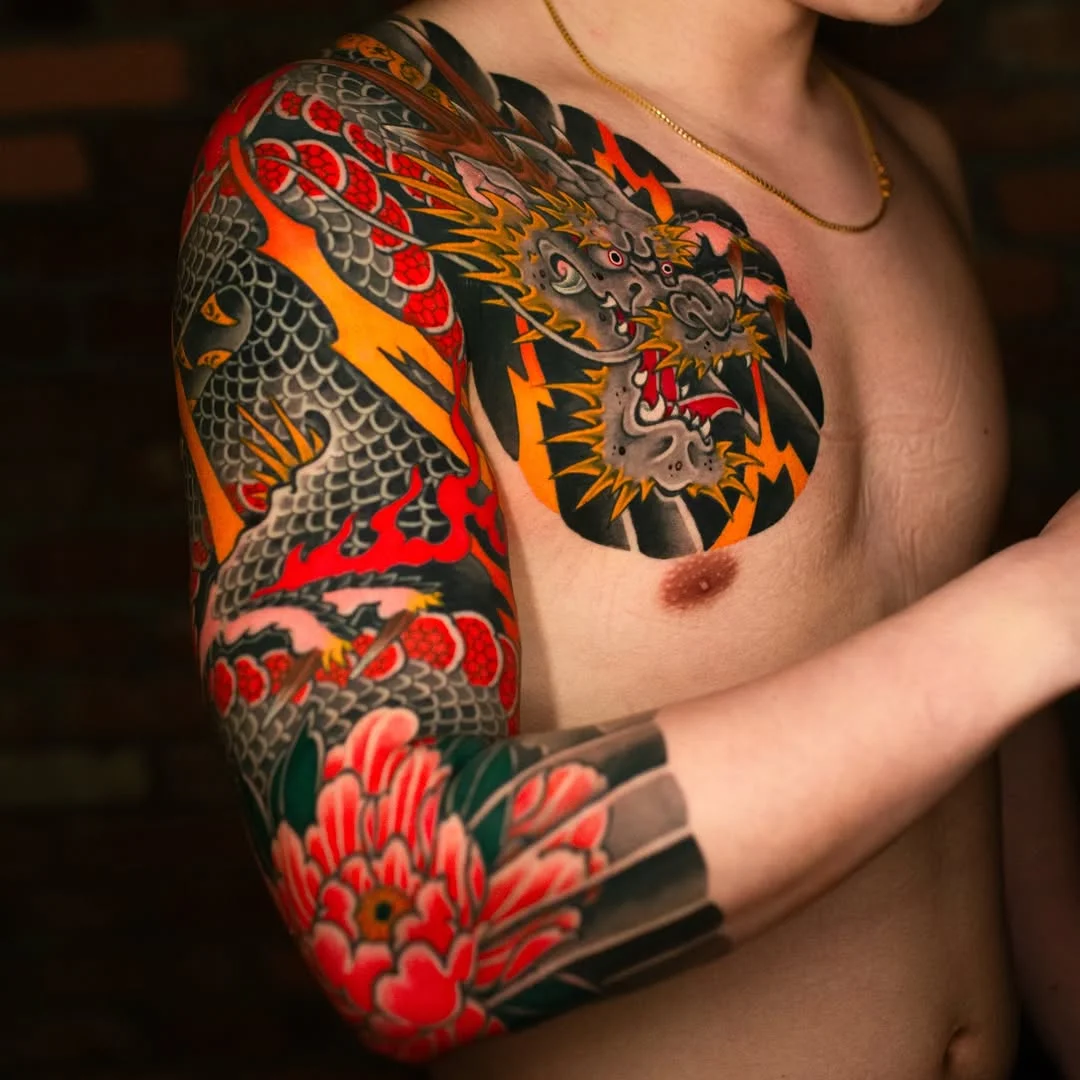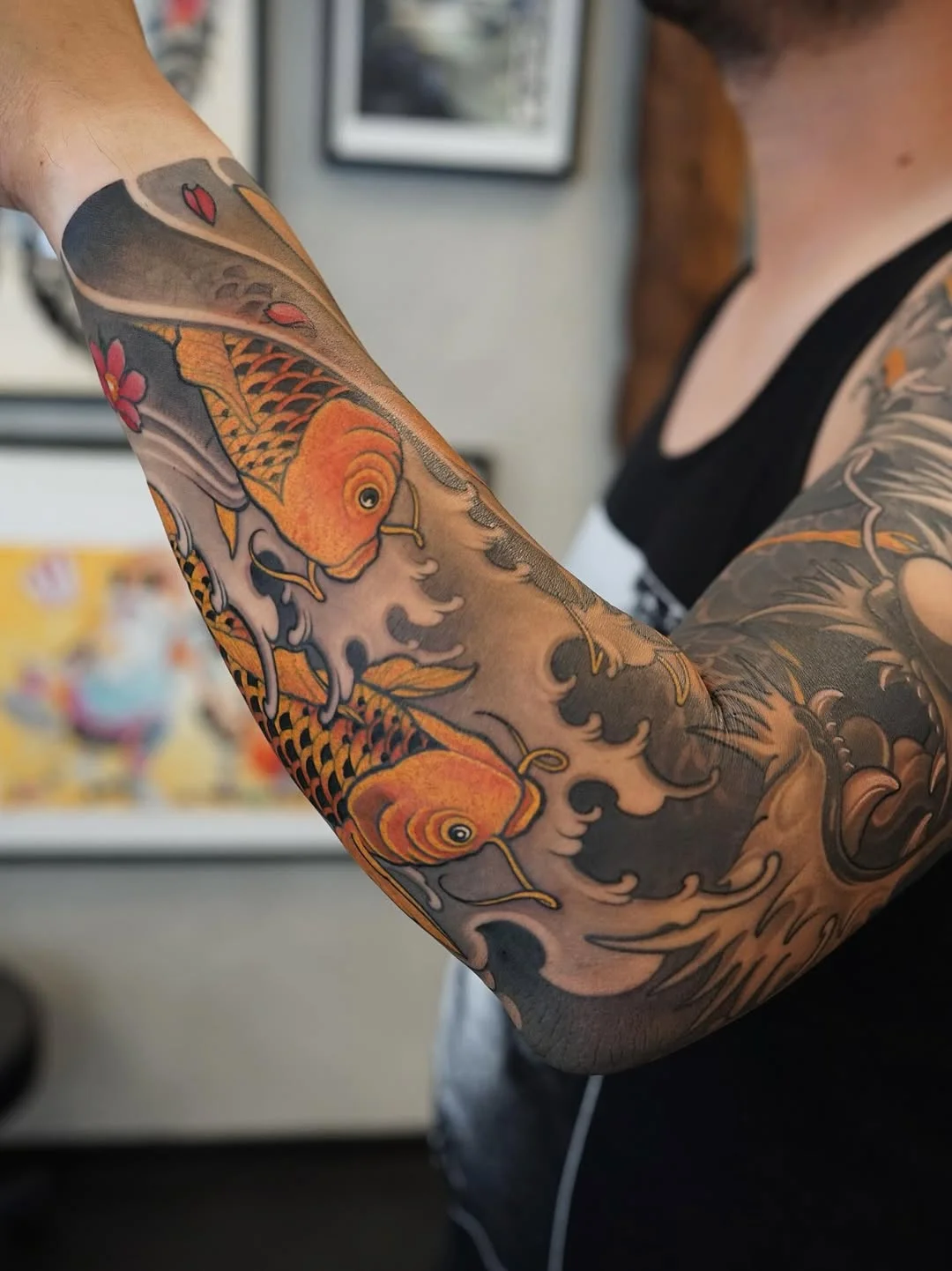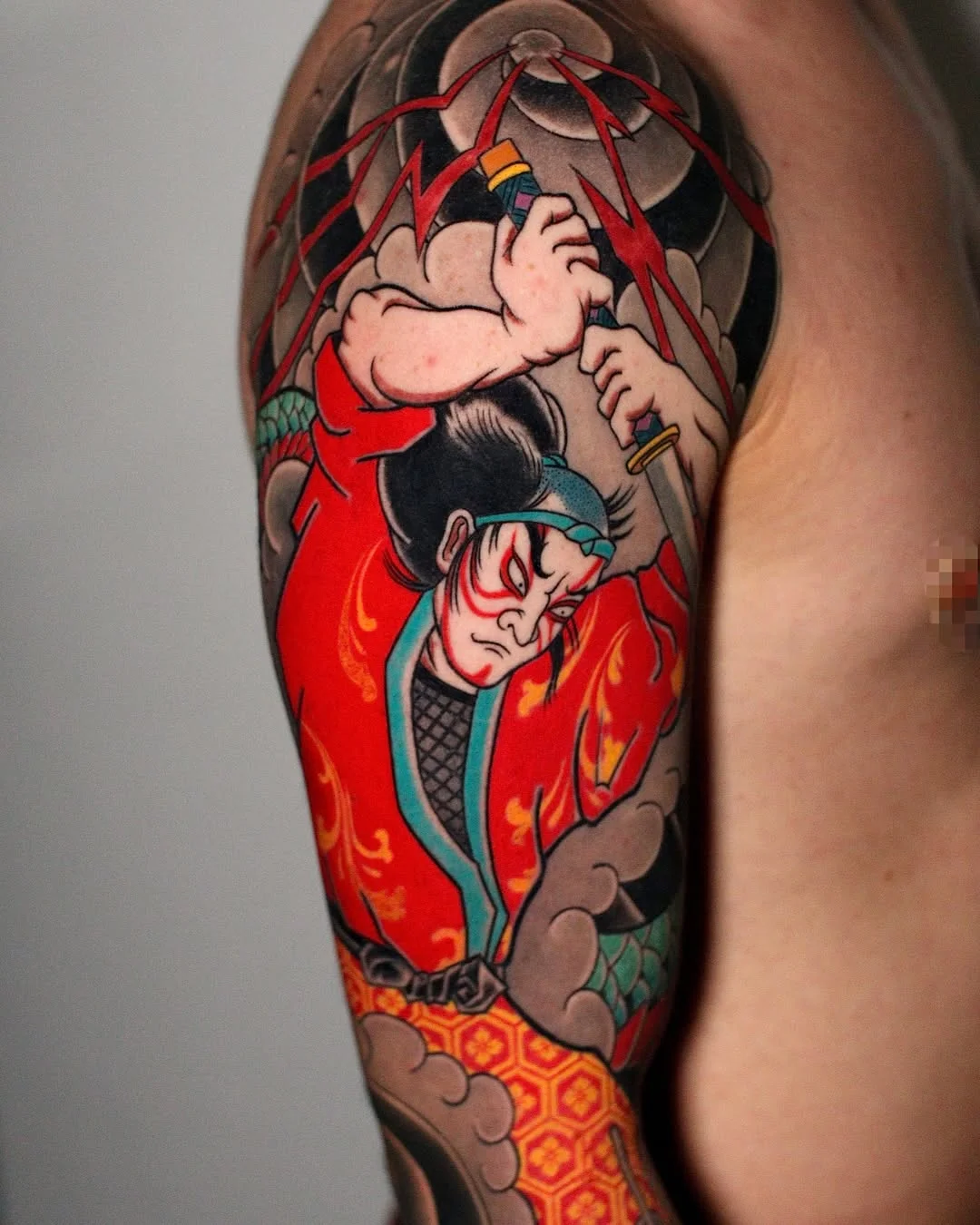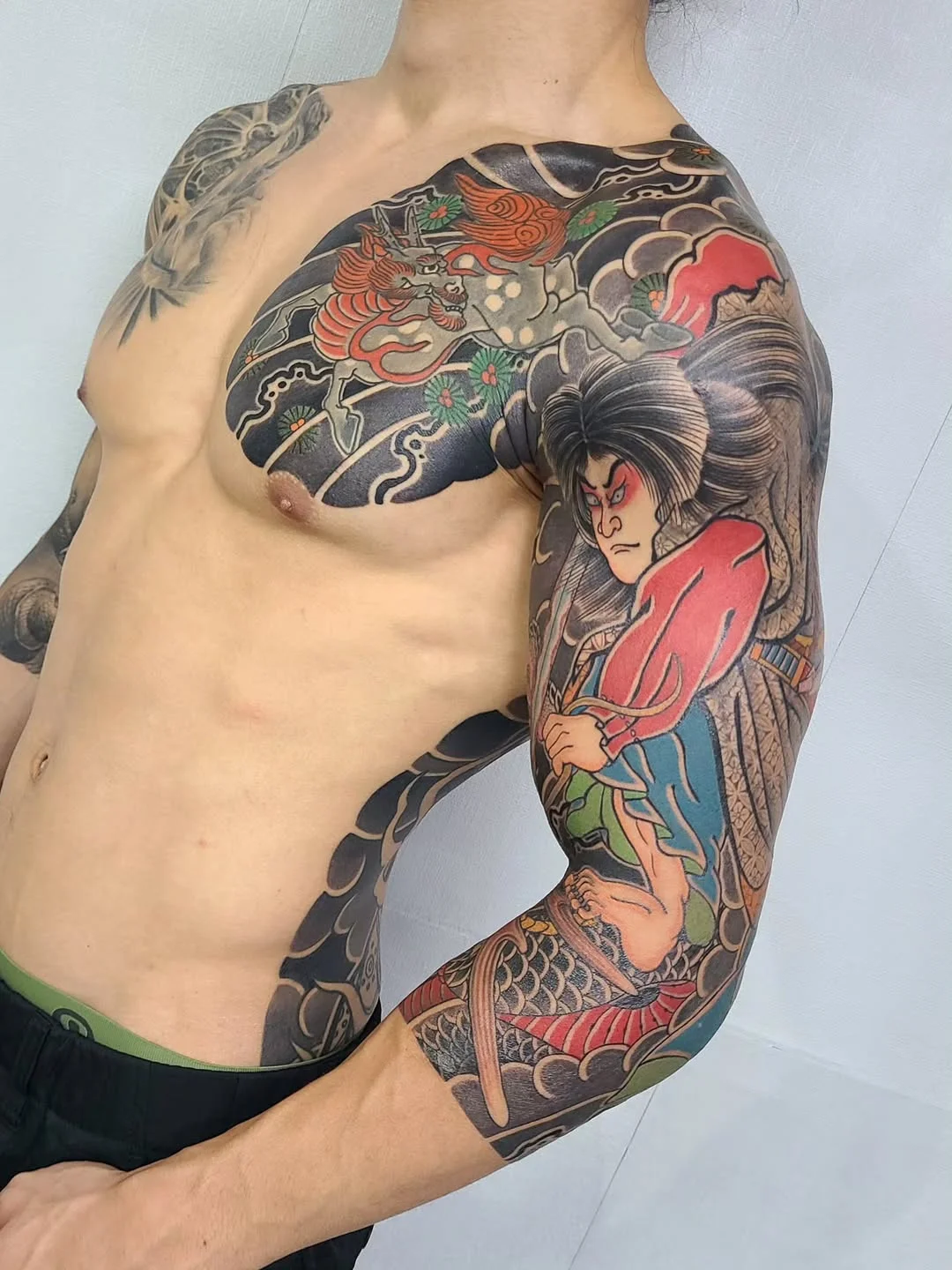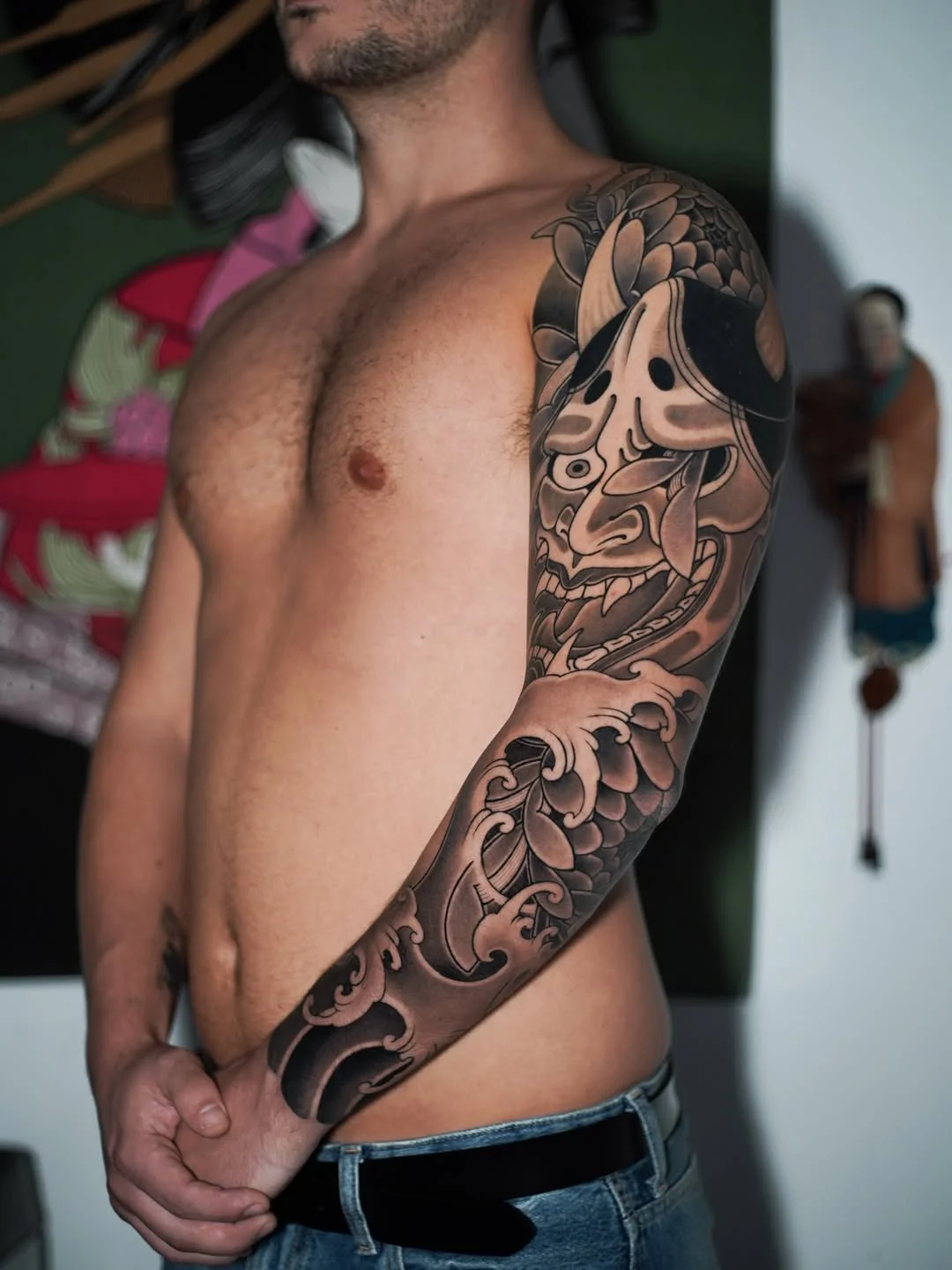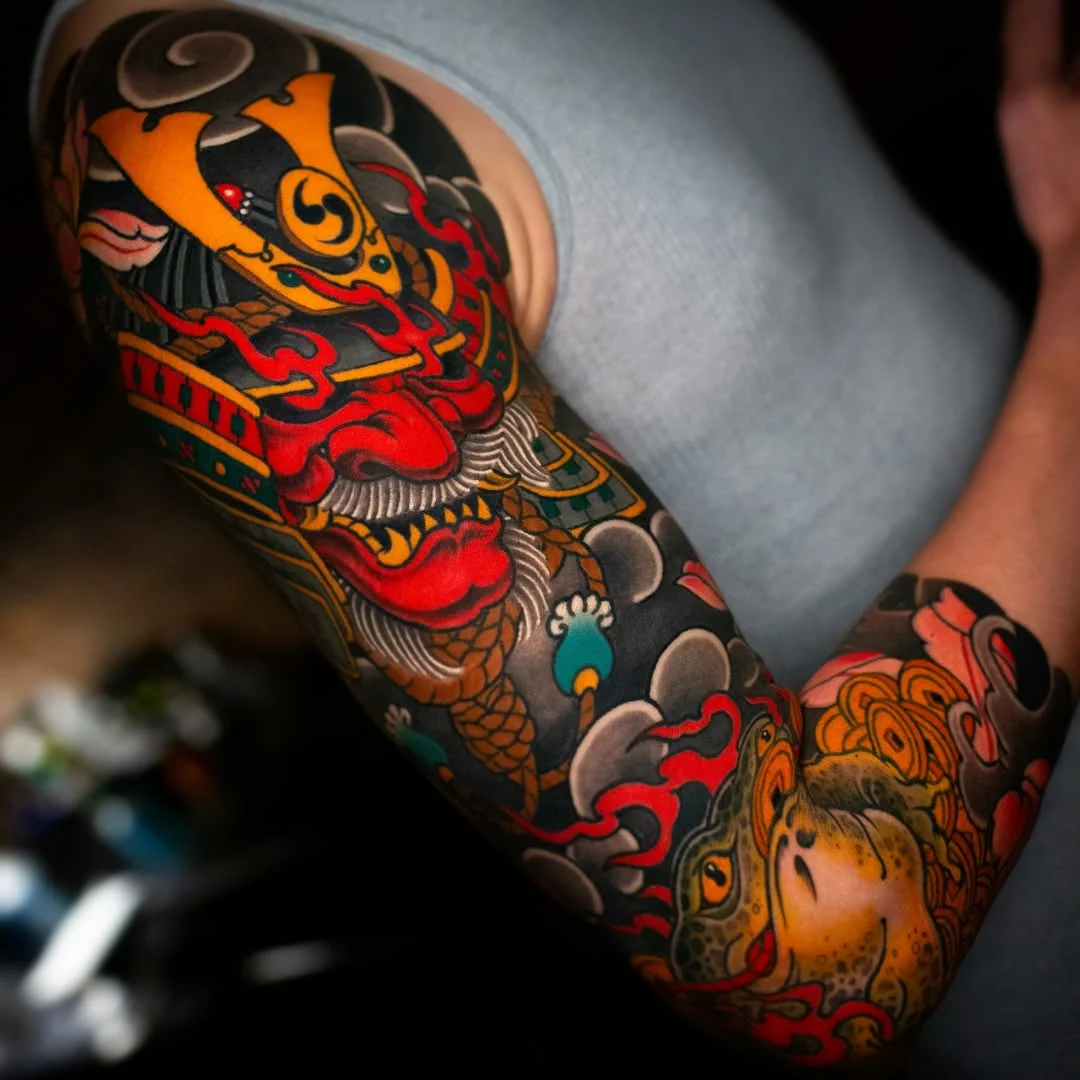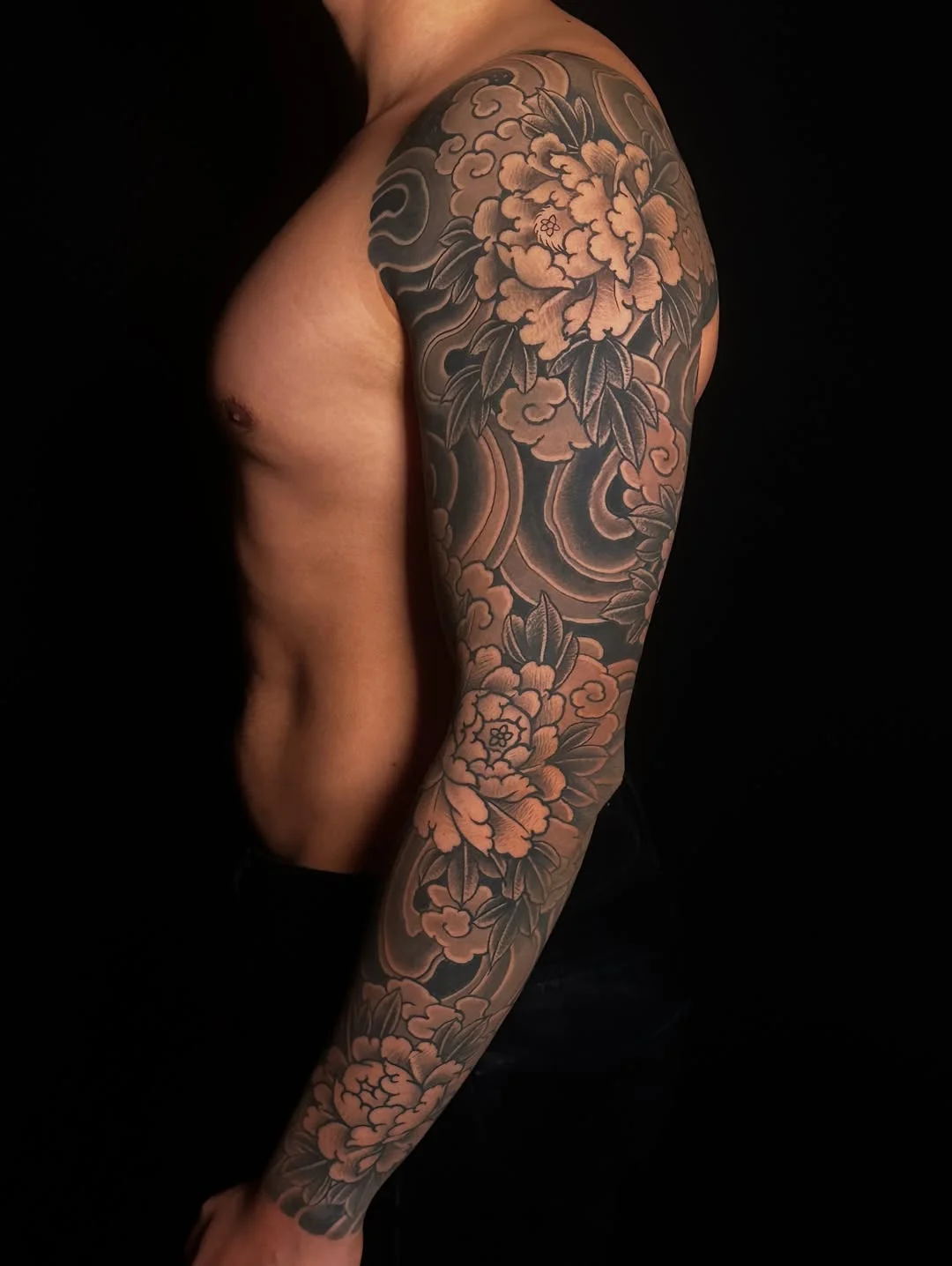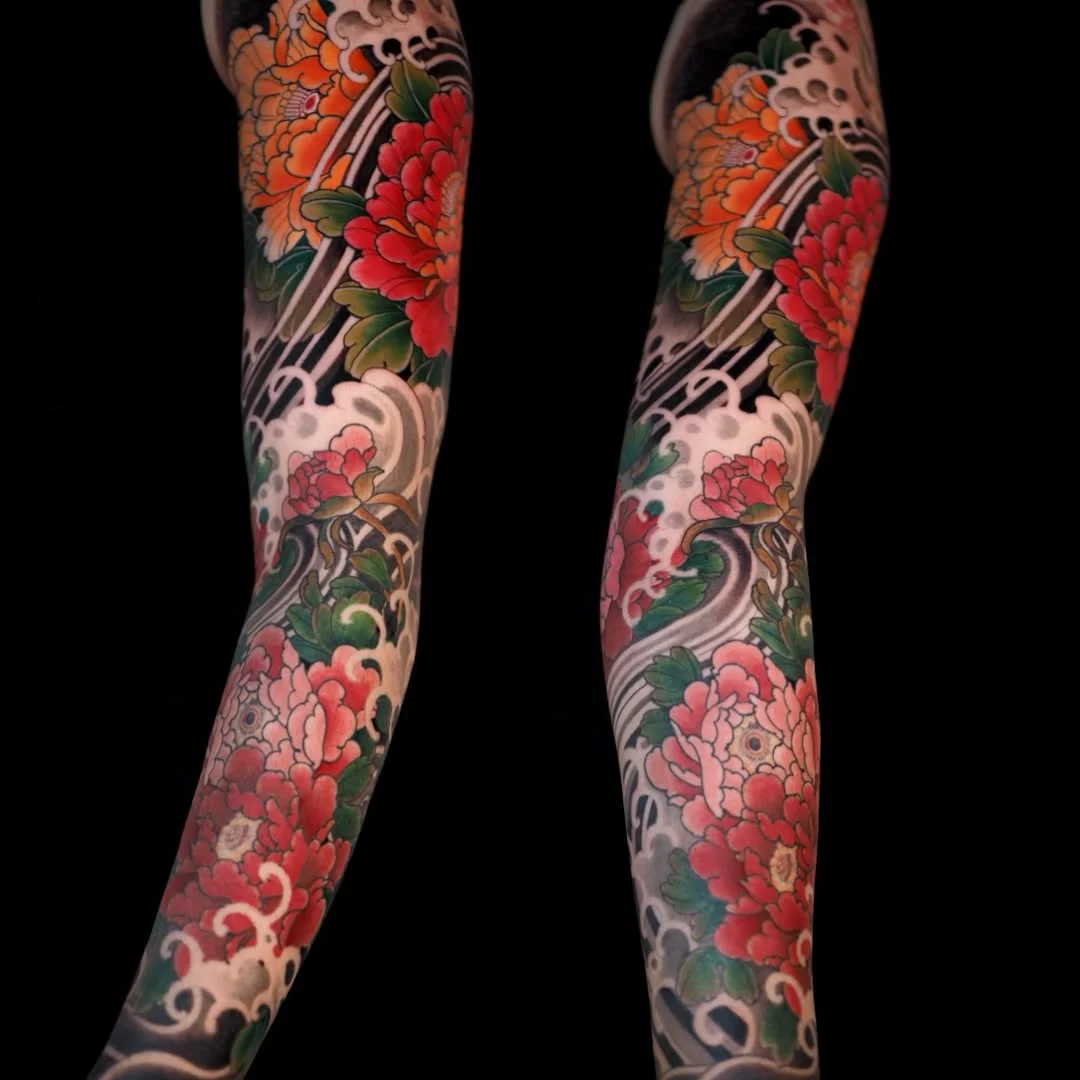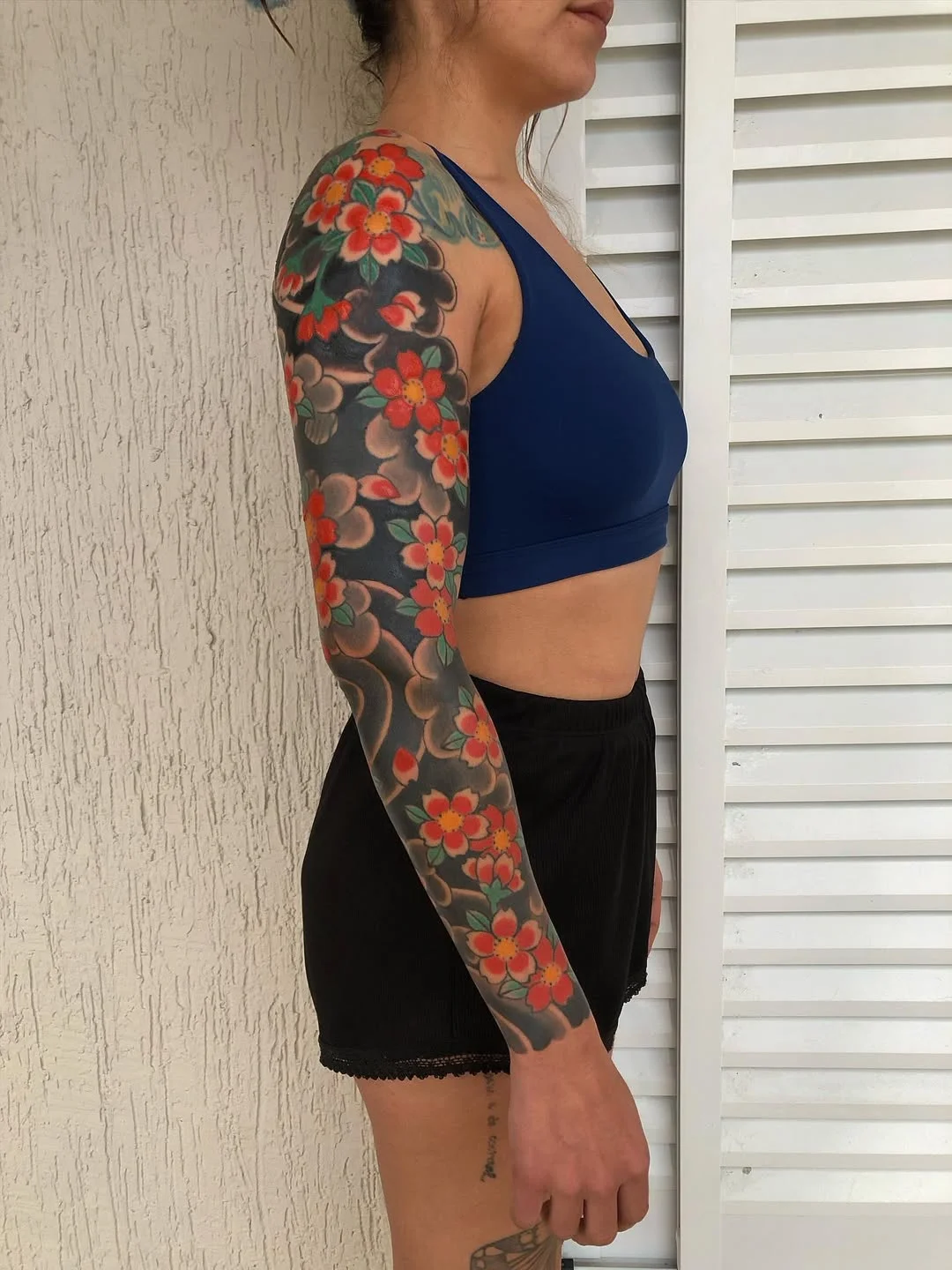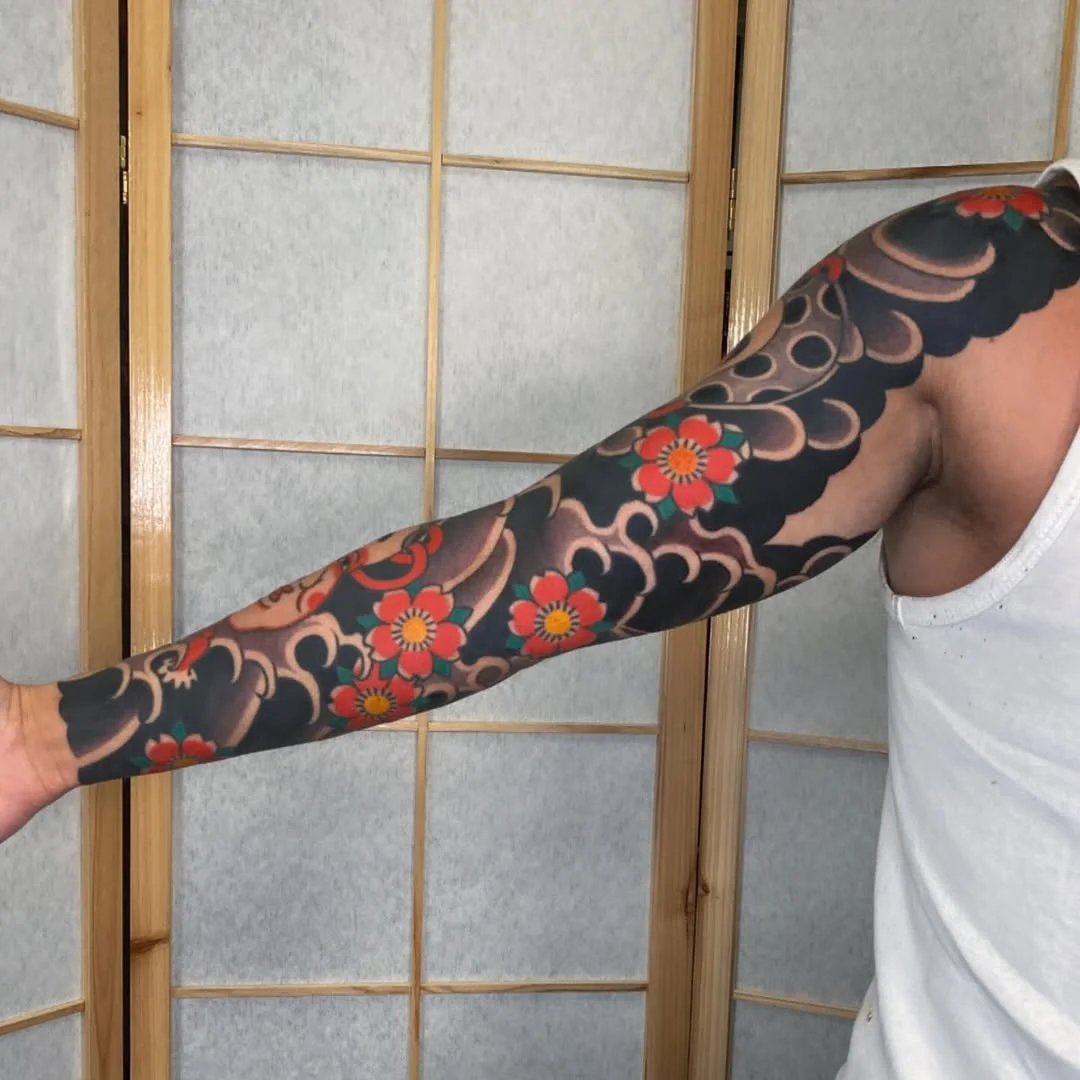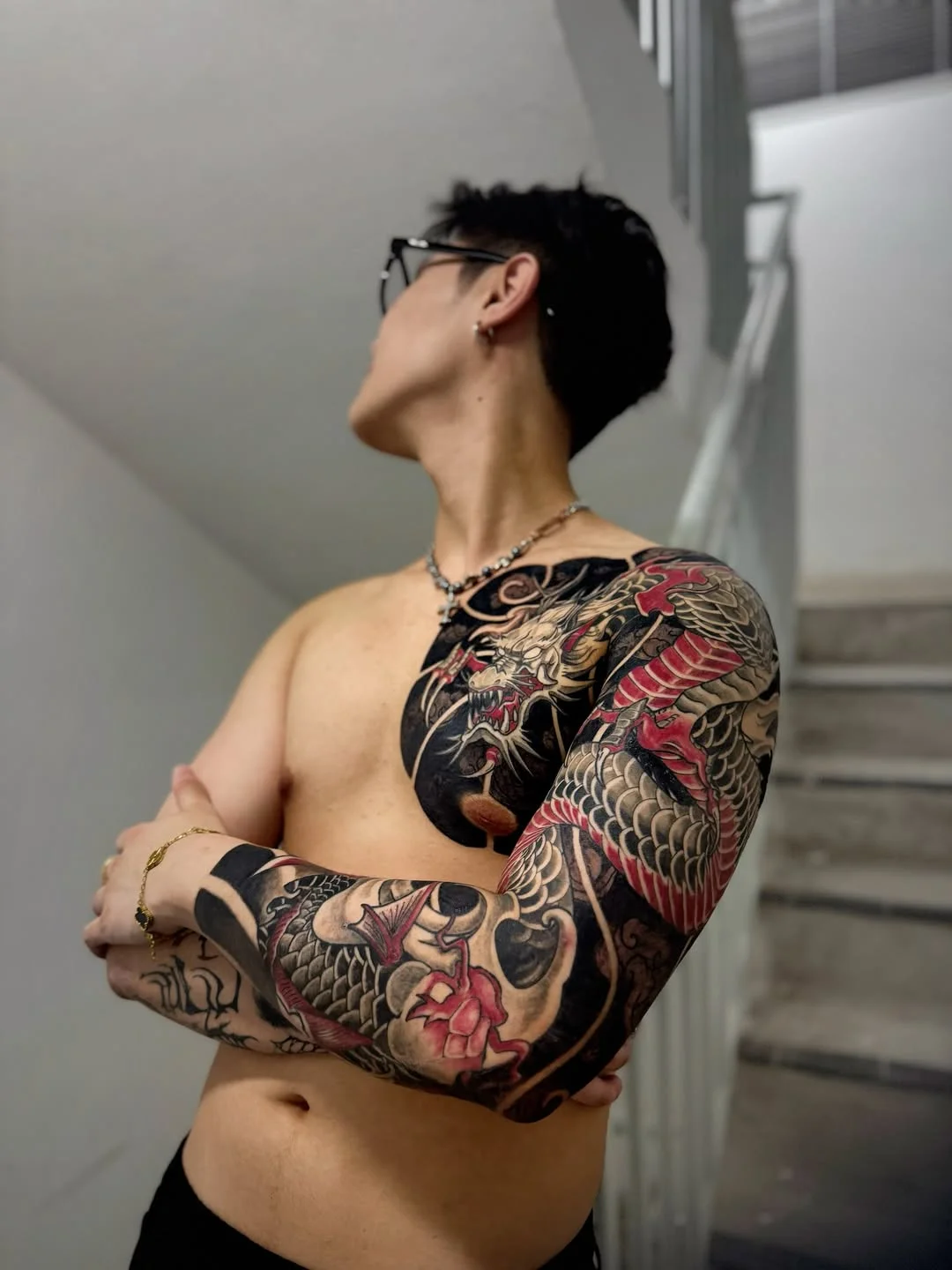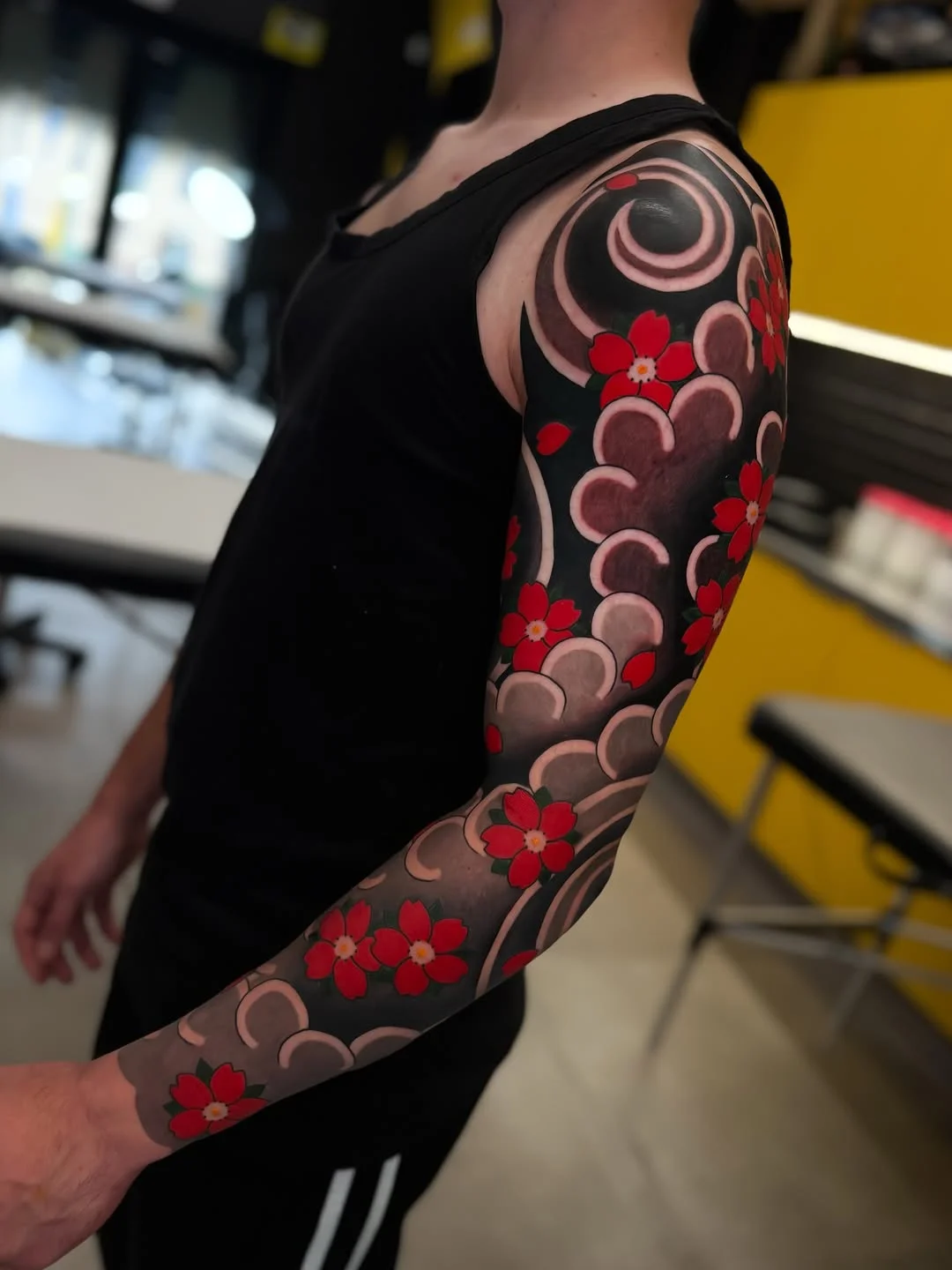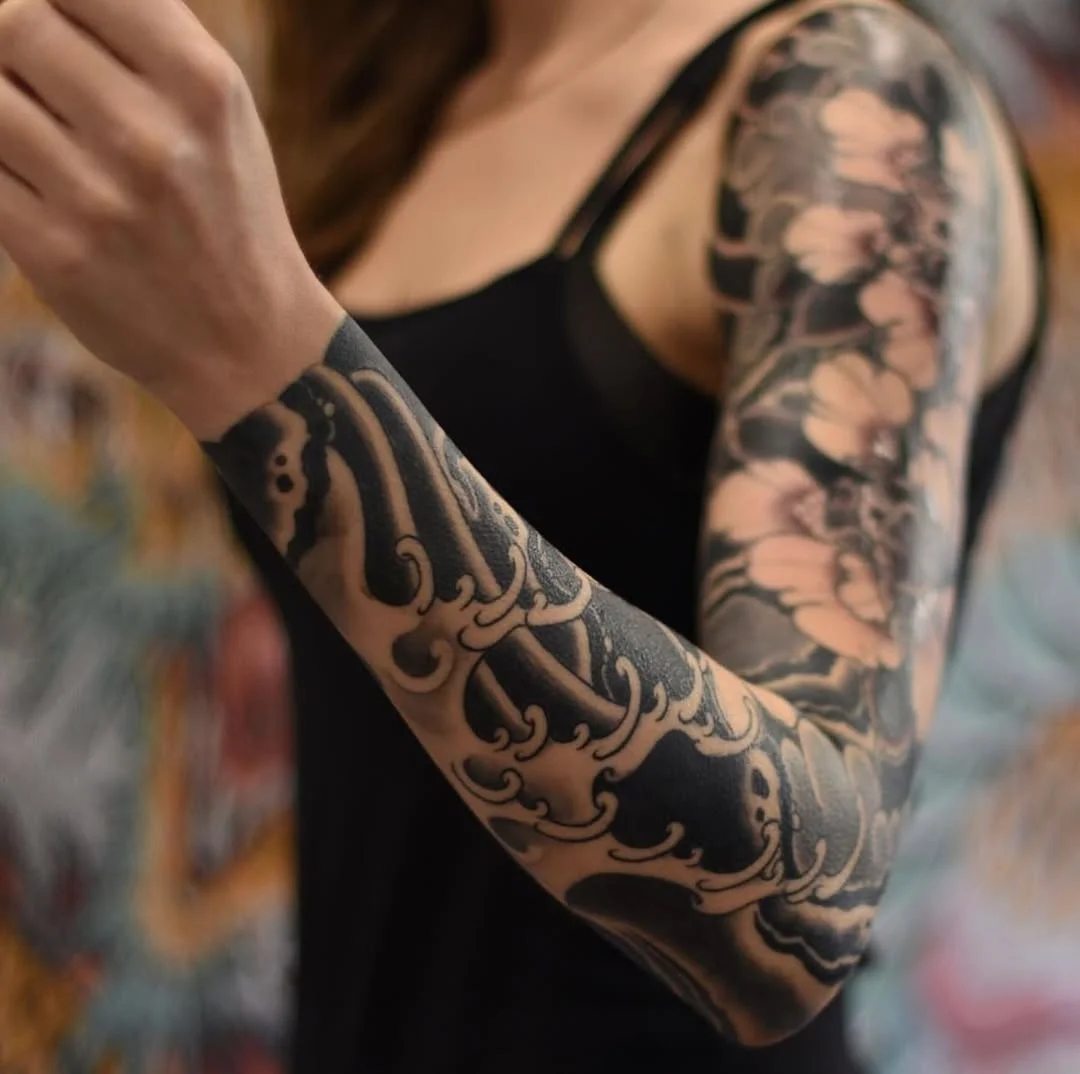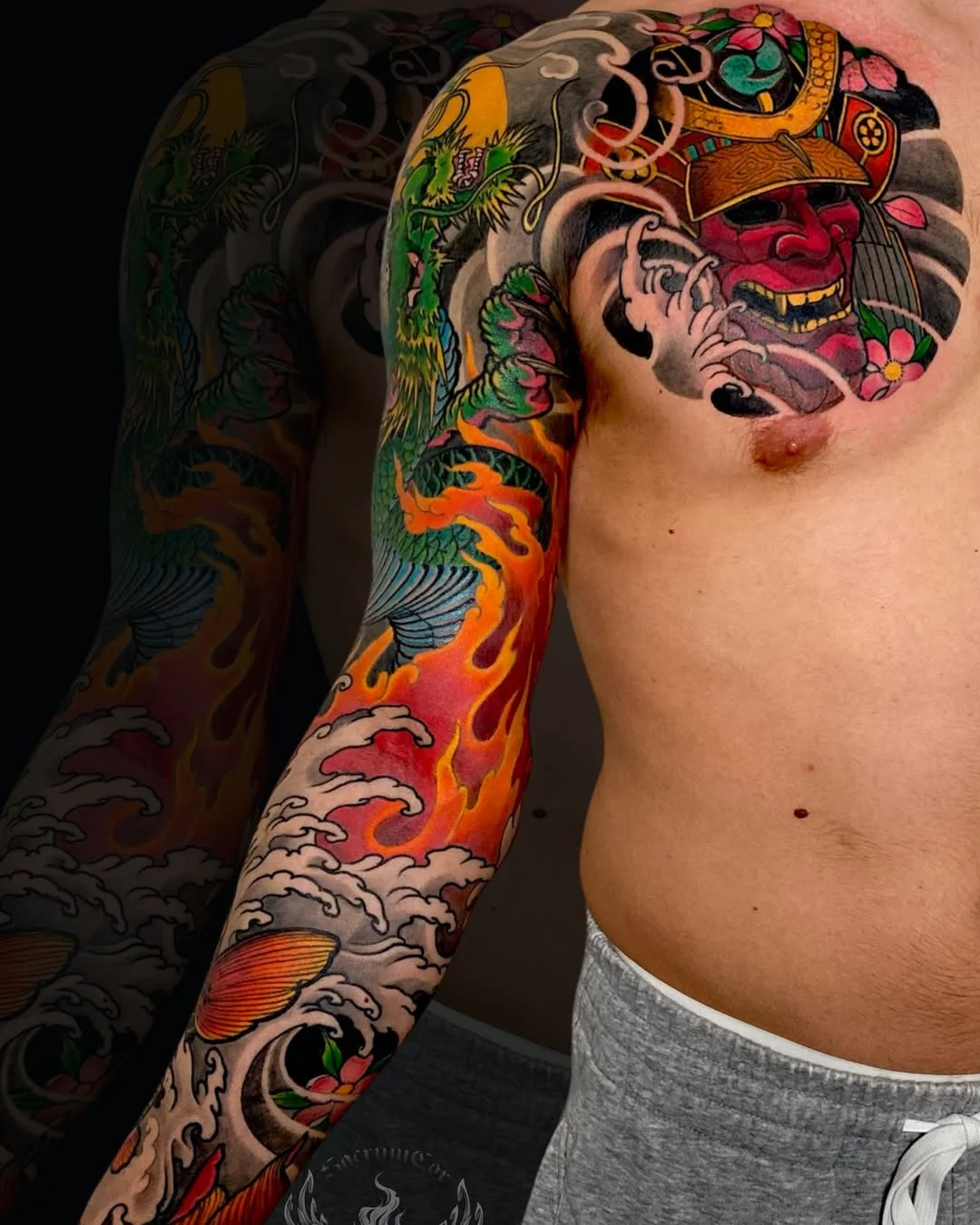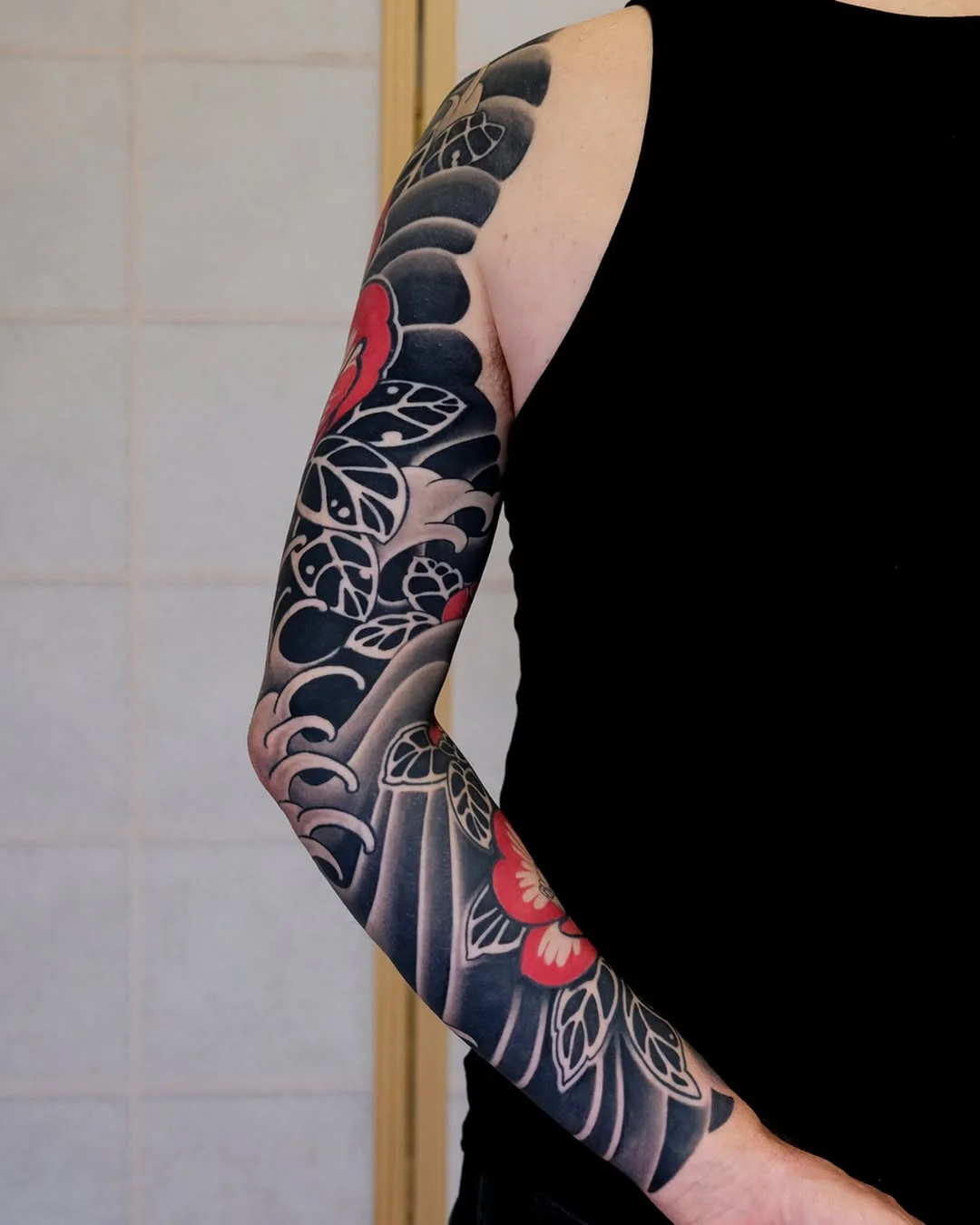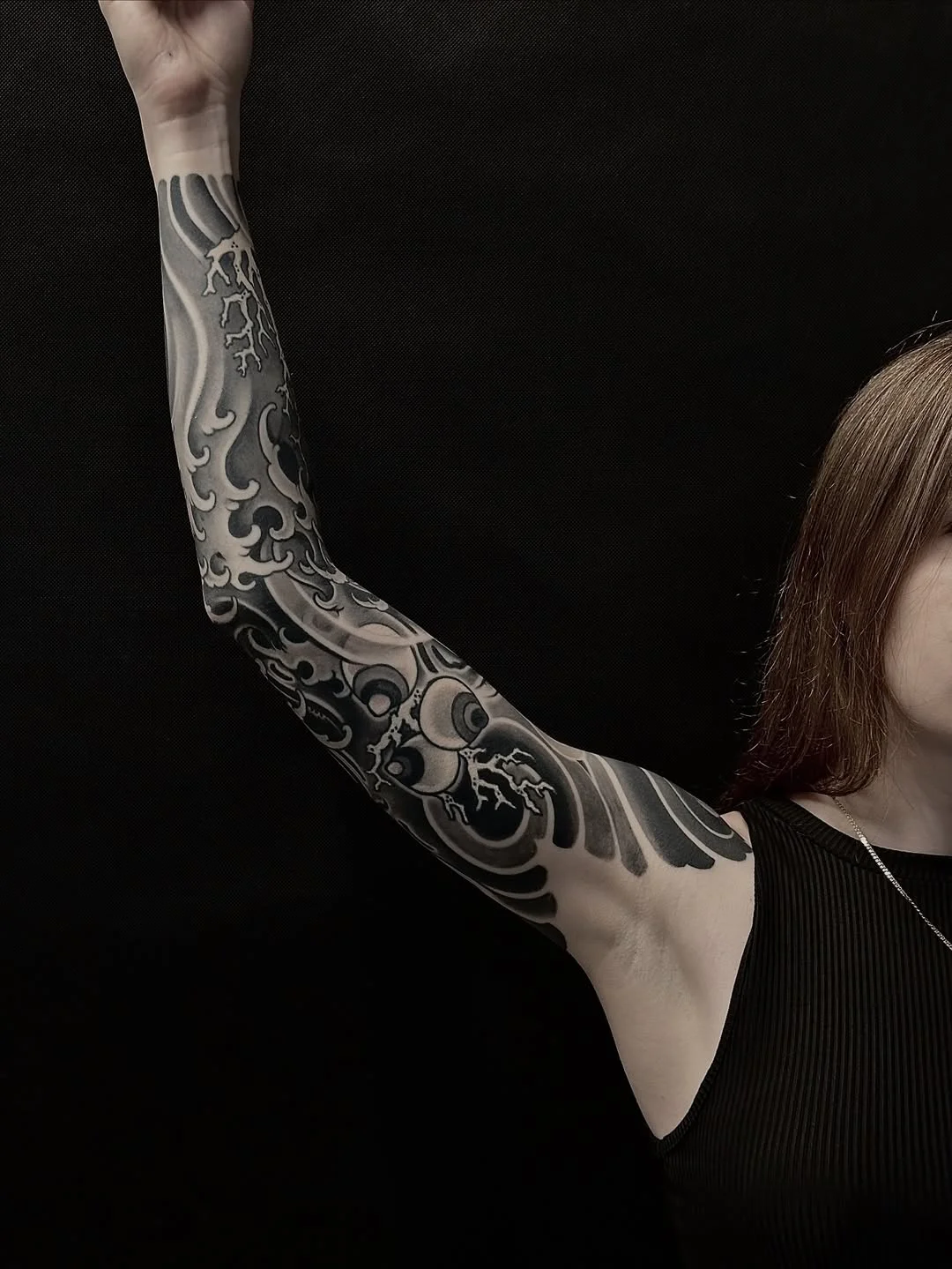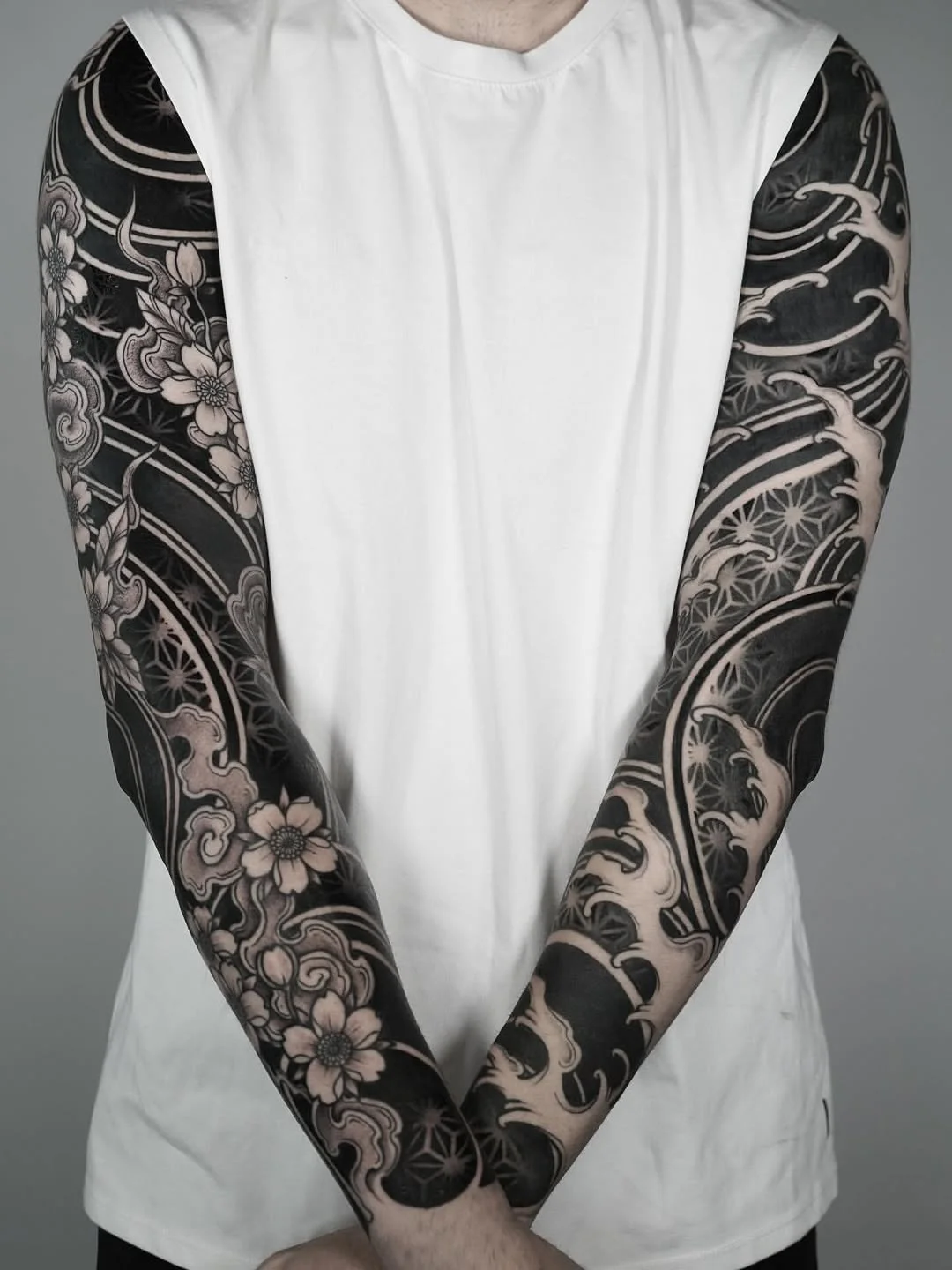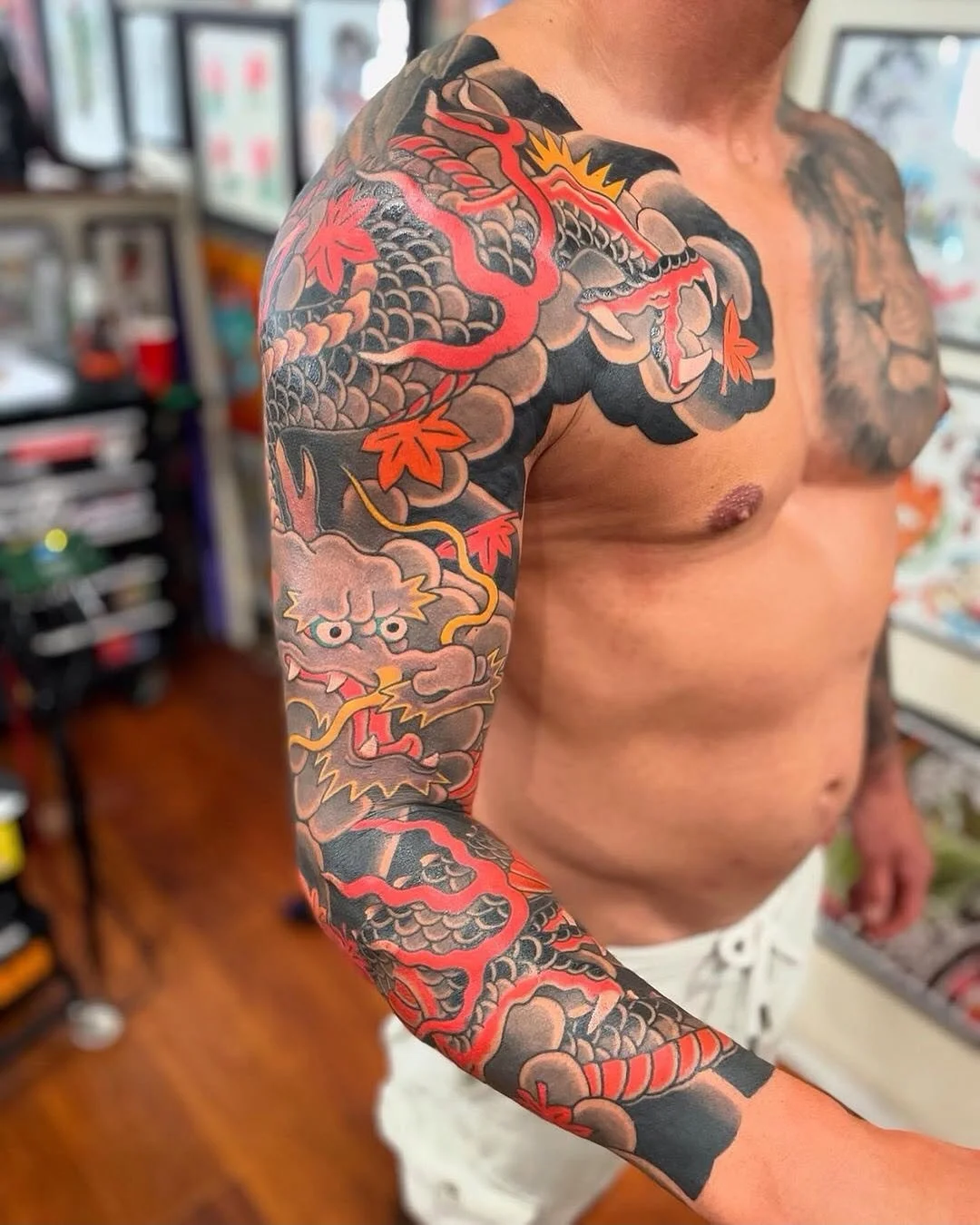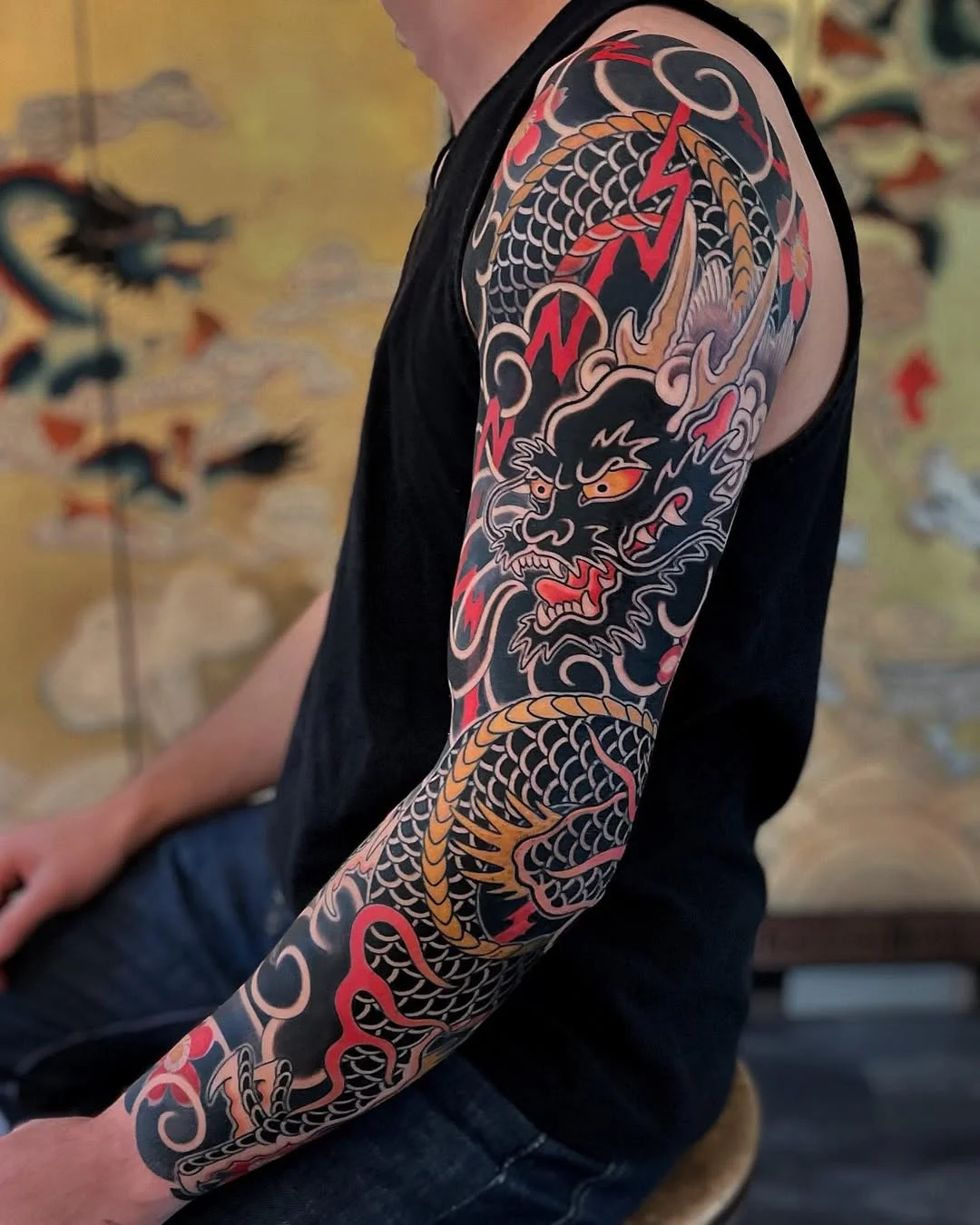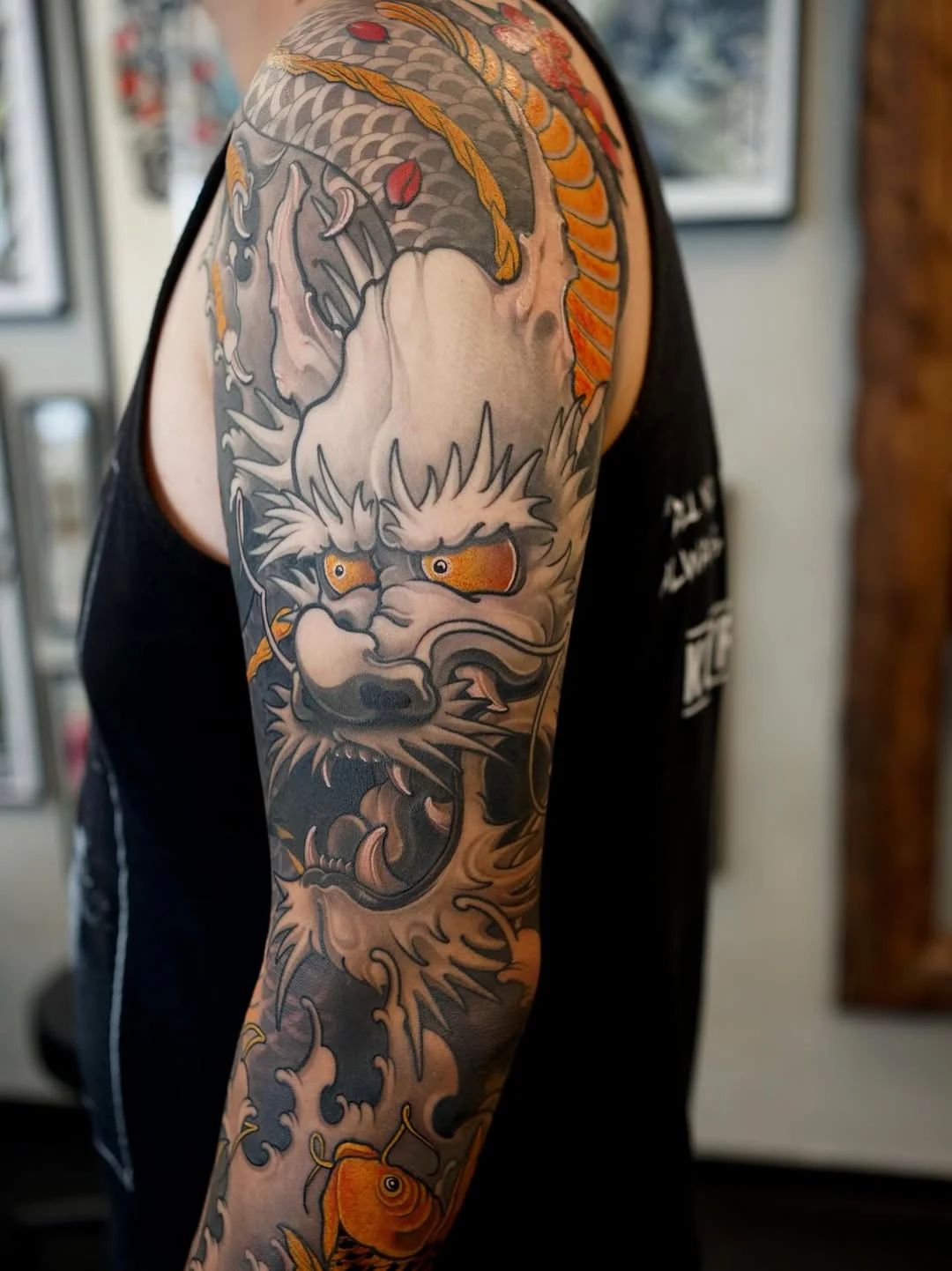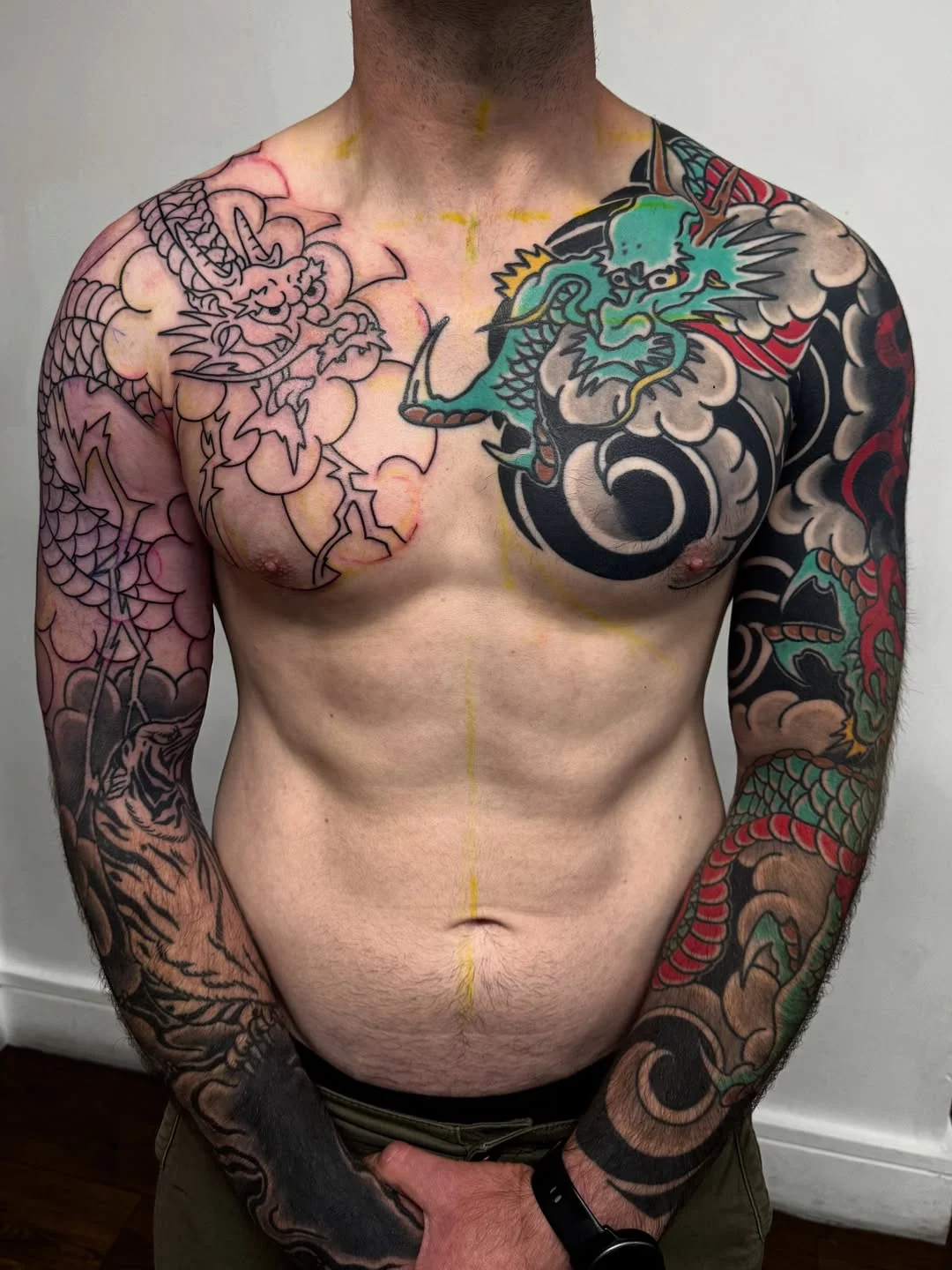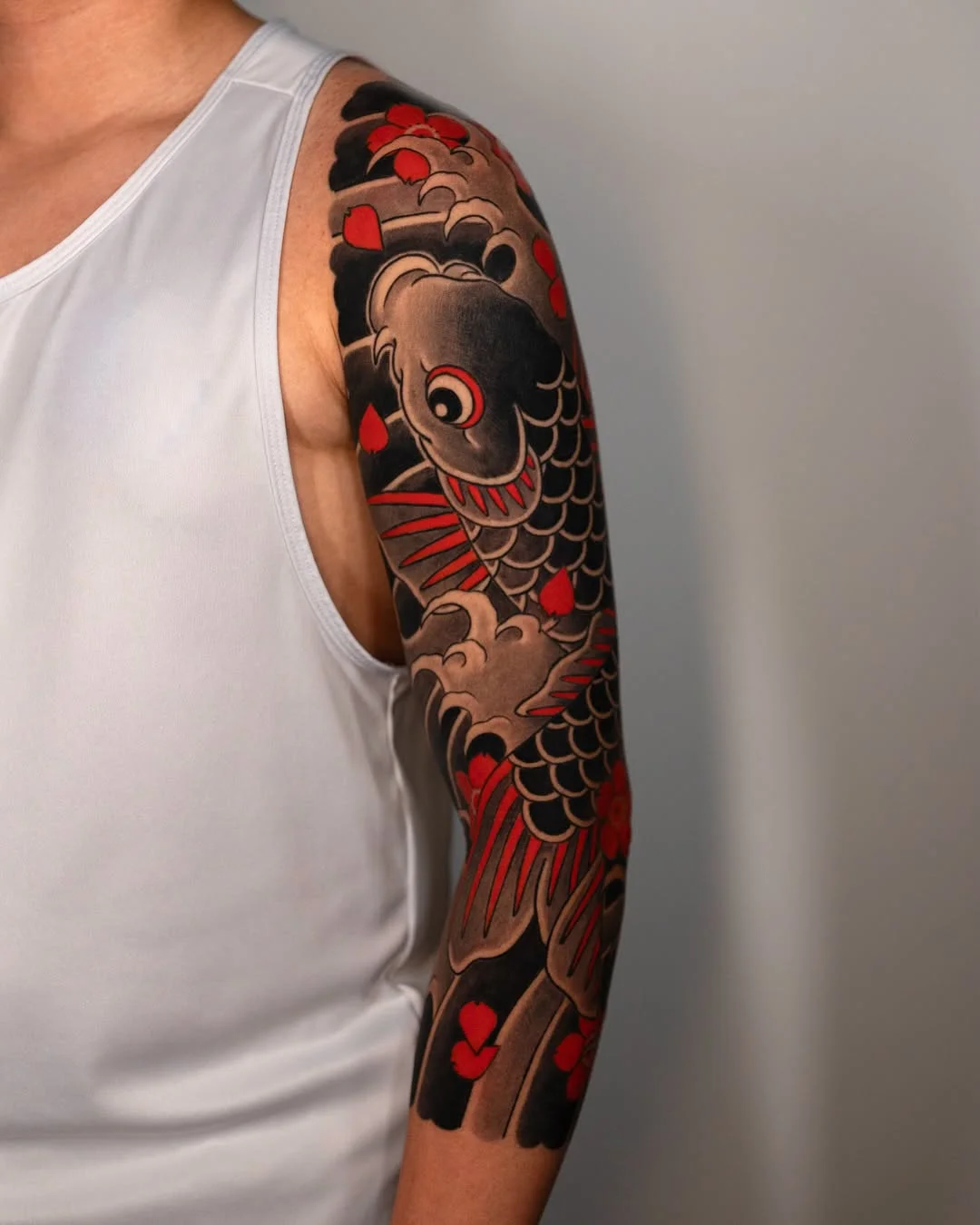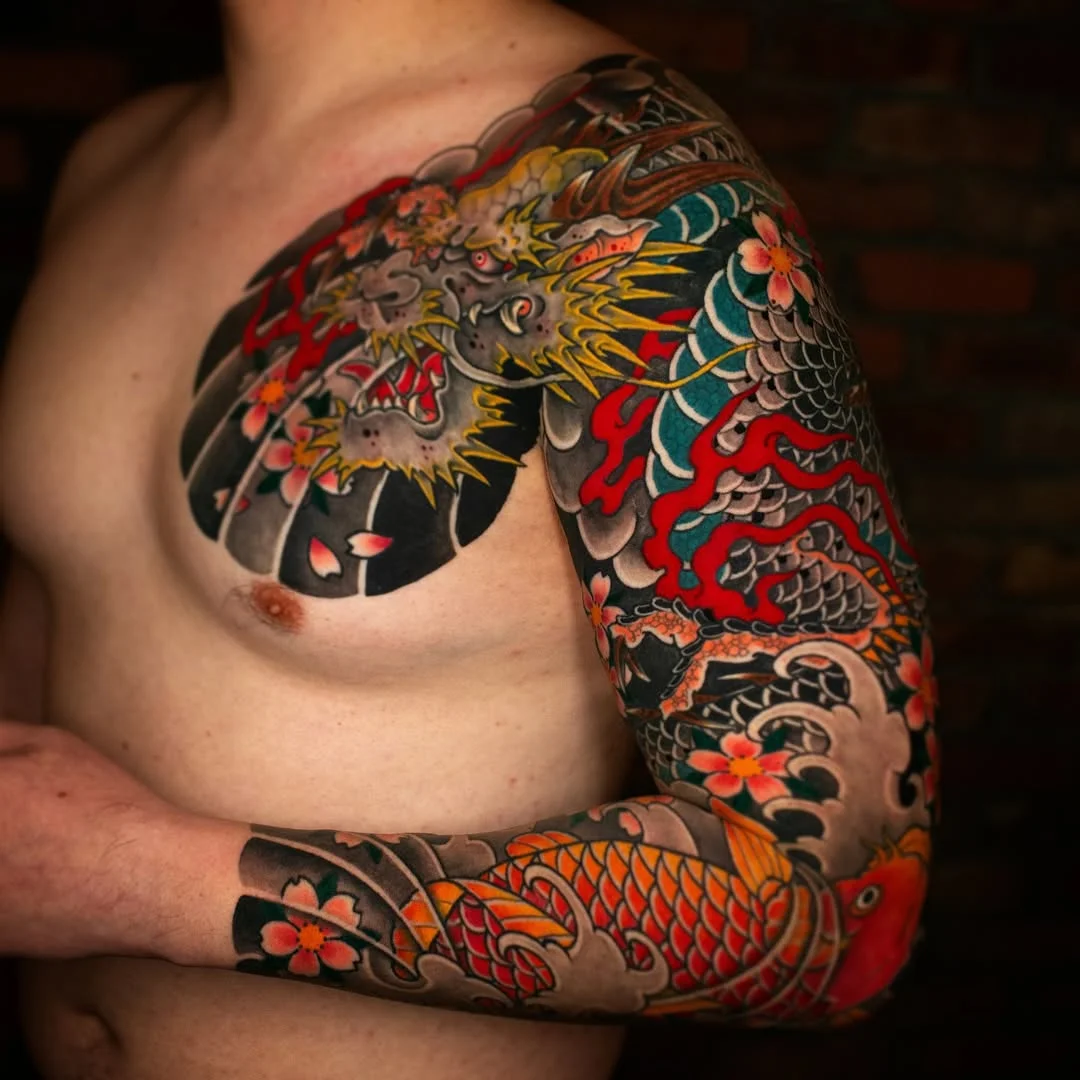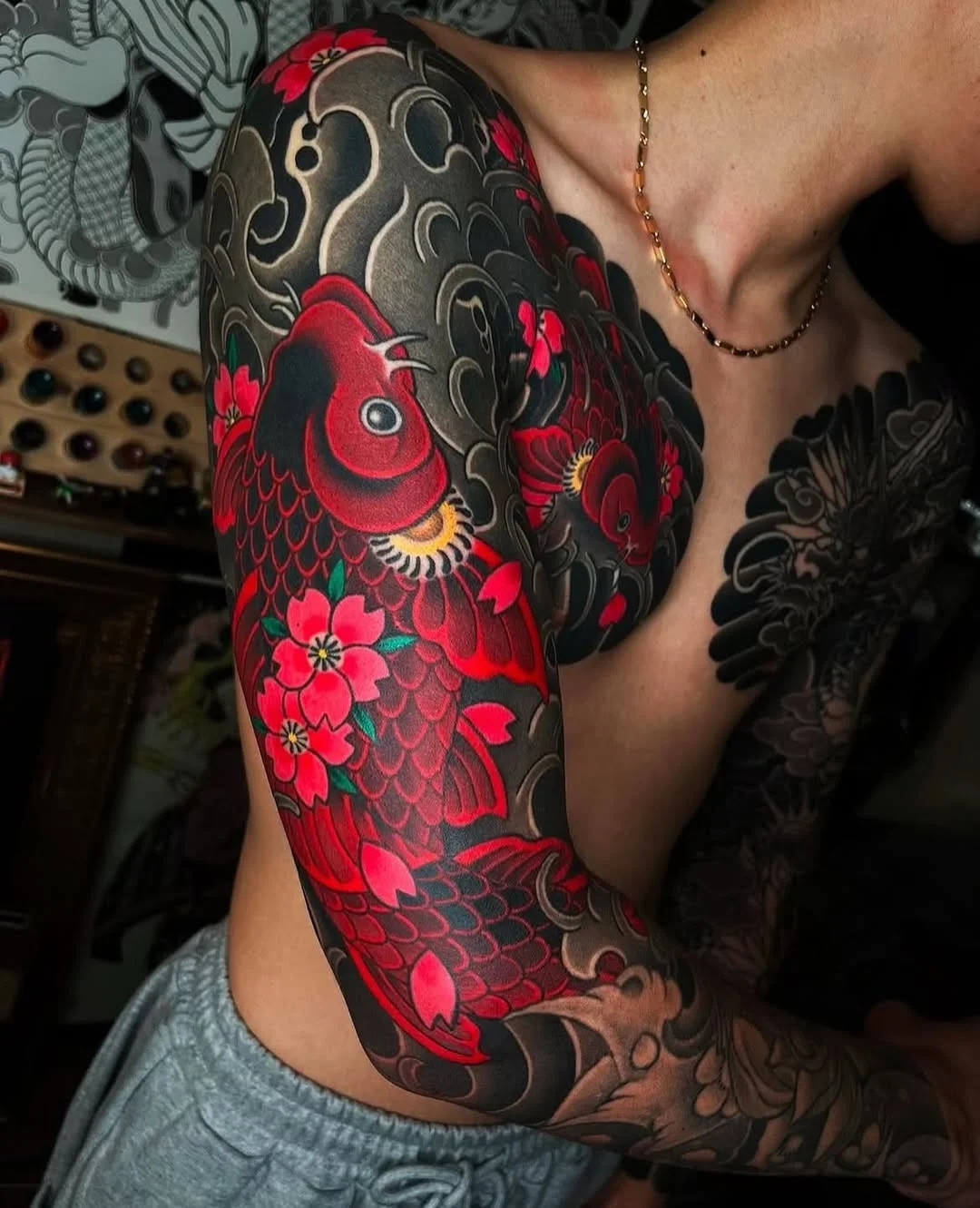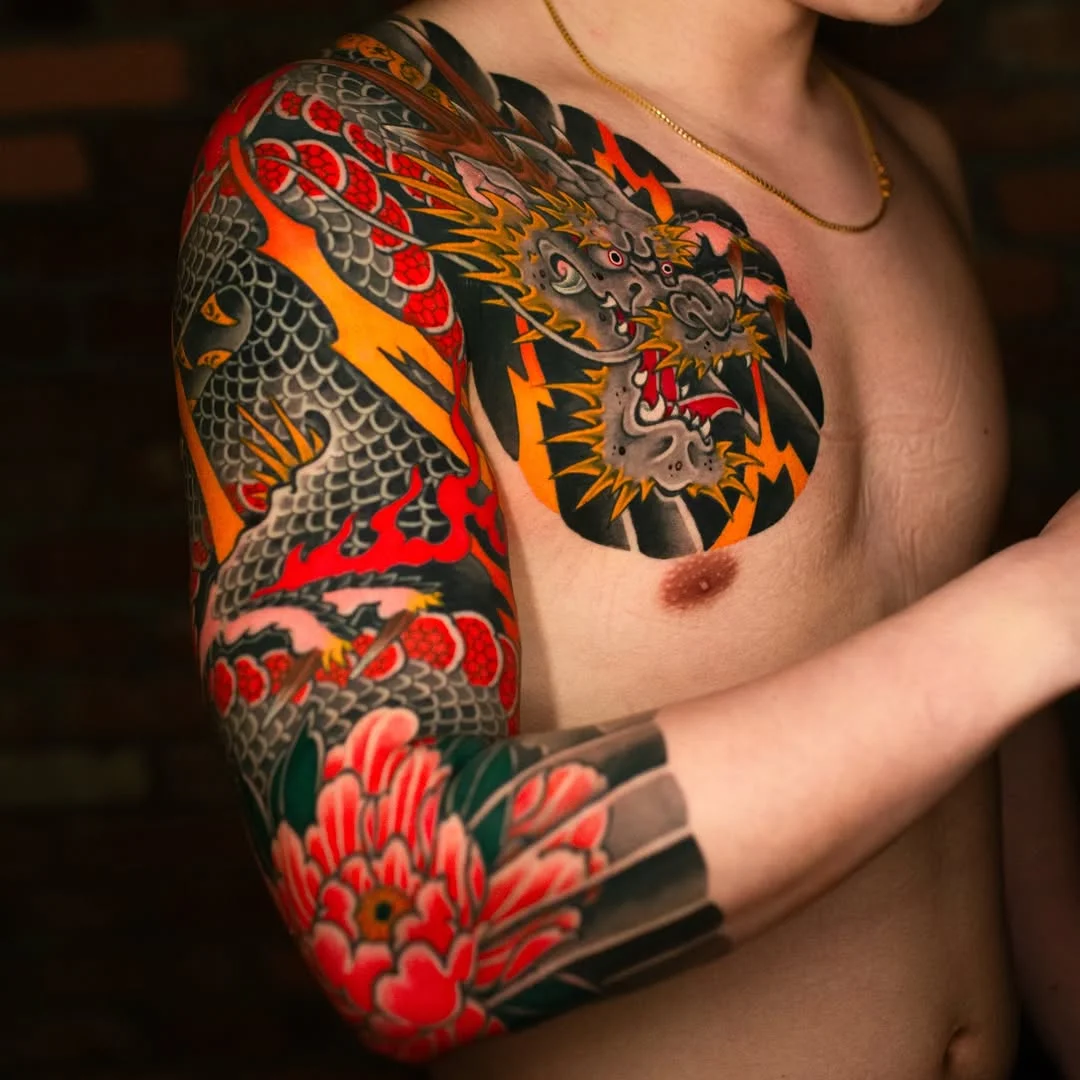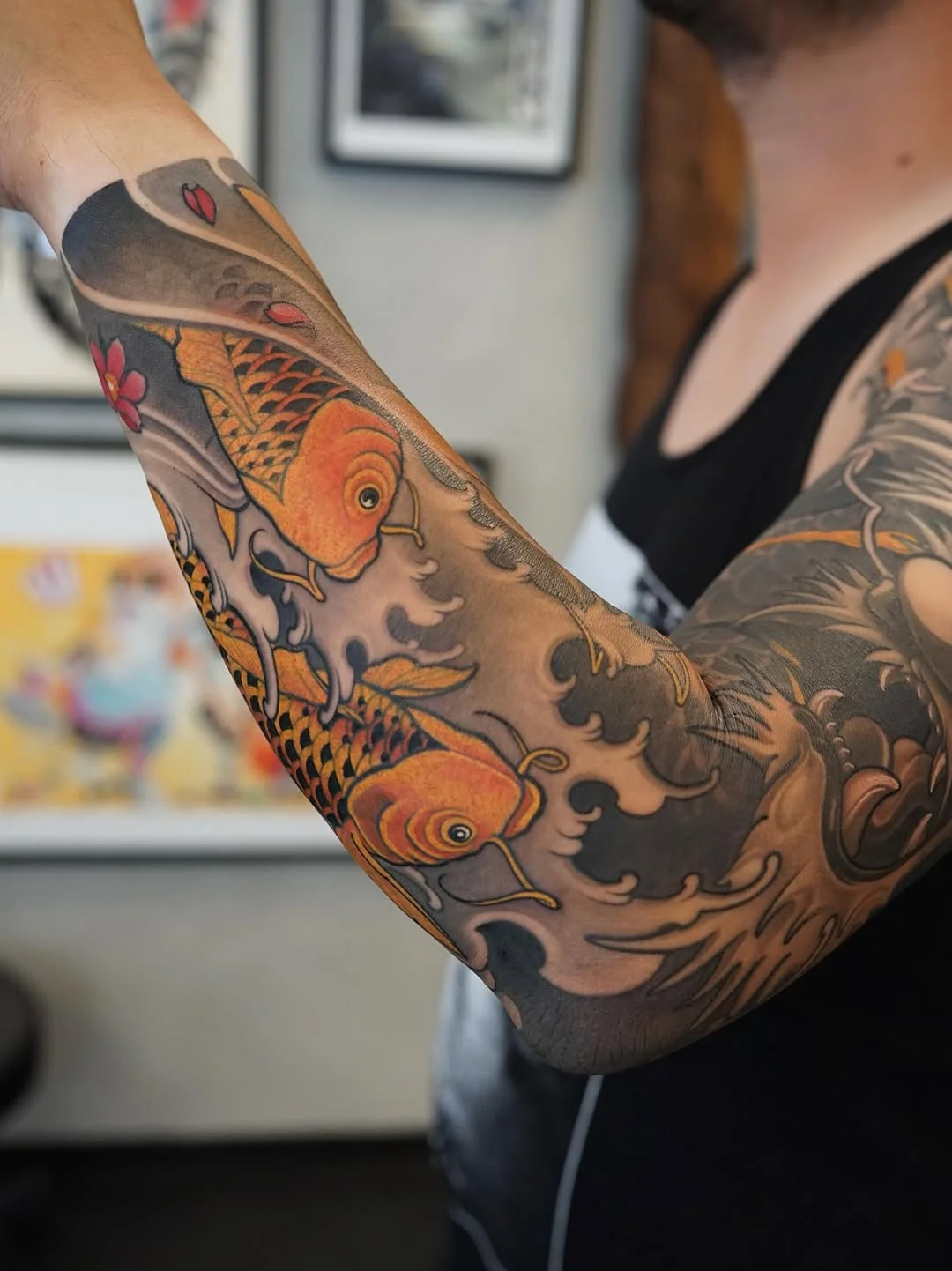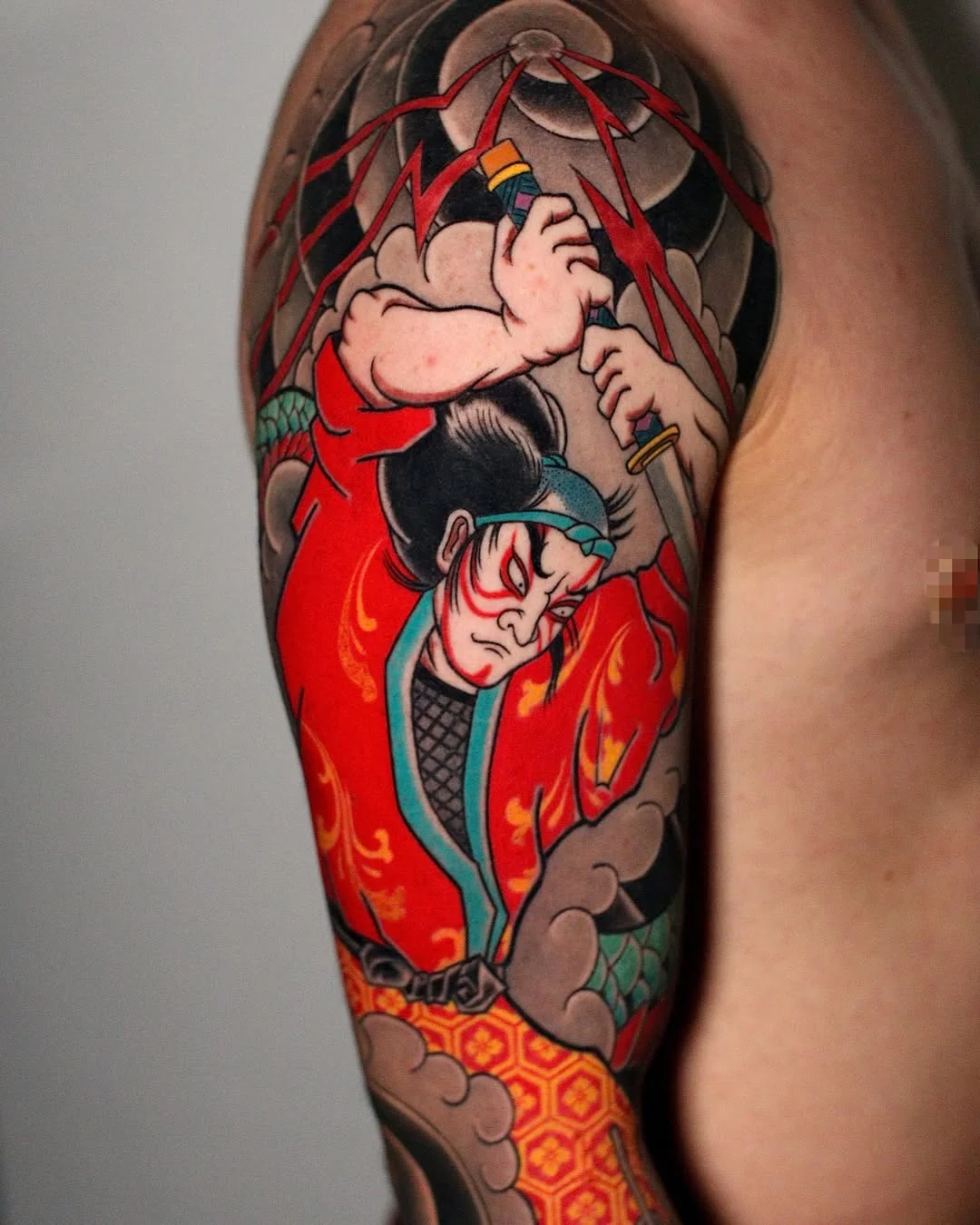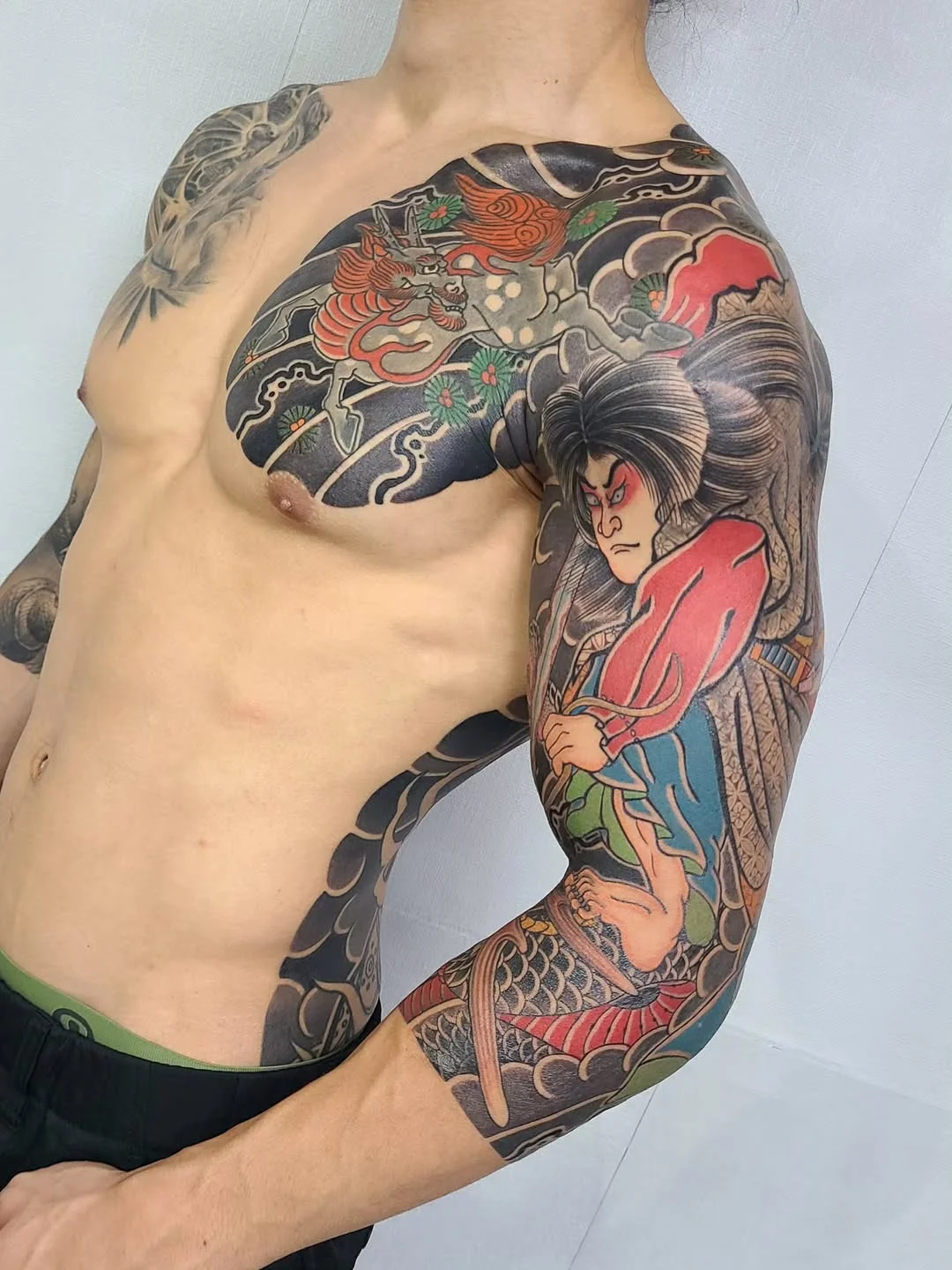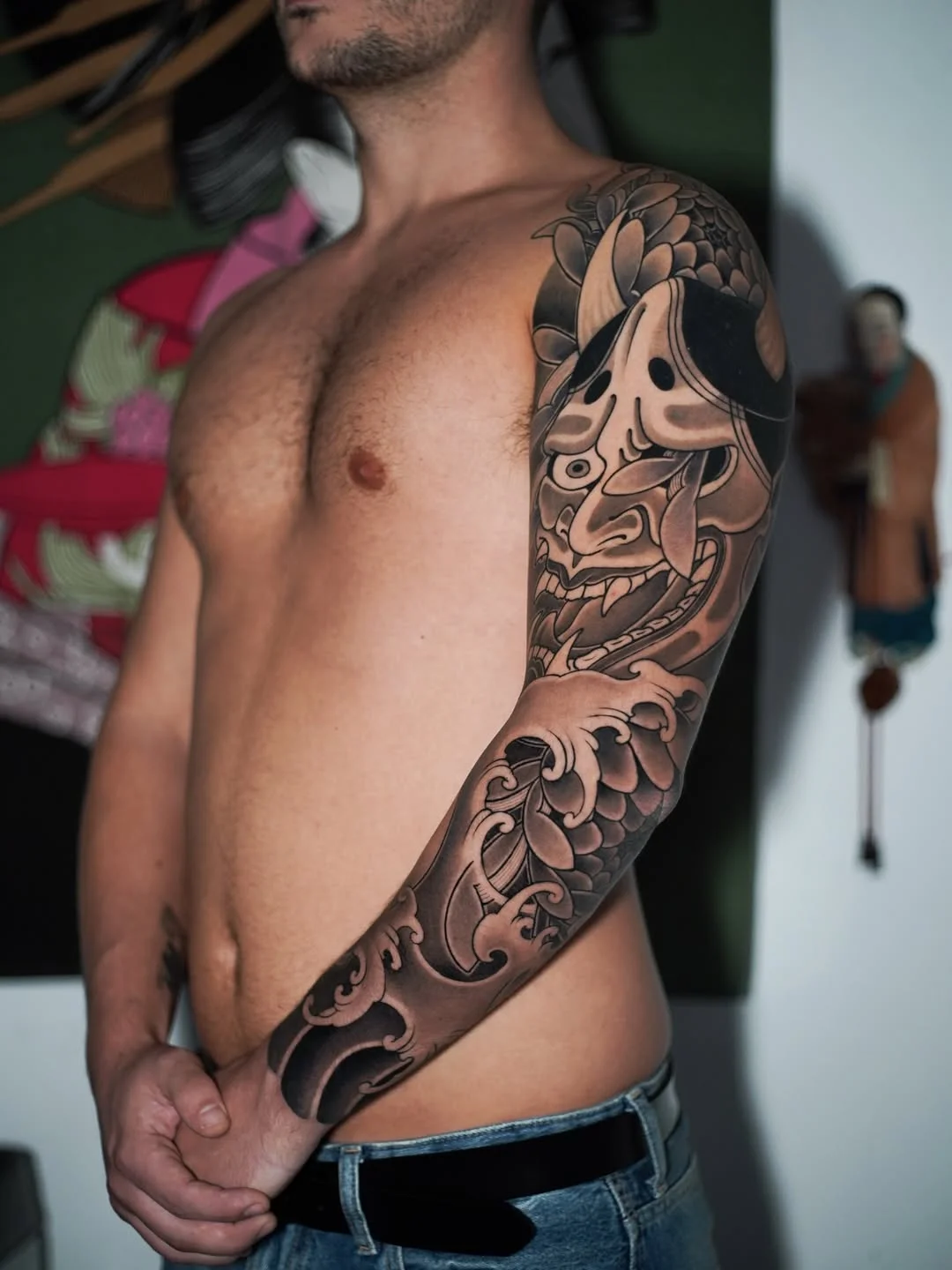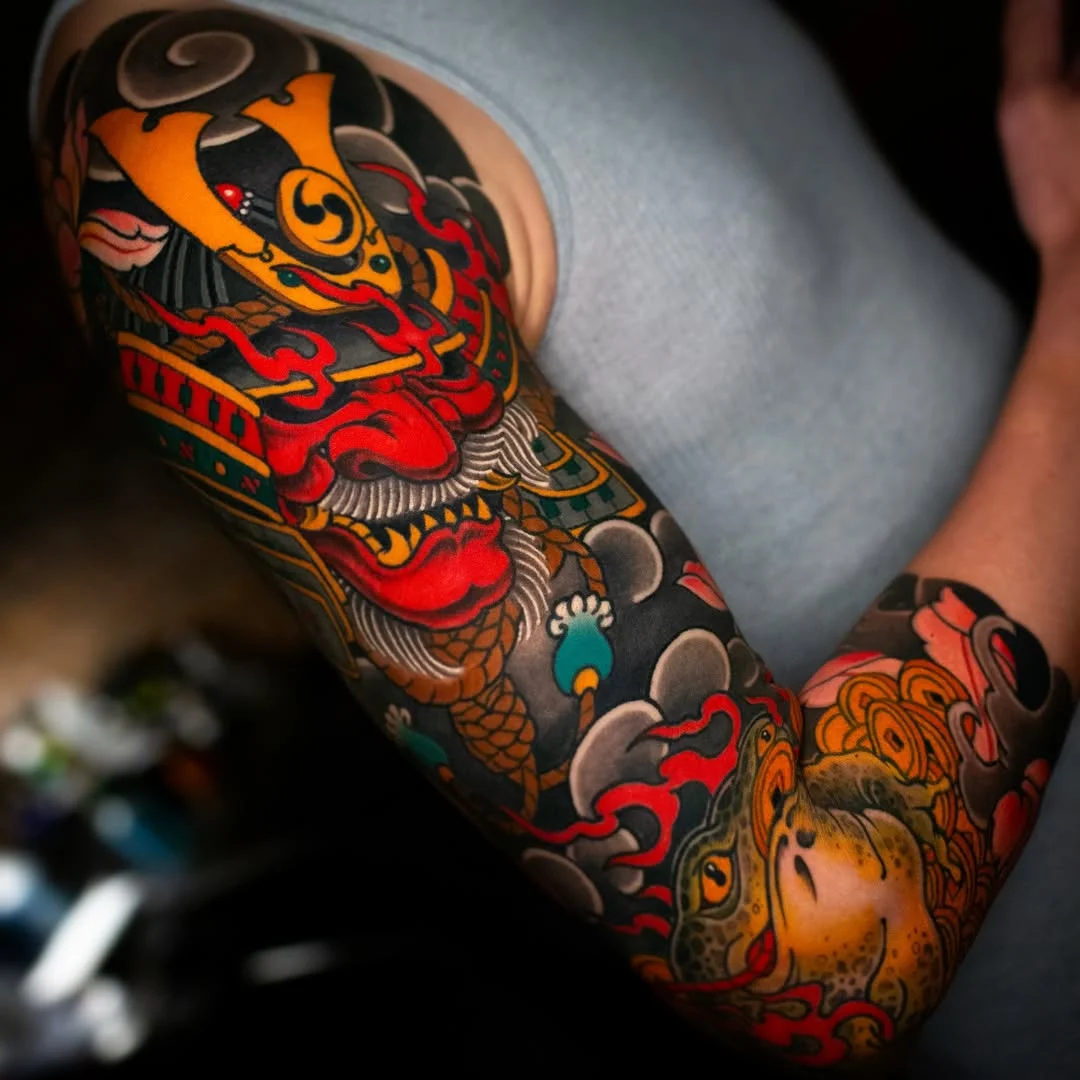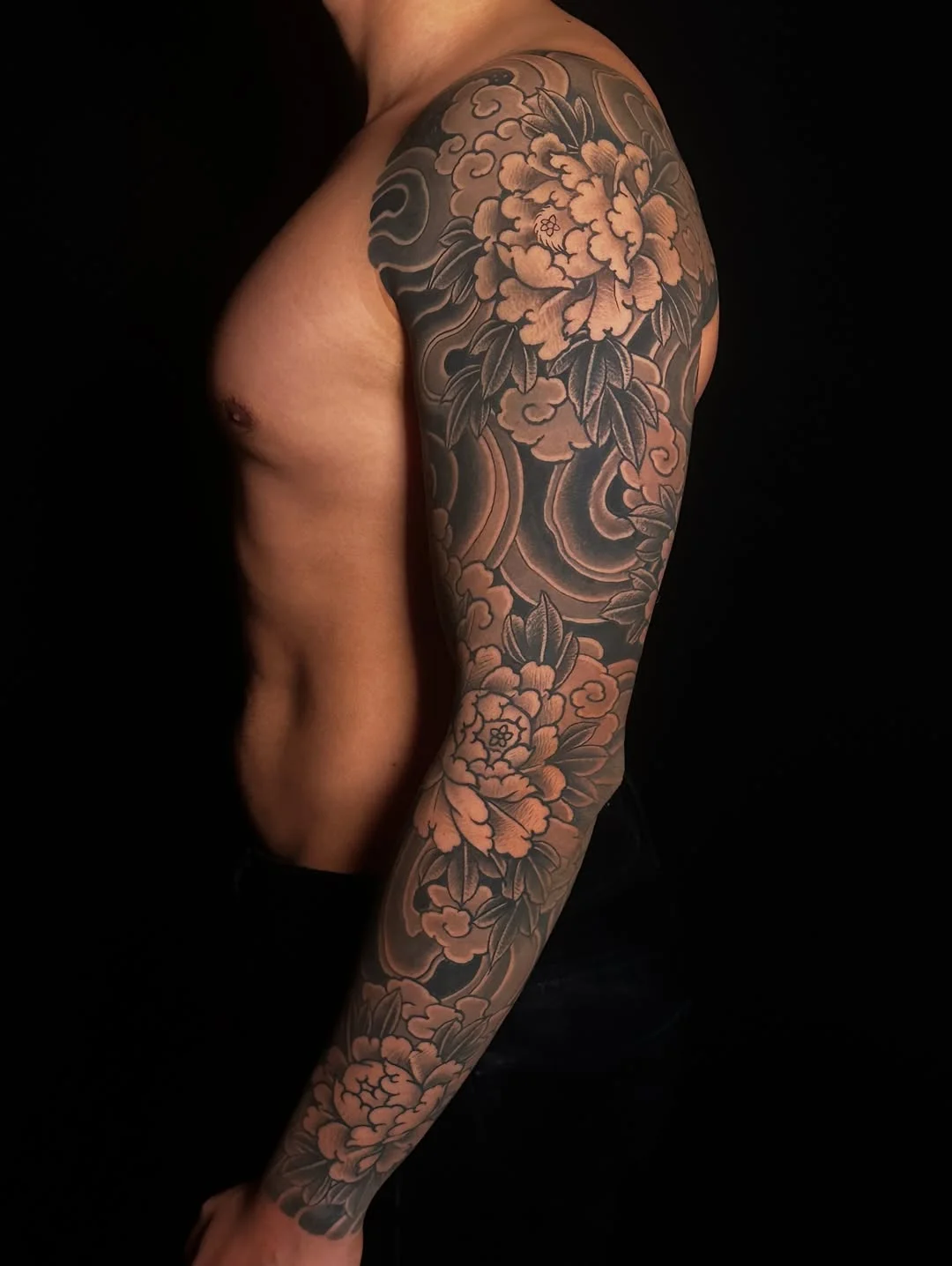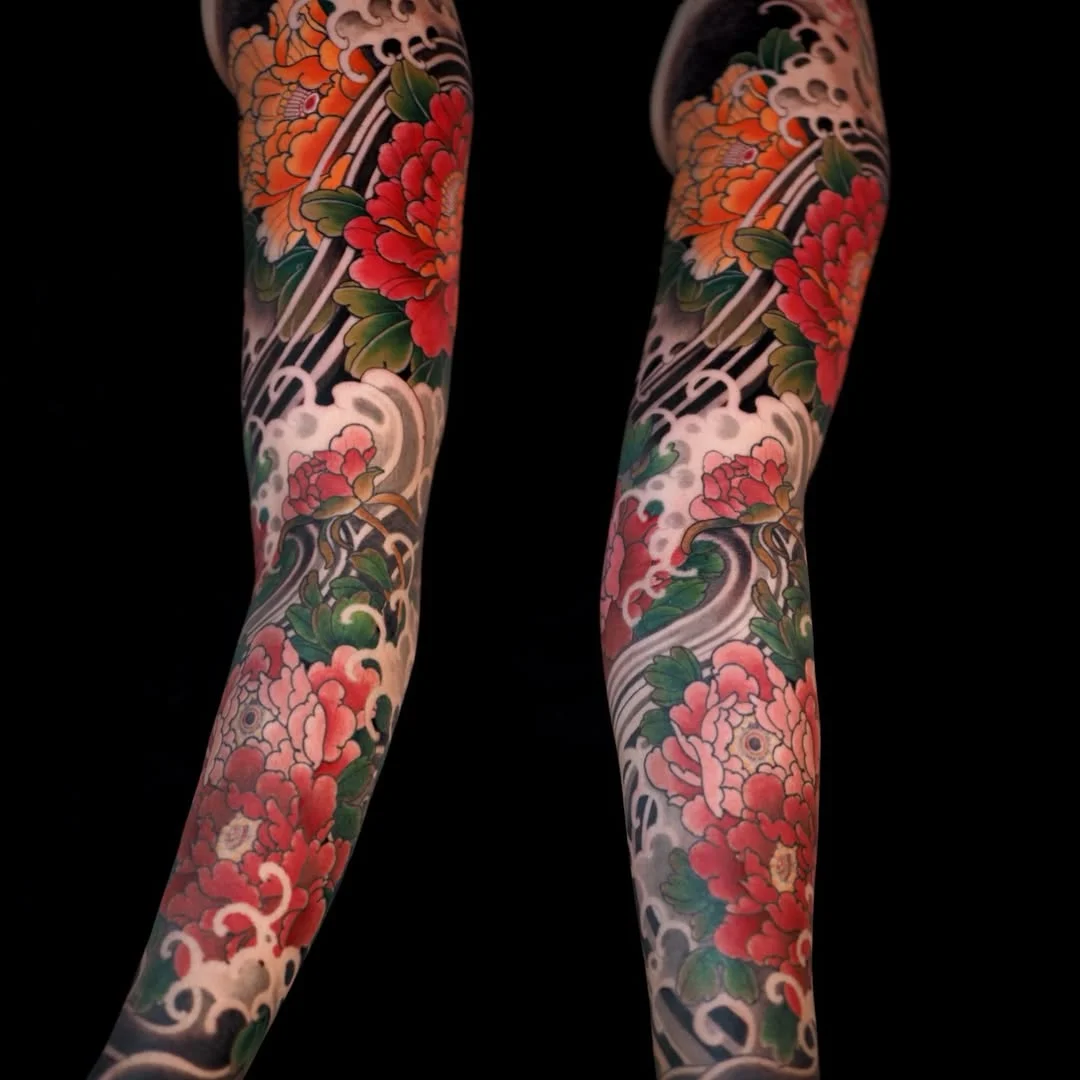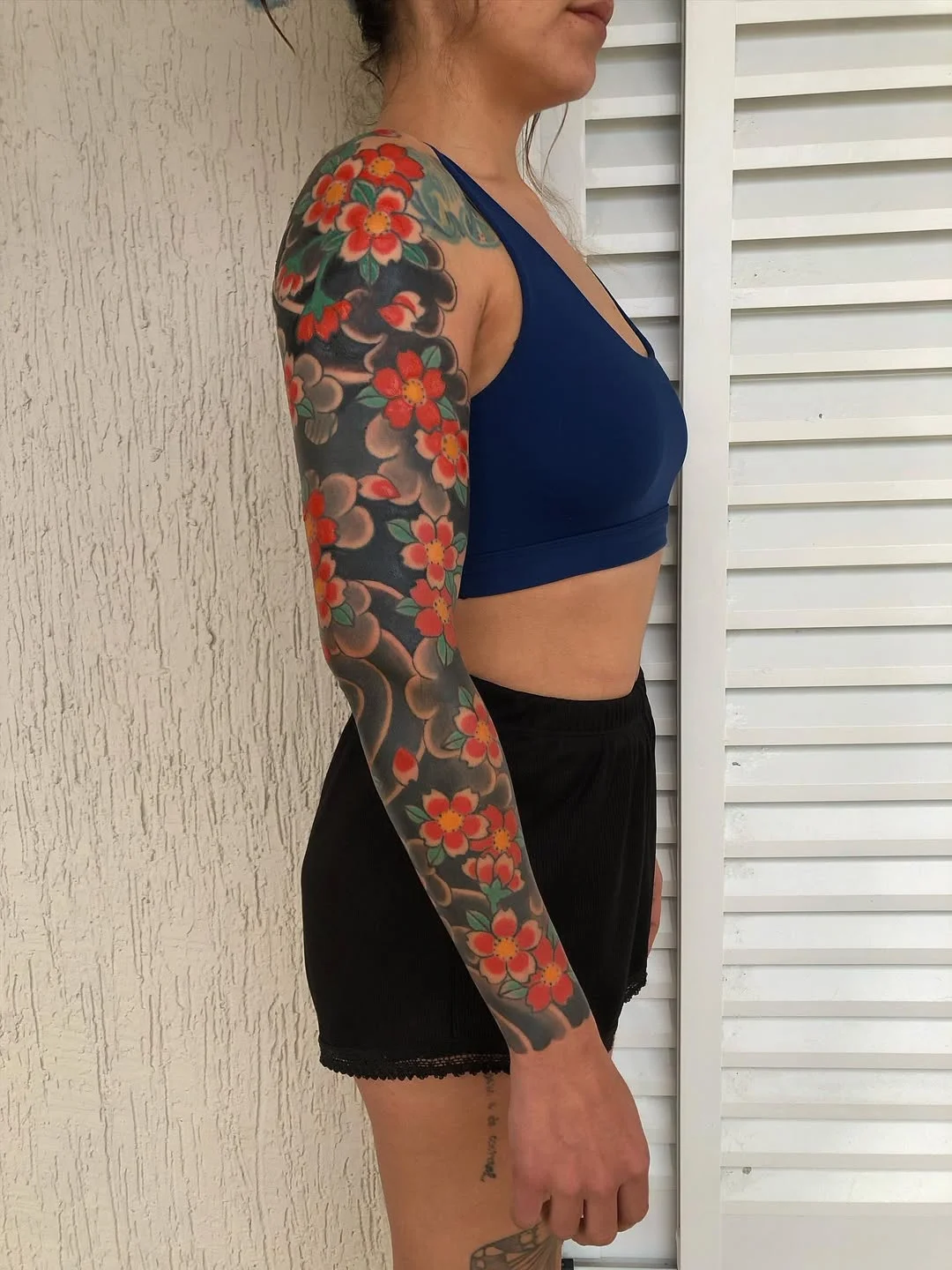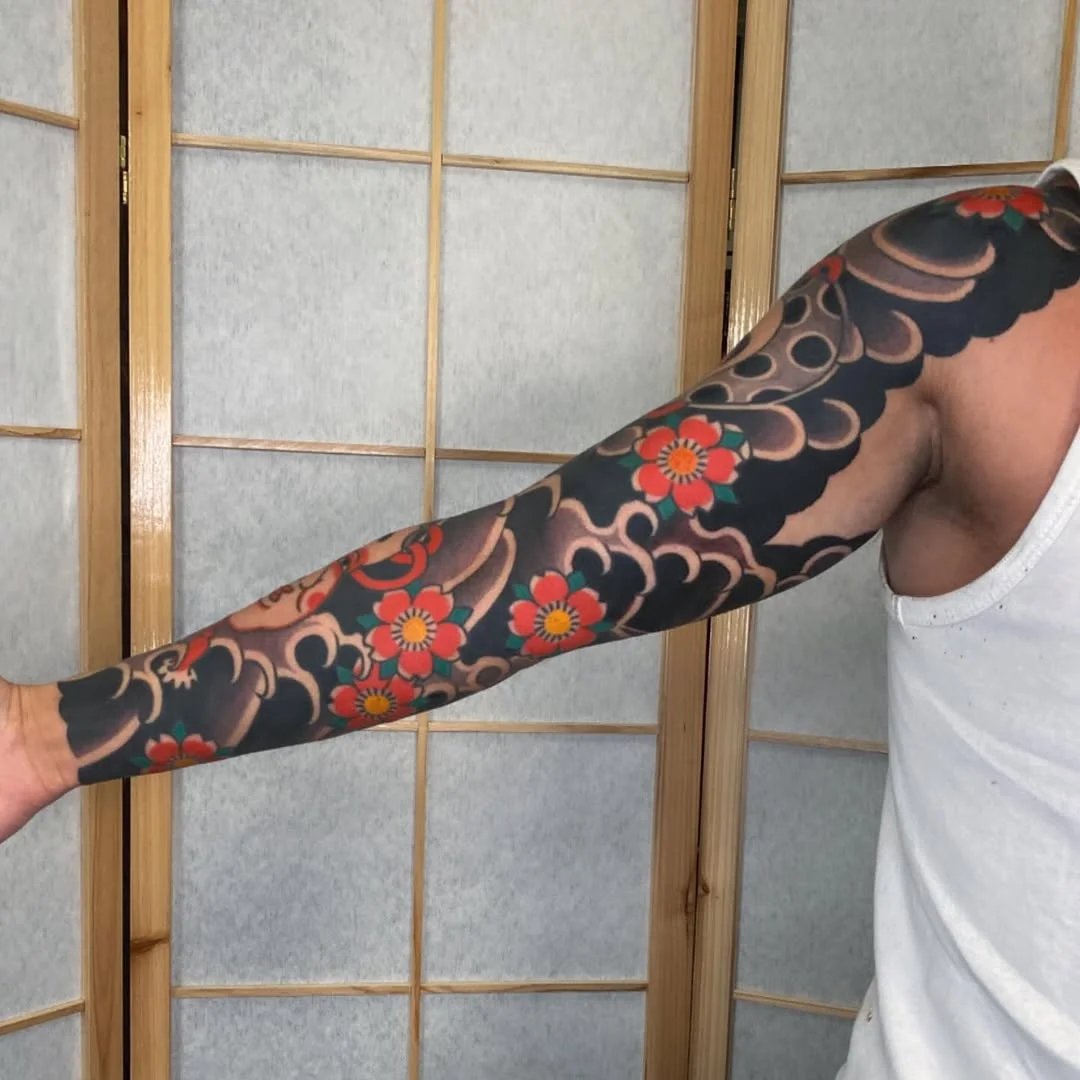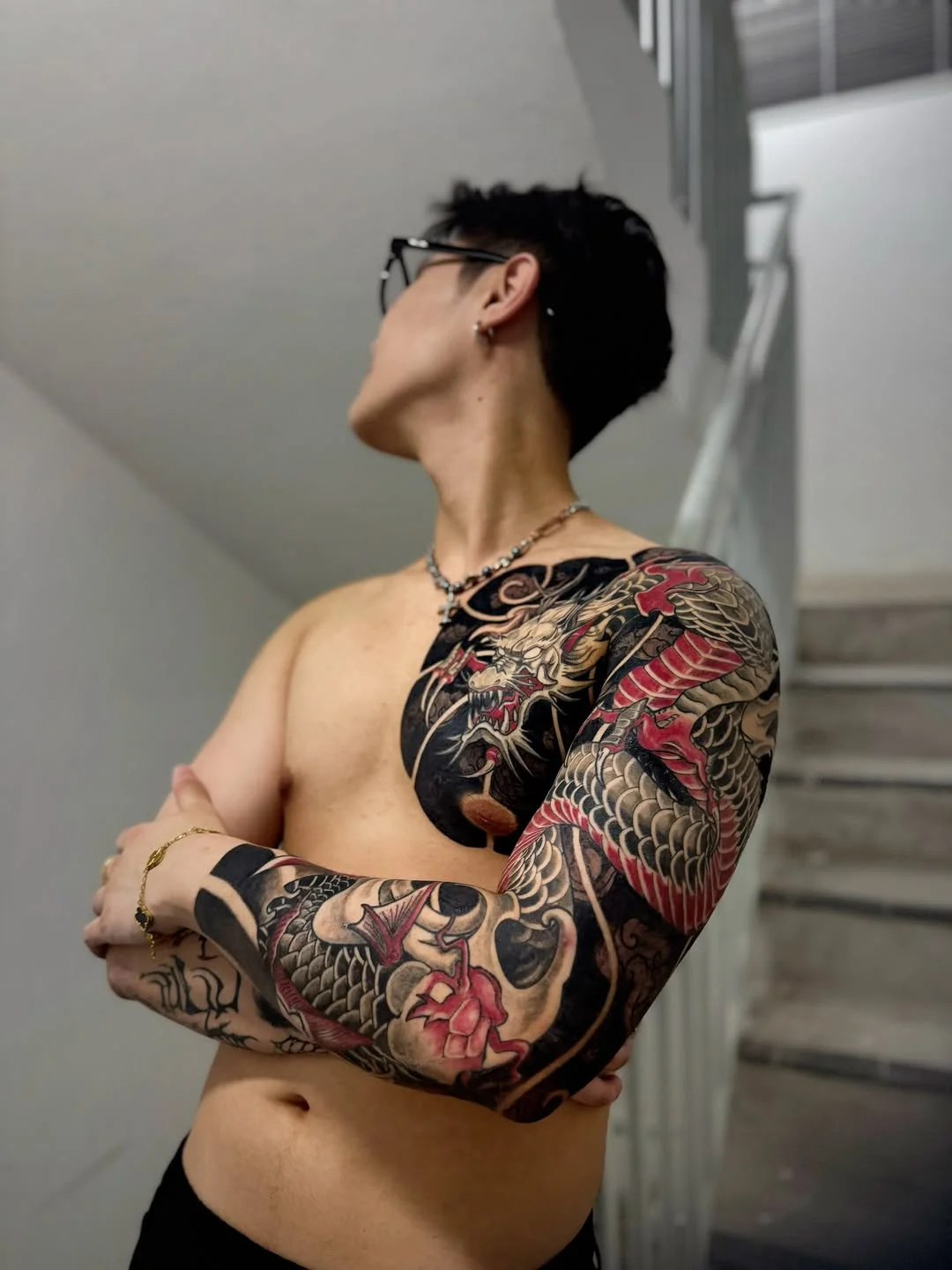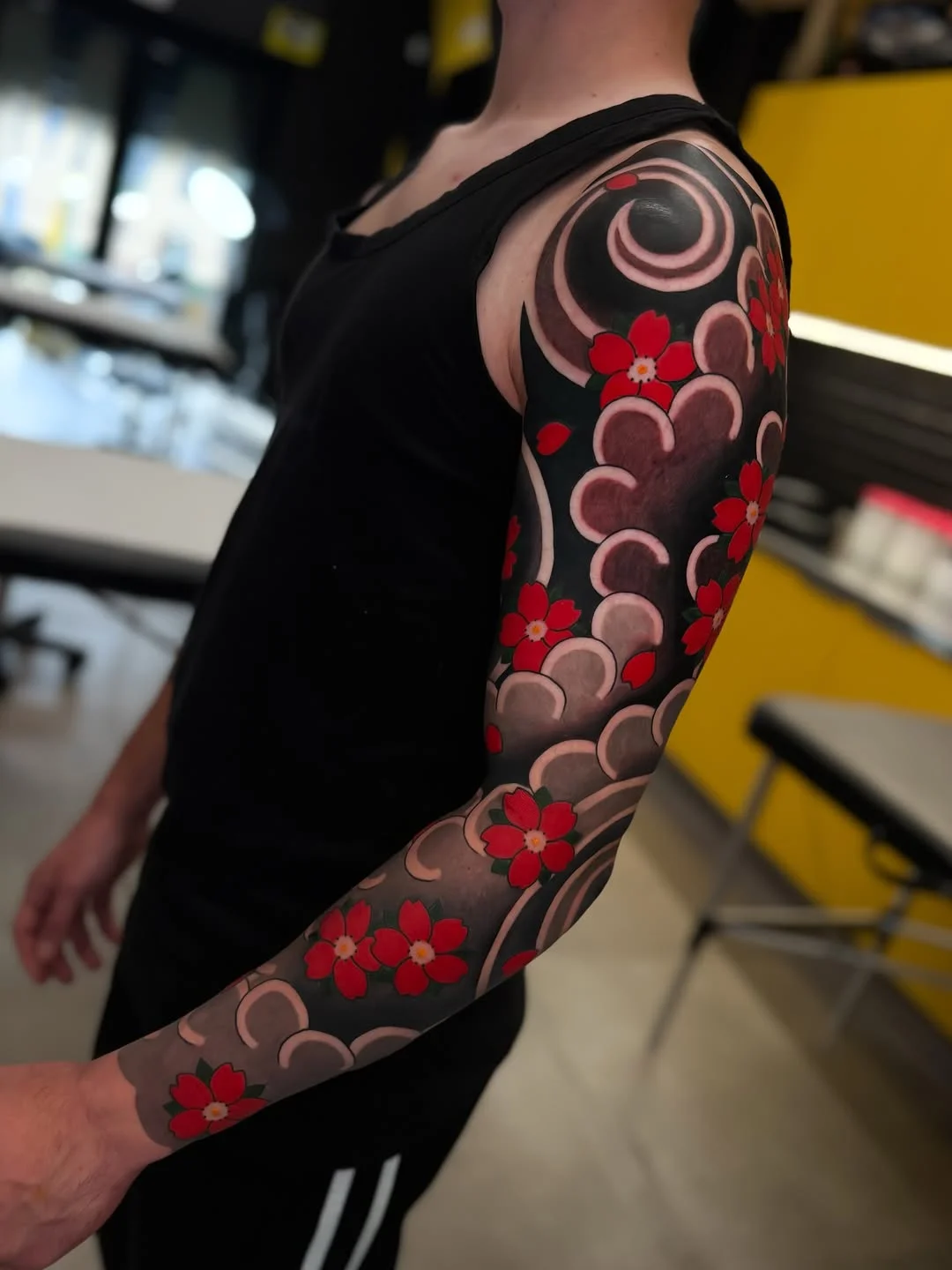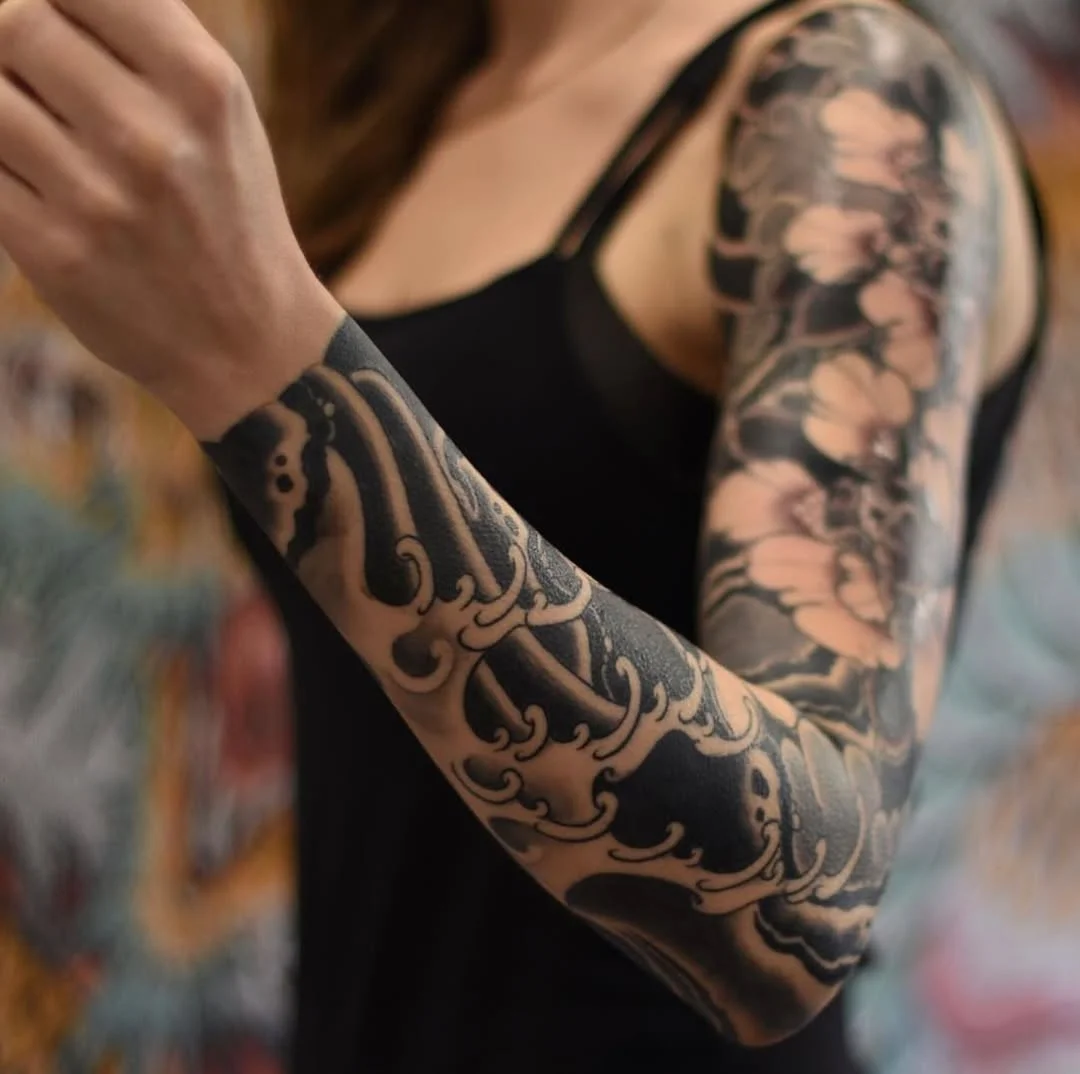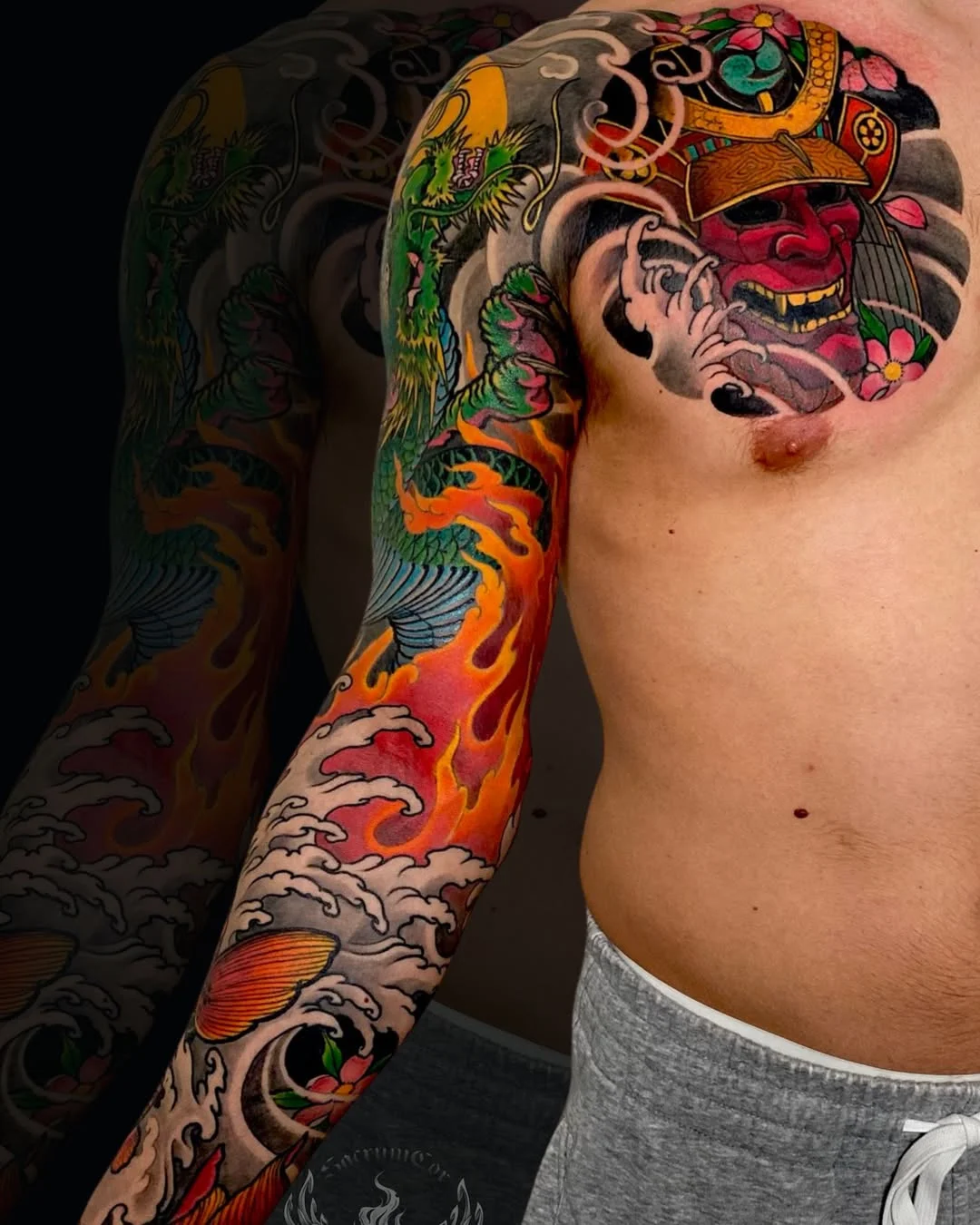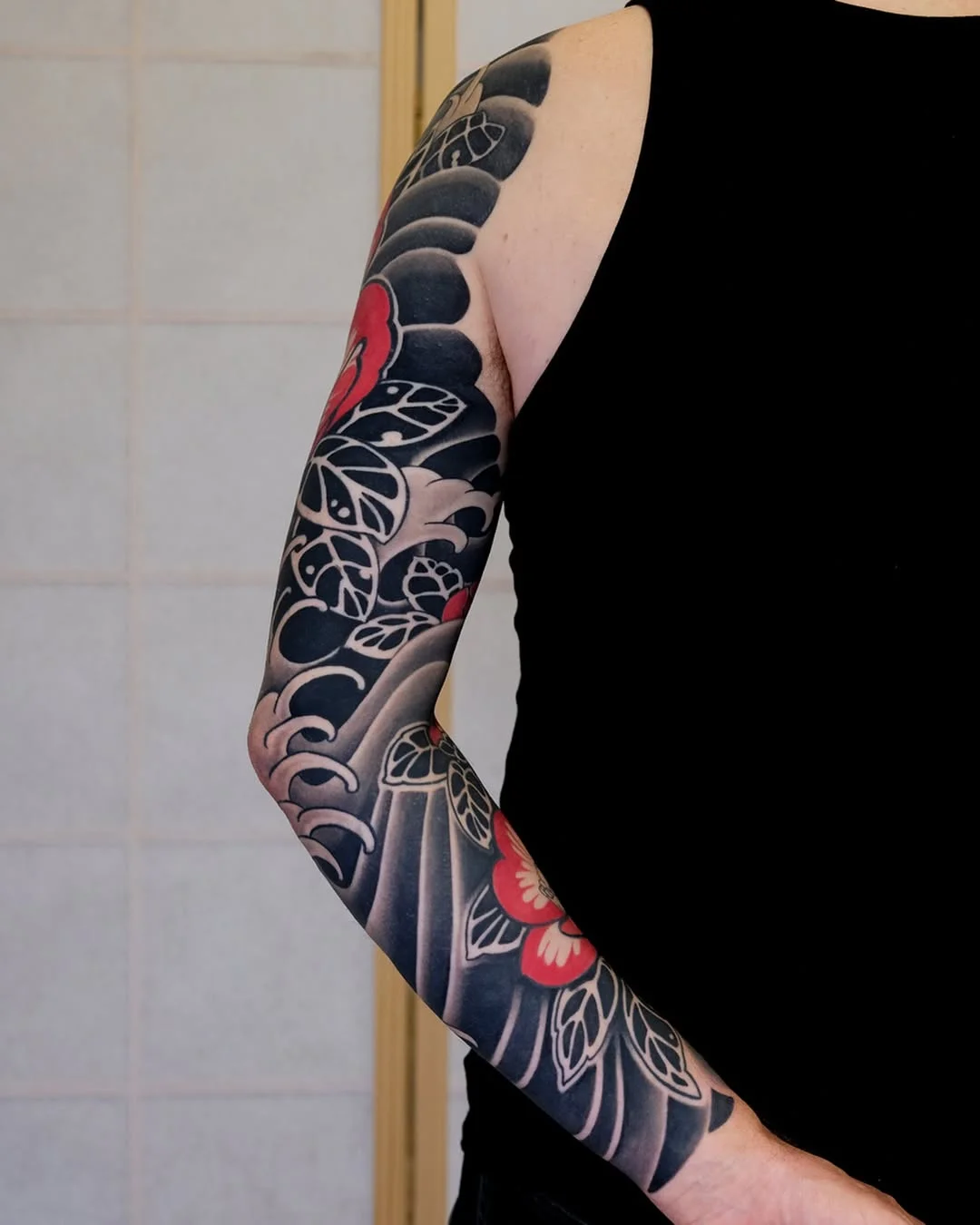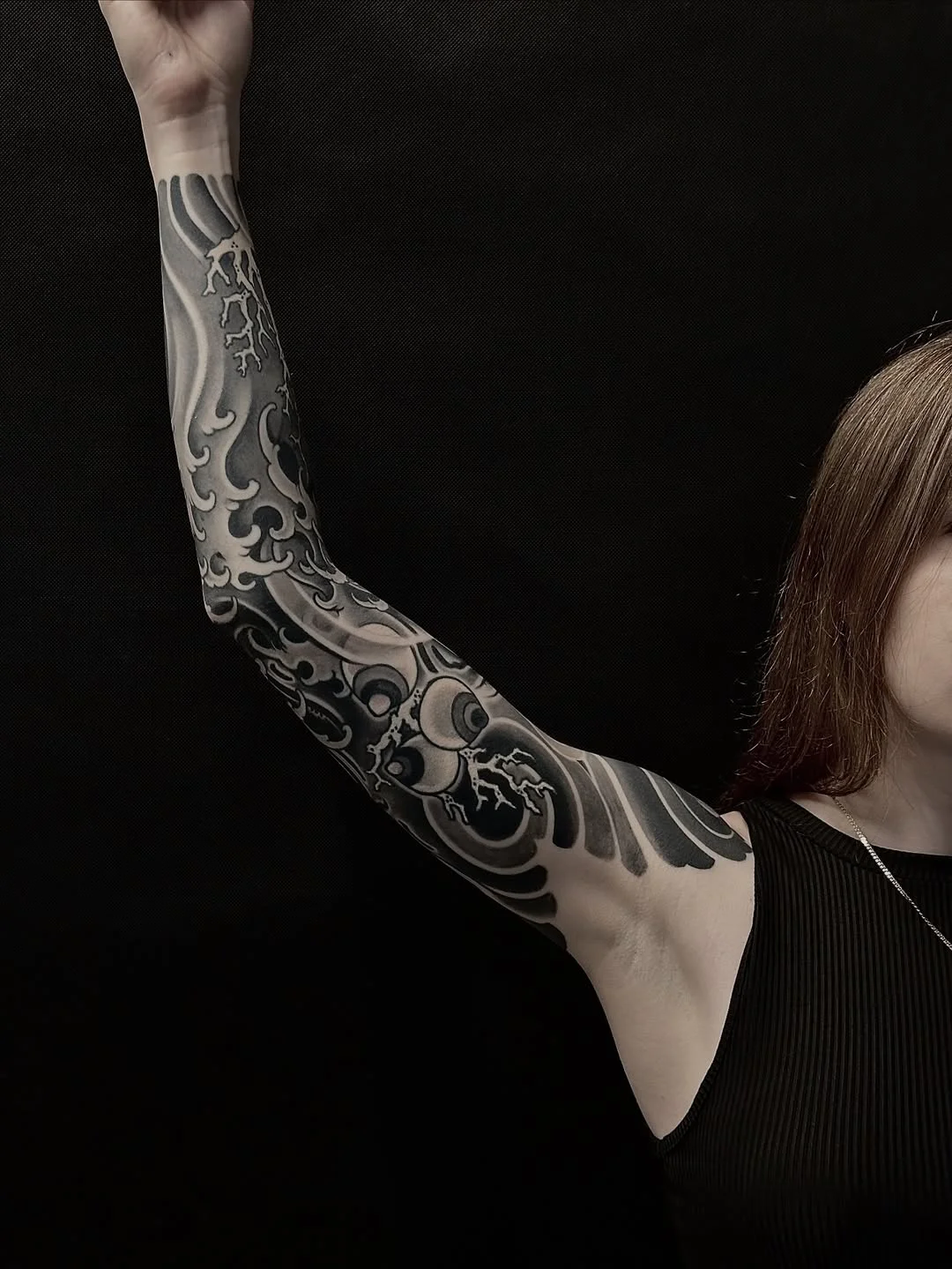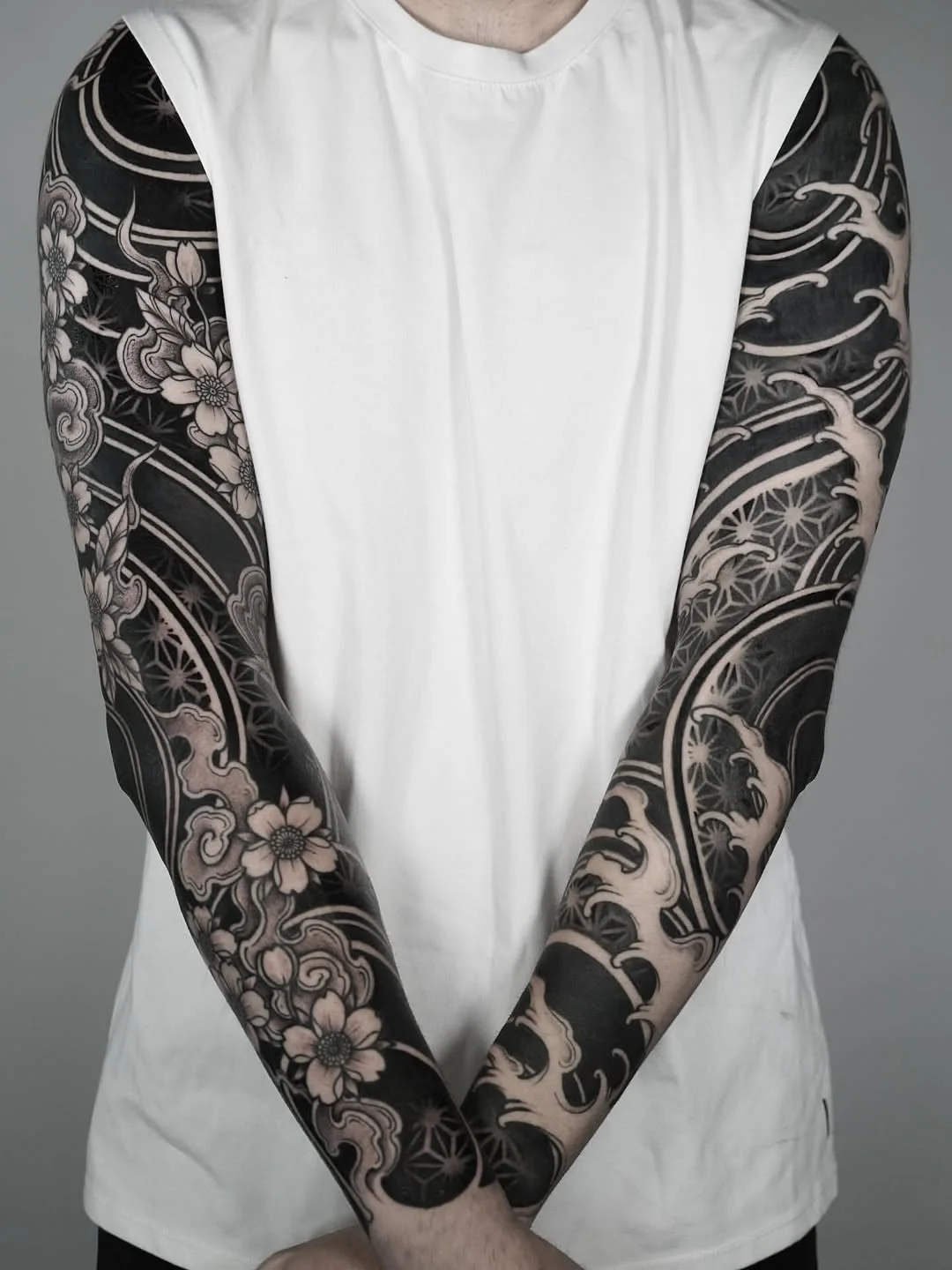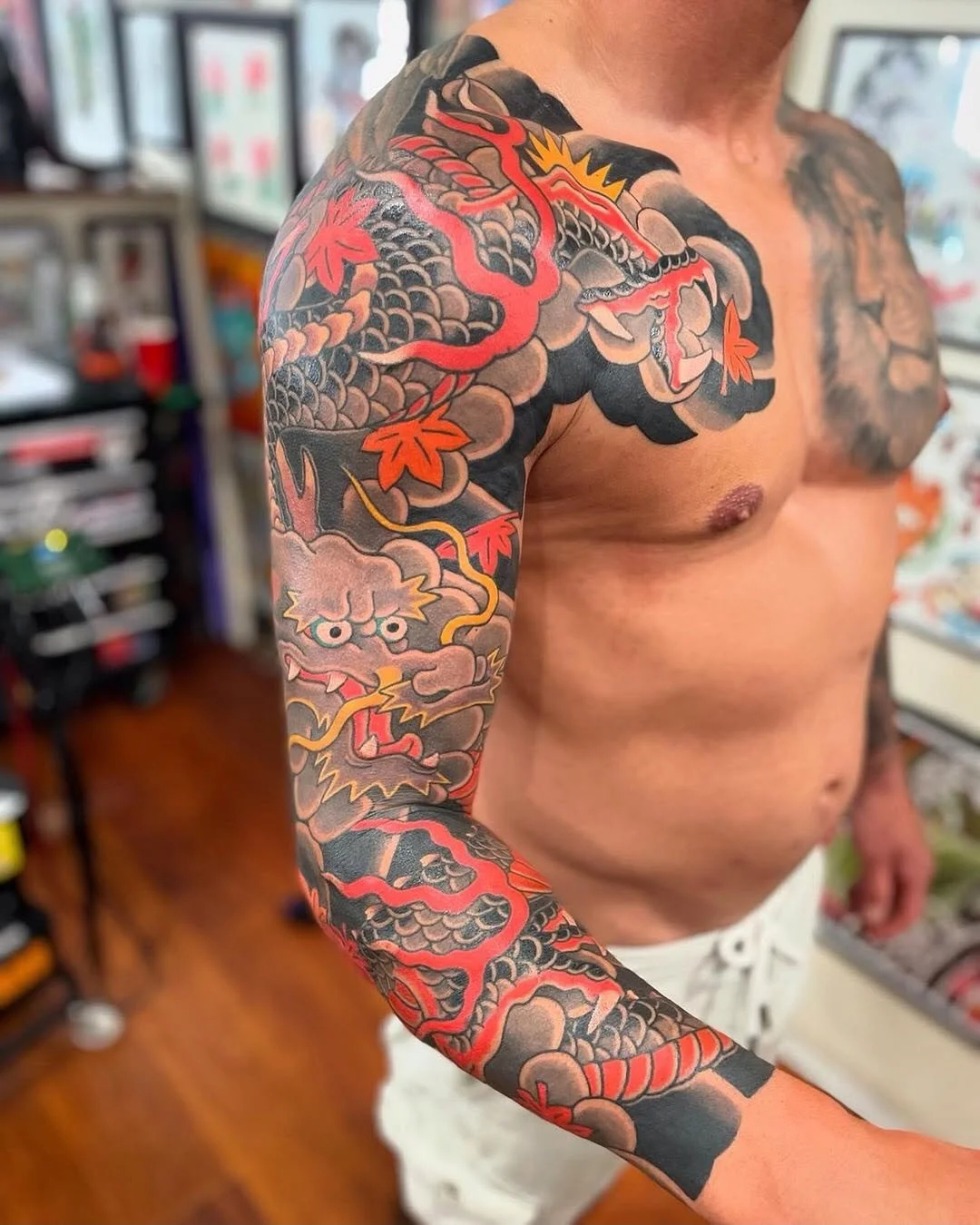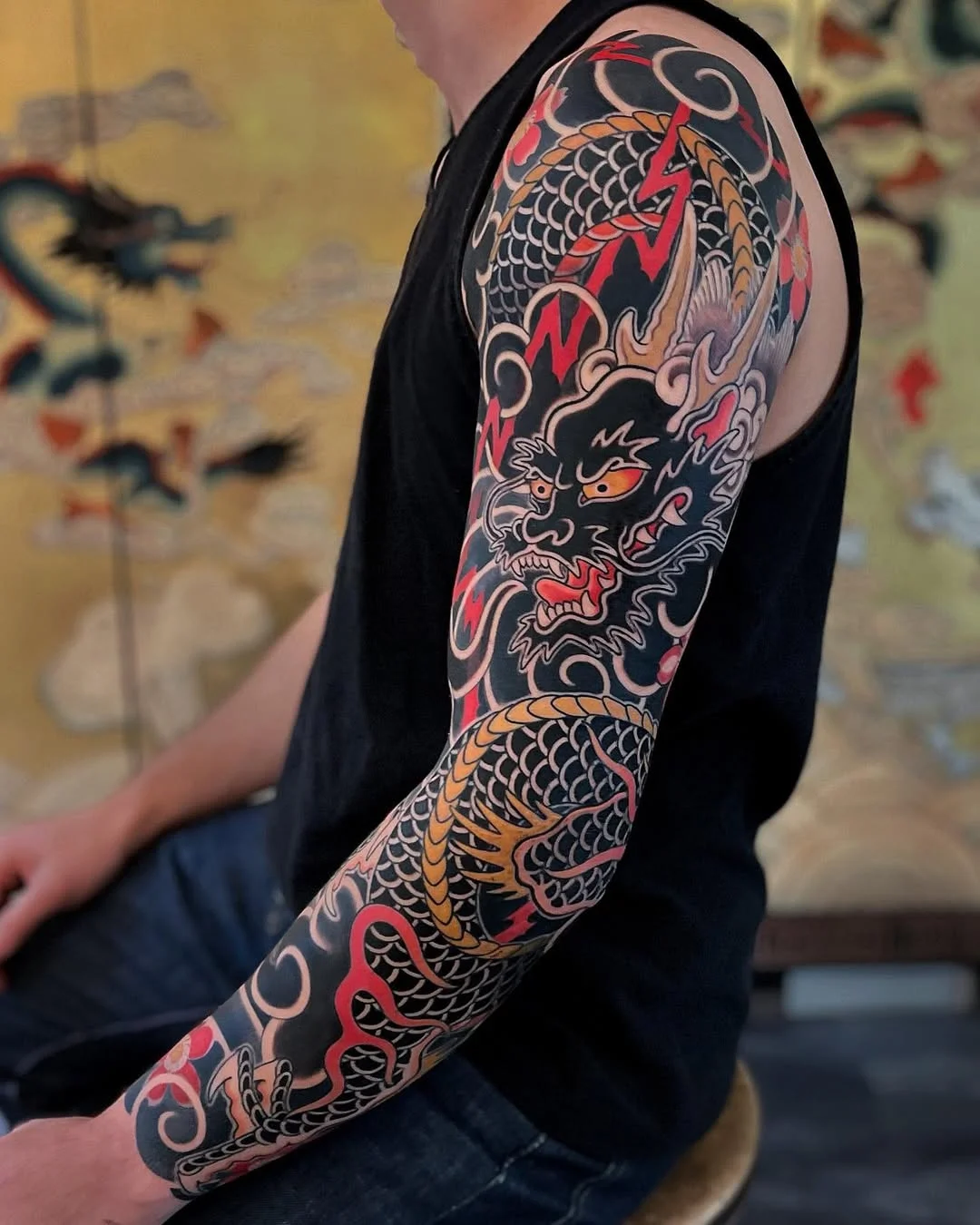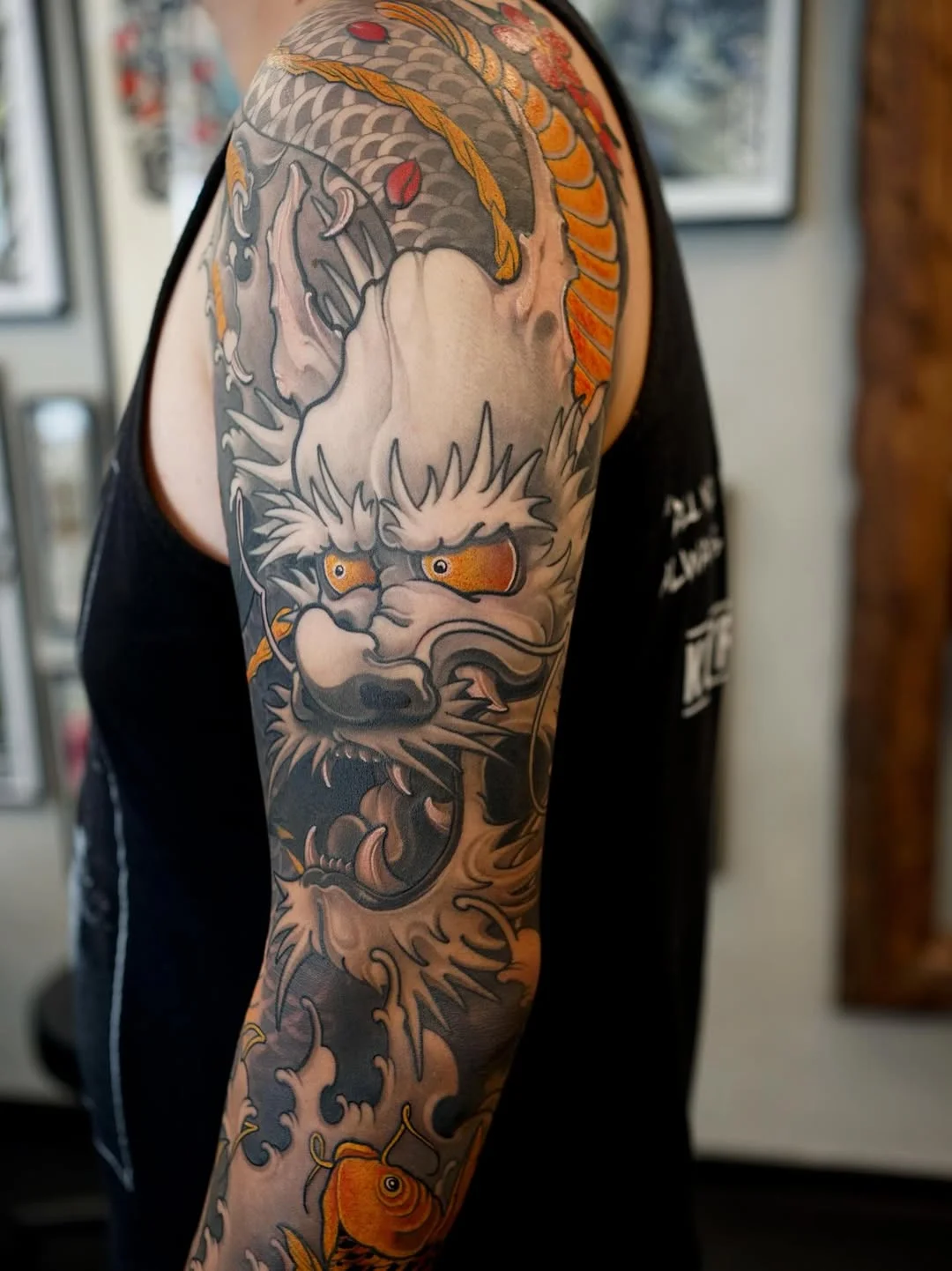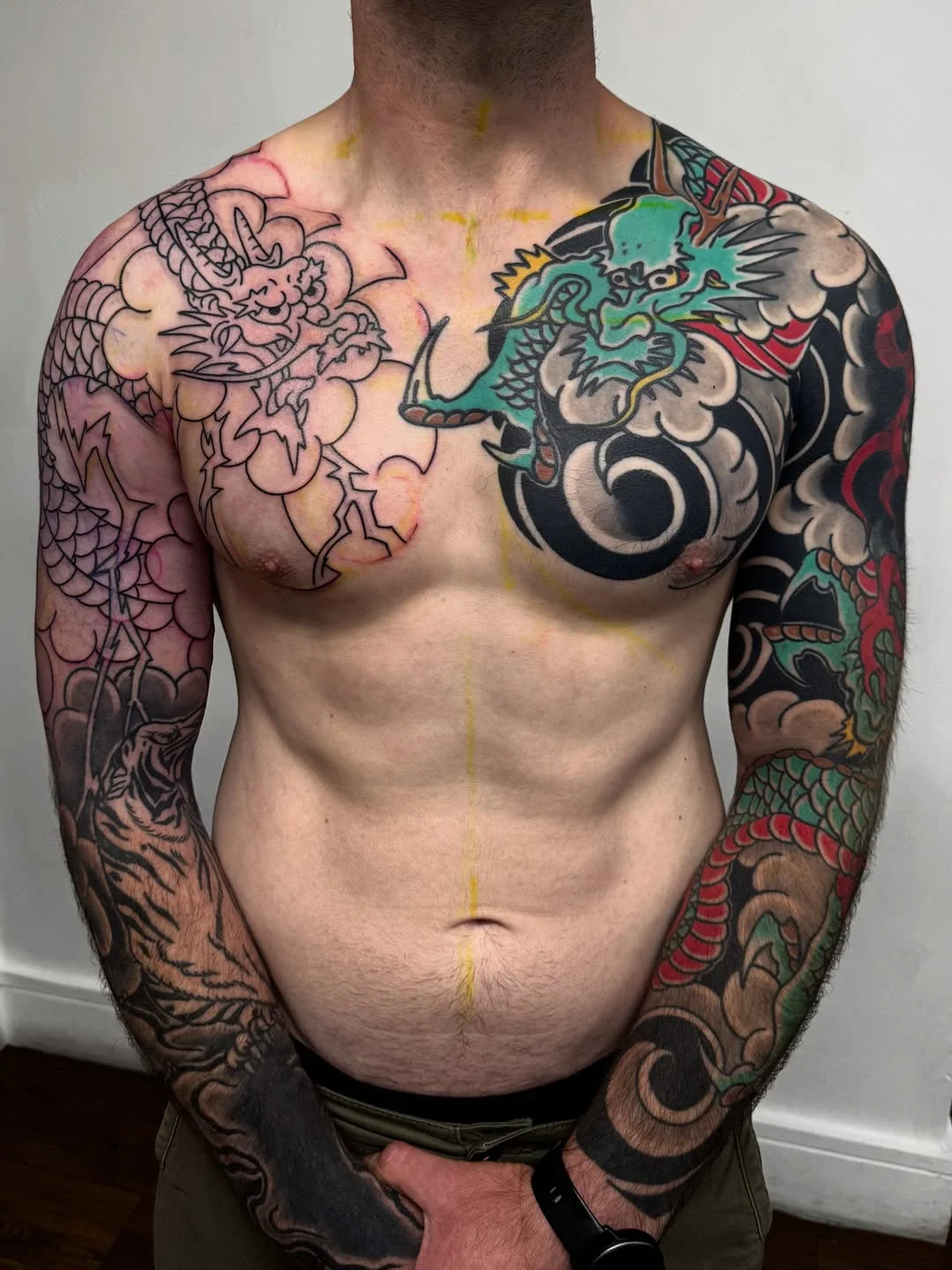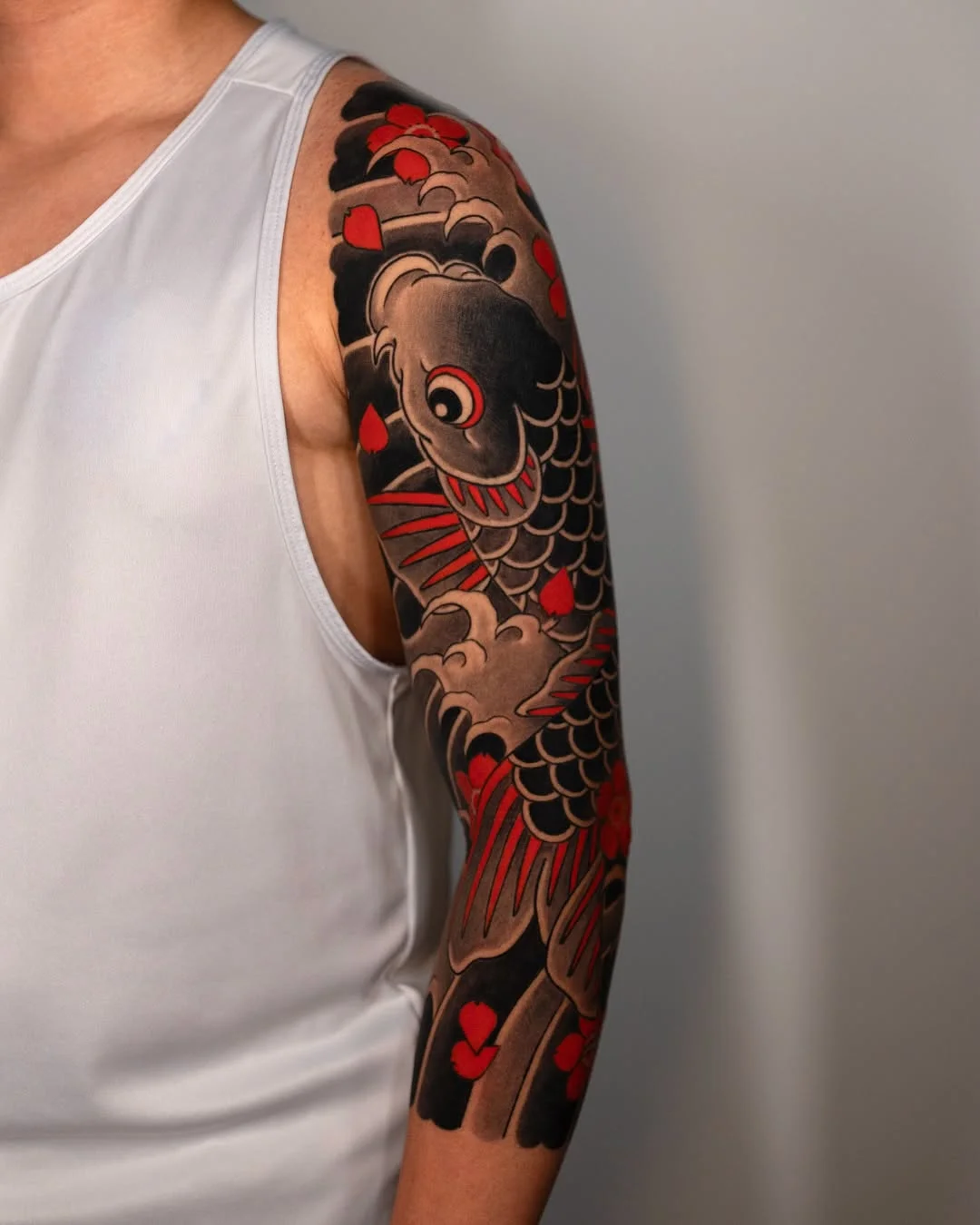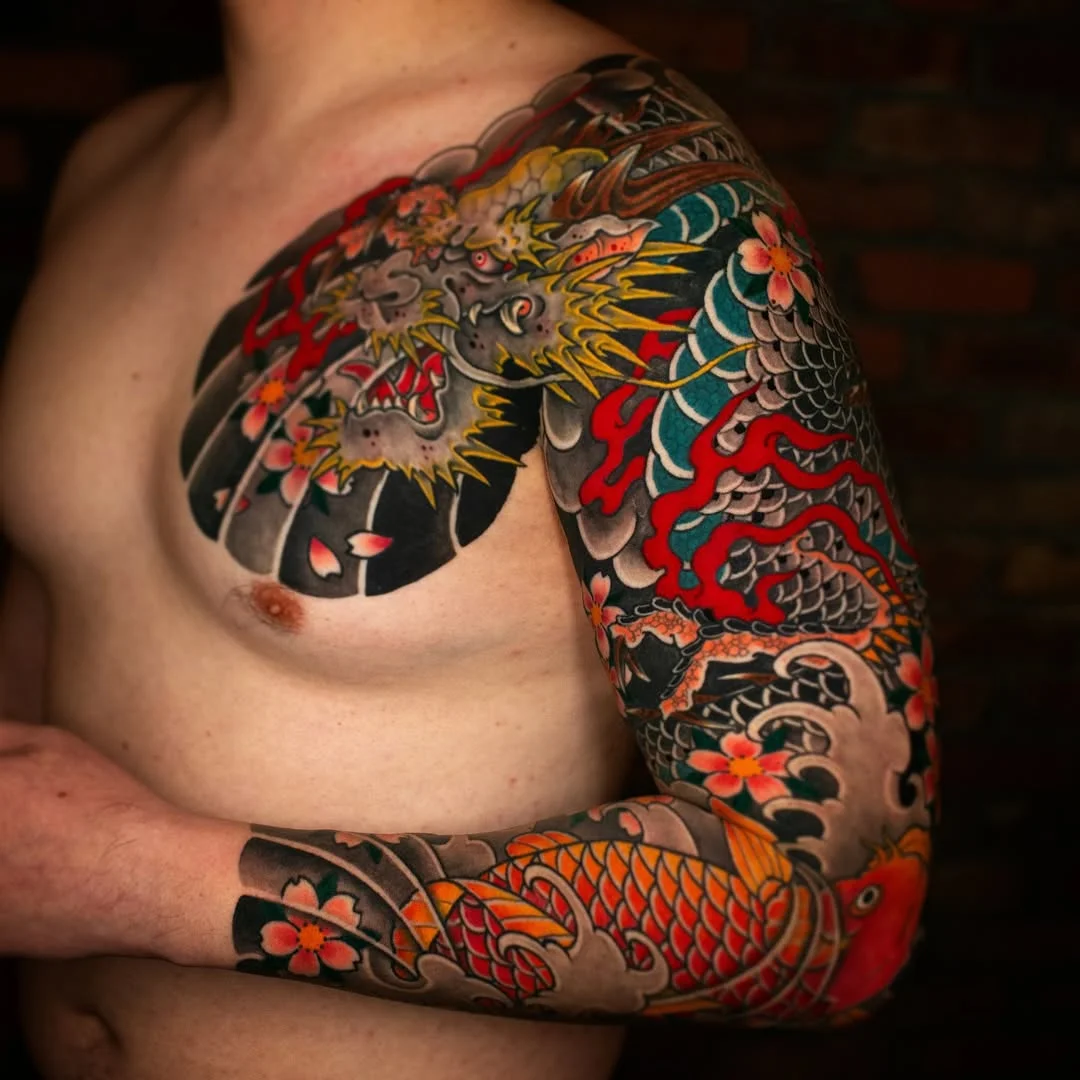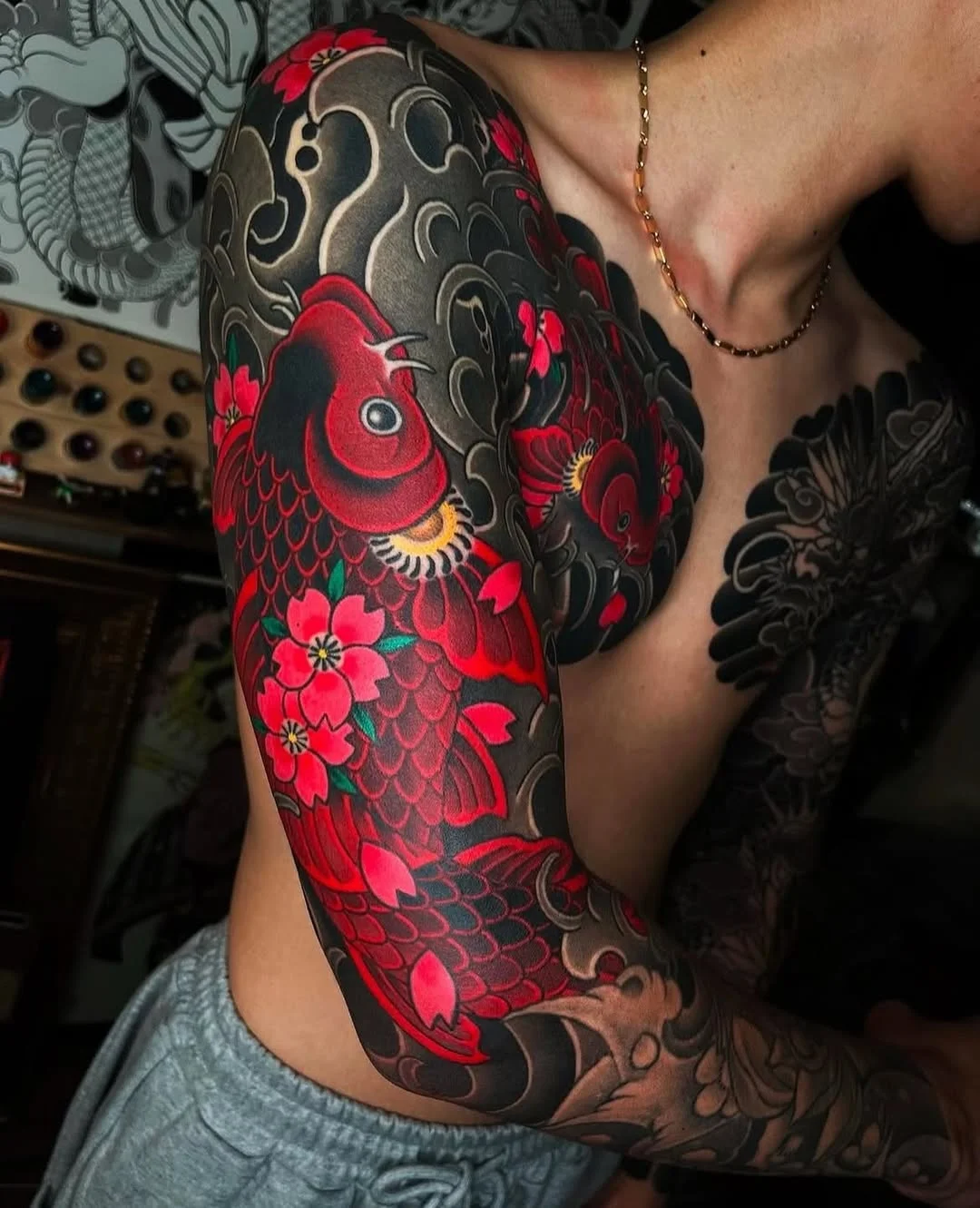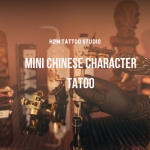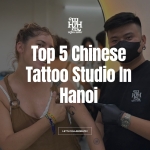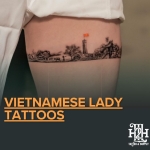If you’re looking for a tattoo design that blends artistry, bold personality, and refined taste, then a Full Arm Traditional Japanese Tattoo is definitely something you shouldn’t overlook. Featuring traditional motifs like dragons, koi fish, peonies, ocean waves, or cherry blossoms, each design carries a unique beauty and deep meaning. In this article, H2M Tattoo Studio will introduce 30+ stunning Full Arm Traditional Japanese Tattoo ideas to help you find the style that best reflects who you are – whether you’re drawn to strength and power or elegance and subtlety.
>>>> READ MORE: Japanese-Asian Tattoo
What Is a Full Arm Traditional Japanese Tattoo?
A Full Arm Traditional Japanese Tattoo is one of the most iconic and meaningful forms of Eastern body art, blending culture, philosophy, and inner strength into a single masterpiece. Originating from Japan’s traditional Irezumi art, this tattoo typically covers the entire arm, from the shoulder down to the wrist, forming a continuous, flowing composition full of life and symbolism. In Japanese tattooing, this style is known for its bold lines, deep symbolism, and flowing composition that wraps naturally around the body. Every element, such as dragons, koi fish, peonies, or ocean waves, carries its own message: power, courage, perseverance, or the fleeting beauty of life.
Creating a full arm design requires skillful composition, ensuring that each detail connects harmoniously to enhance the shape of the arm and reflect the wearer’s personality. Together, a Full Arm Traditional Japanese Tattoo expresses strength, balance, and the journey of someone unafraid to show their story to the world.
>>>> SEE MORE: 30+ traditional japanese bicep tattoo Designs You'll Want To Try
Seven Powerful Symbols in Full Arm Traditional Japanese Tattoos
The true power of a Full Arm Traditional Japanese Tattoo lies in the symbolism of its individual elements. Here are seven of the most significant and commonly featured motifs:
Dragon (Ryū or Ryujin) – Power, Wisdom, and Protection
The Japanese dragon stands as perhaps the most iconic element in traditional Japanese tattooing. Unlike Western dragons, which often represent destruction and chaos, Japanese dragons embody wisdom, strength, and benevolent protection. In Japanese mythology, dragons control water and weather, bringing life-giving rain to crops and protecting communities from natural disasters.
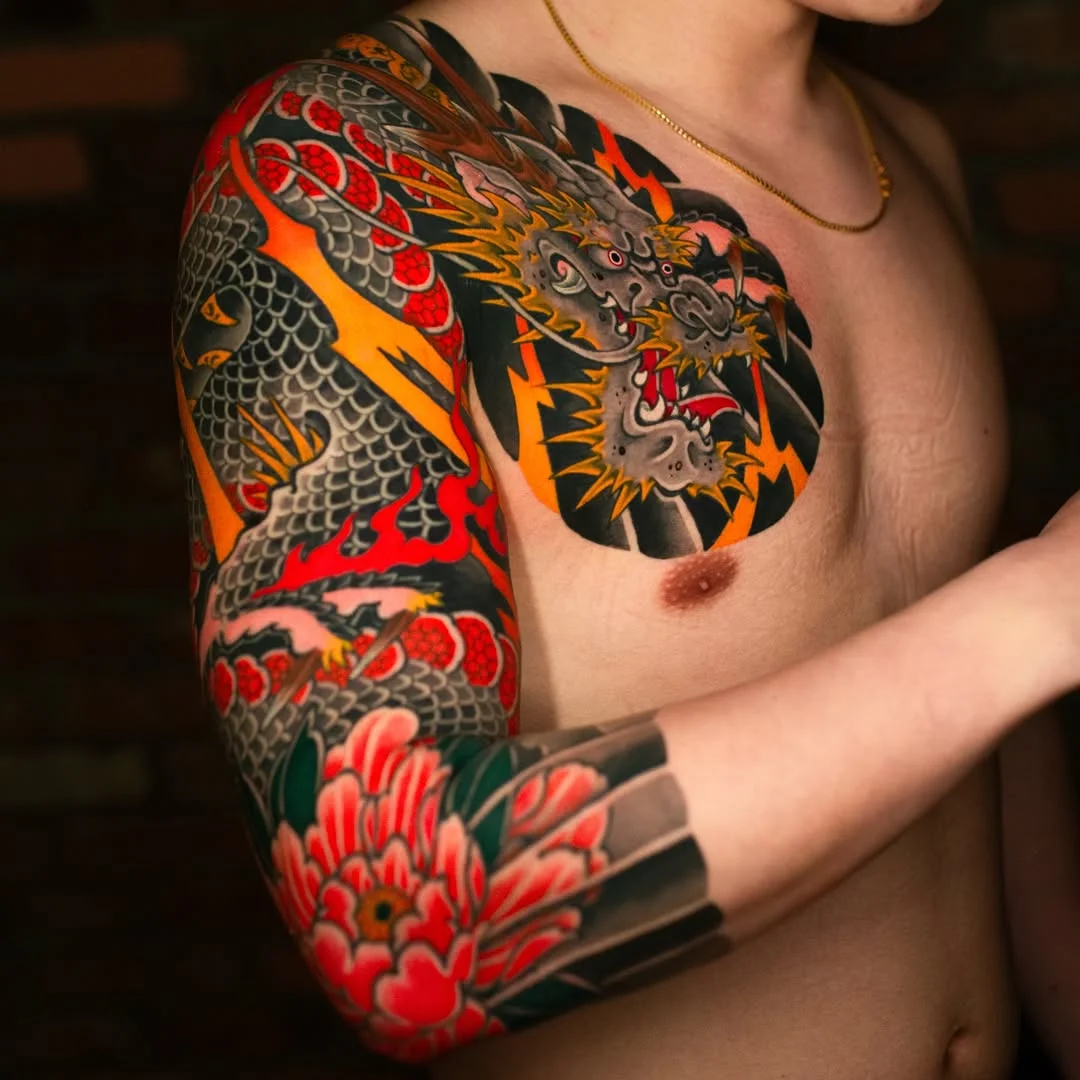
A dragon tattoo symbolizes the wearer's connection to natural forces, personal power tempered with wisdom, and the ability to navigate life's challenges with grace. Dragons are often depicted coiling around the arm, their serpentine bodies creating natural flow that follows the arm's musculature. When extending to the neck, dragon heads are frequently positioned to appear as though emerging from clouds or water, their fierce expressions serving as protective guardians.
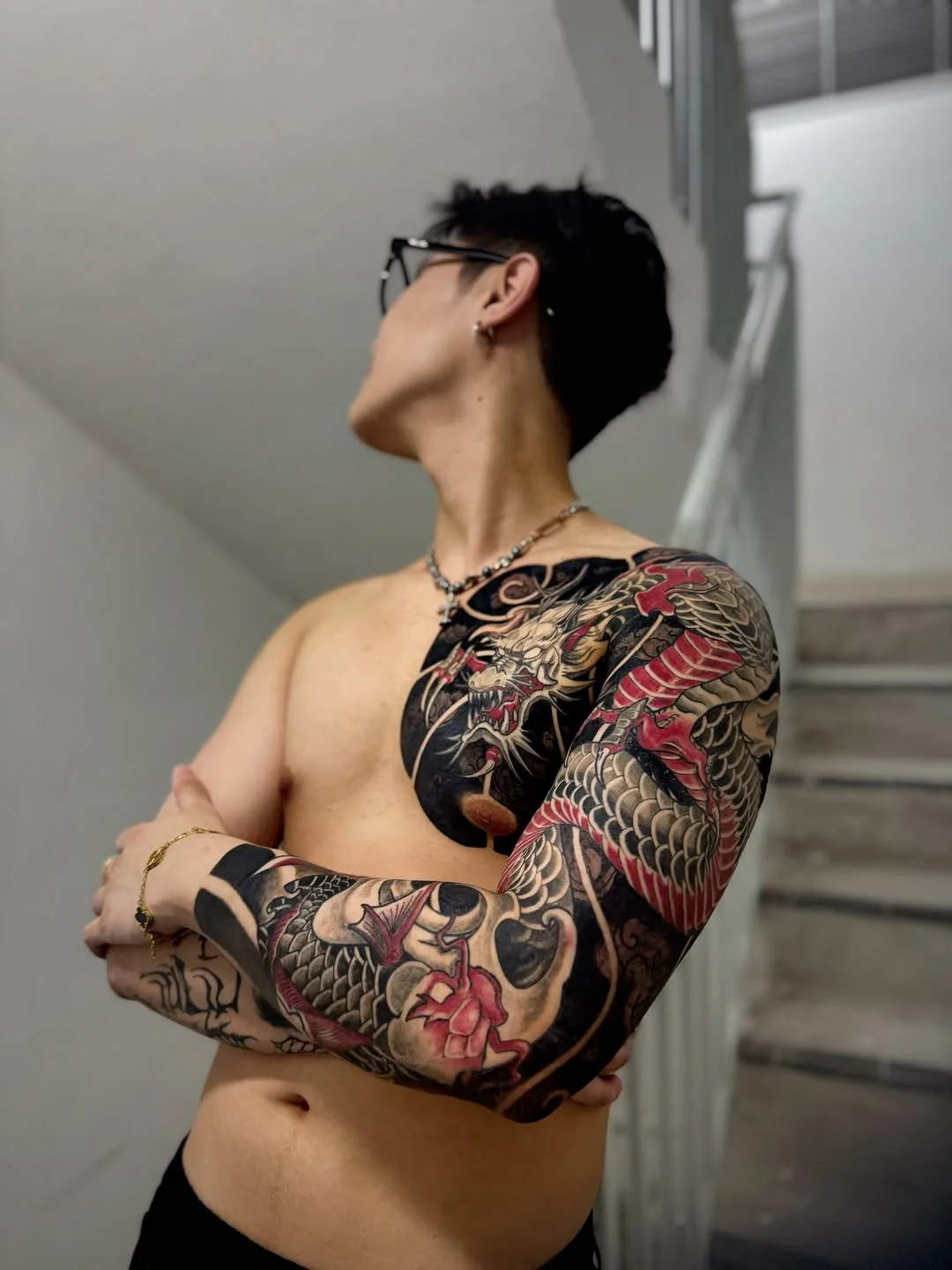
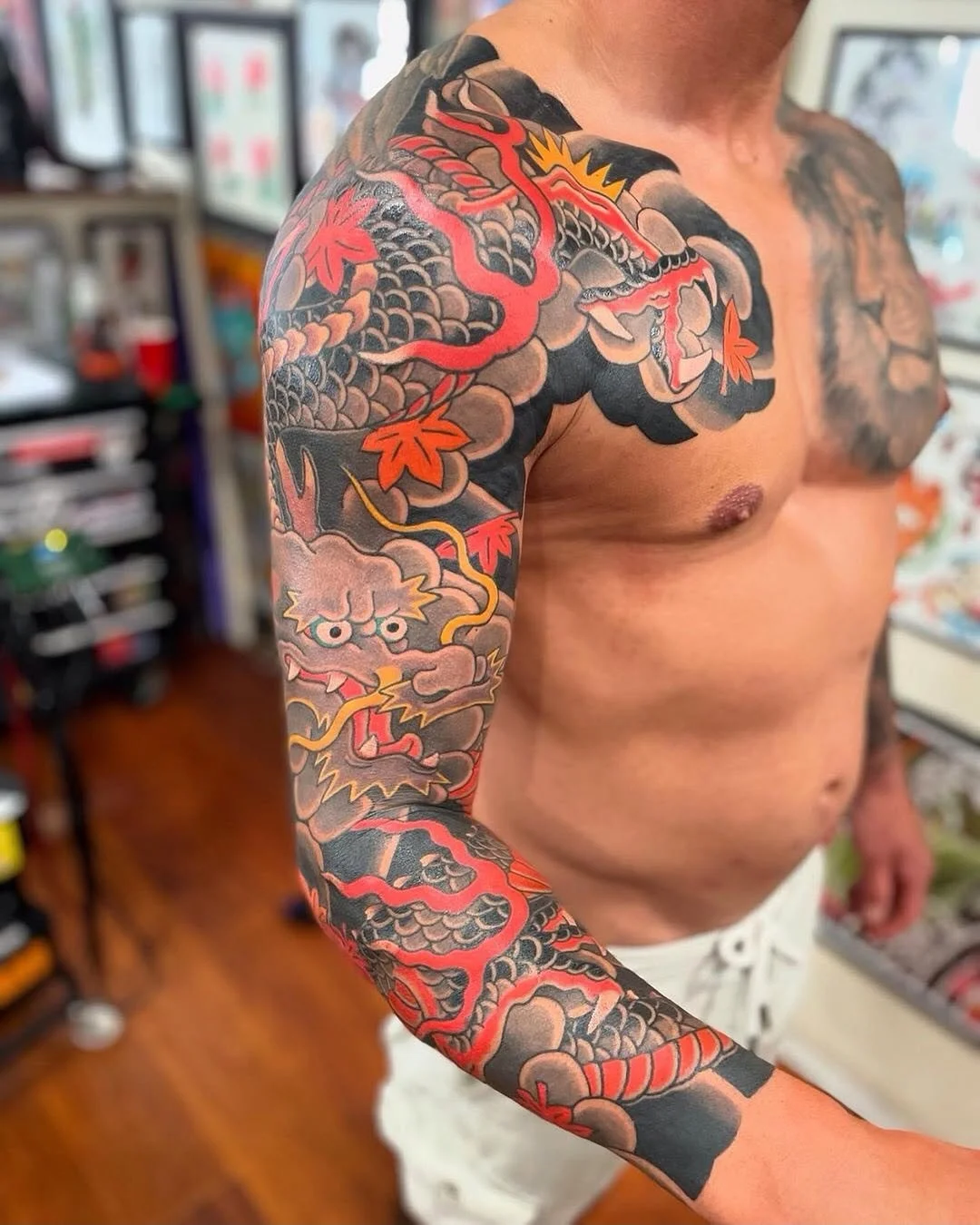
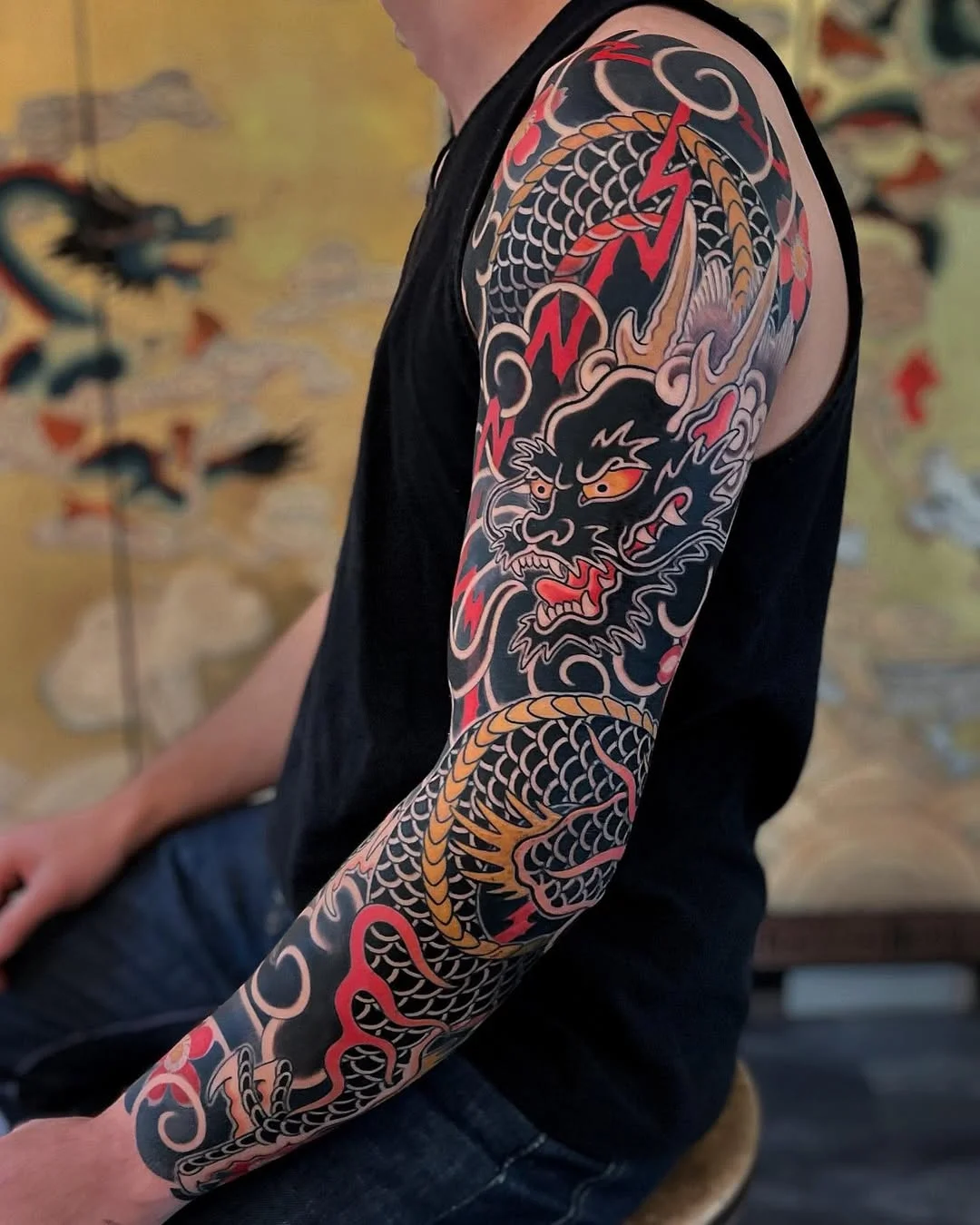
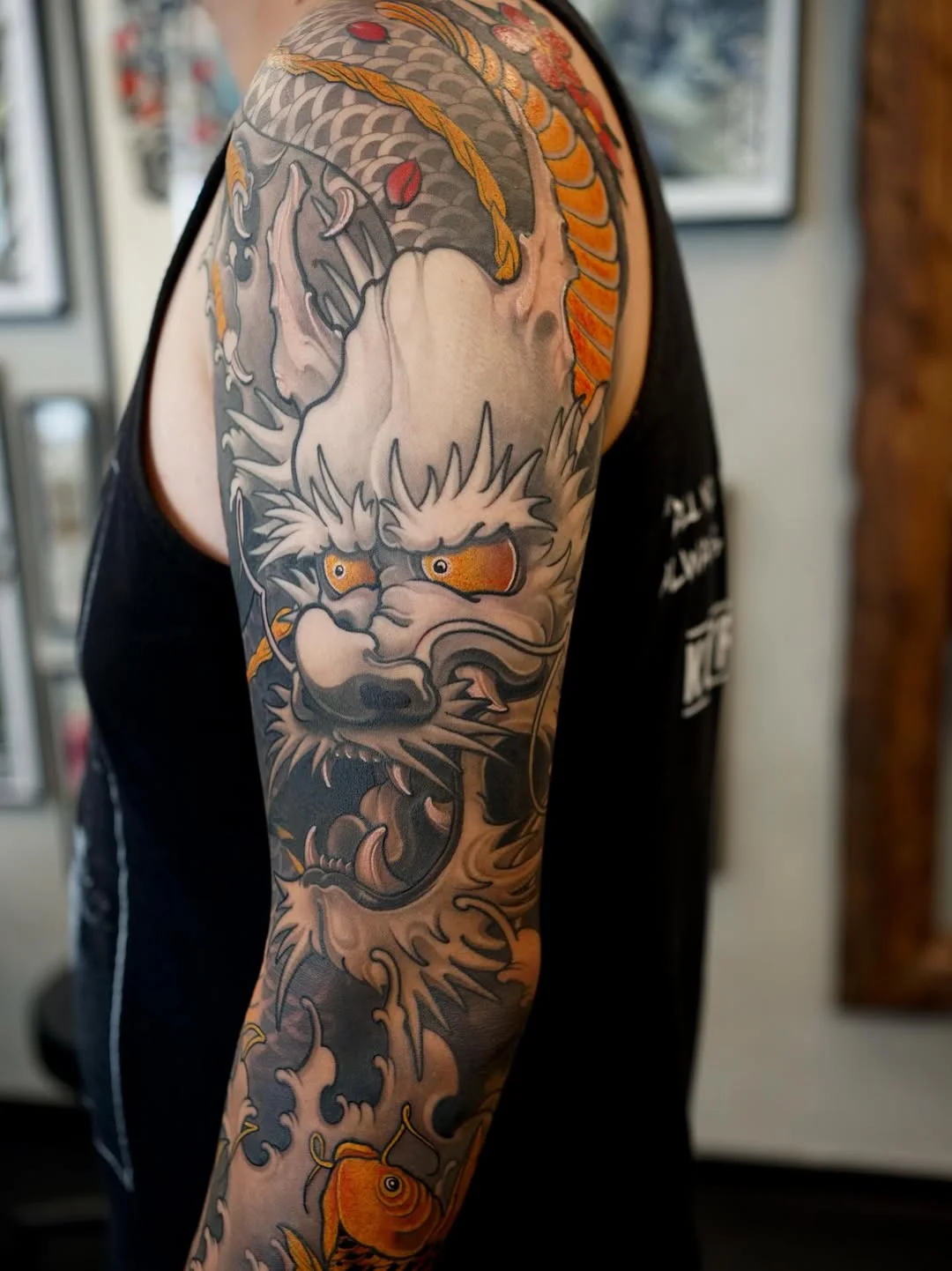
The number of claws on a dragon carries specific meaning—traditionally, three-clawed dragons represent common people or earthly power, while five-clawed dragons were reserved for imperial imagery. Most tattoos feature three or four claws to show respect for this distinction while still embodying the dragon's positive attributes.
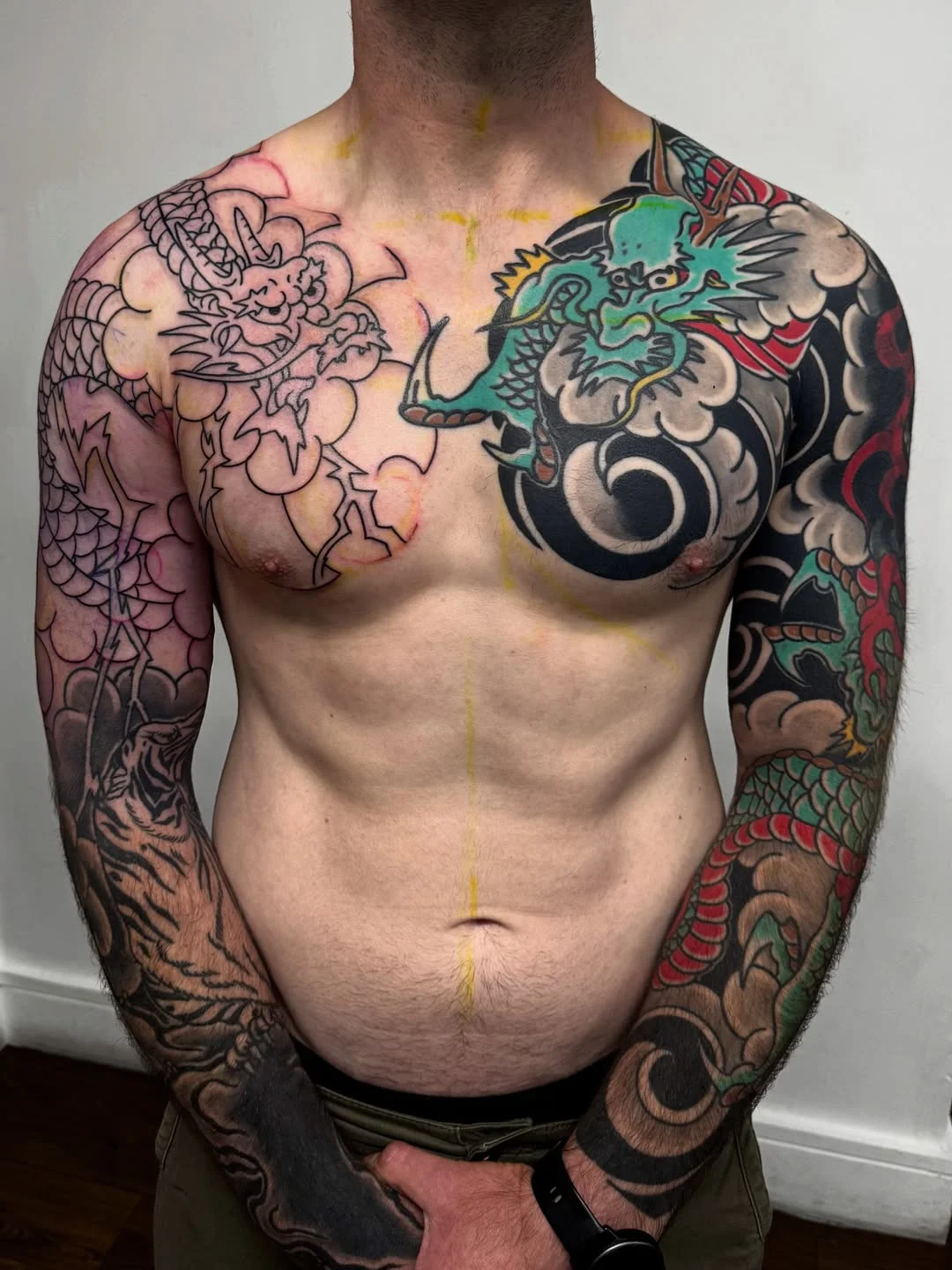
Koi Fish – Perseverance, Transformation, and Success Against Adversity
The koi fish holds profound meaning rooted in a Chinese legend that became deeply embedded in Japanese culture. According to this tale, koi fish swim upstream against powerful currents, and those determined enough to reach the top of a waterfall are transformed into dragons. This narrative of transformation through persistent effort resonates deeply with many tattoo enthusiasts.
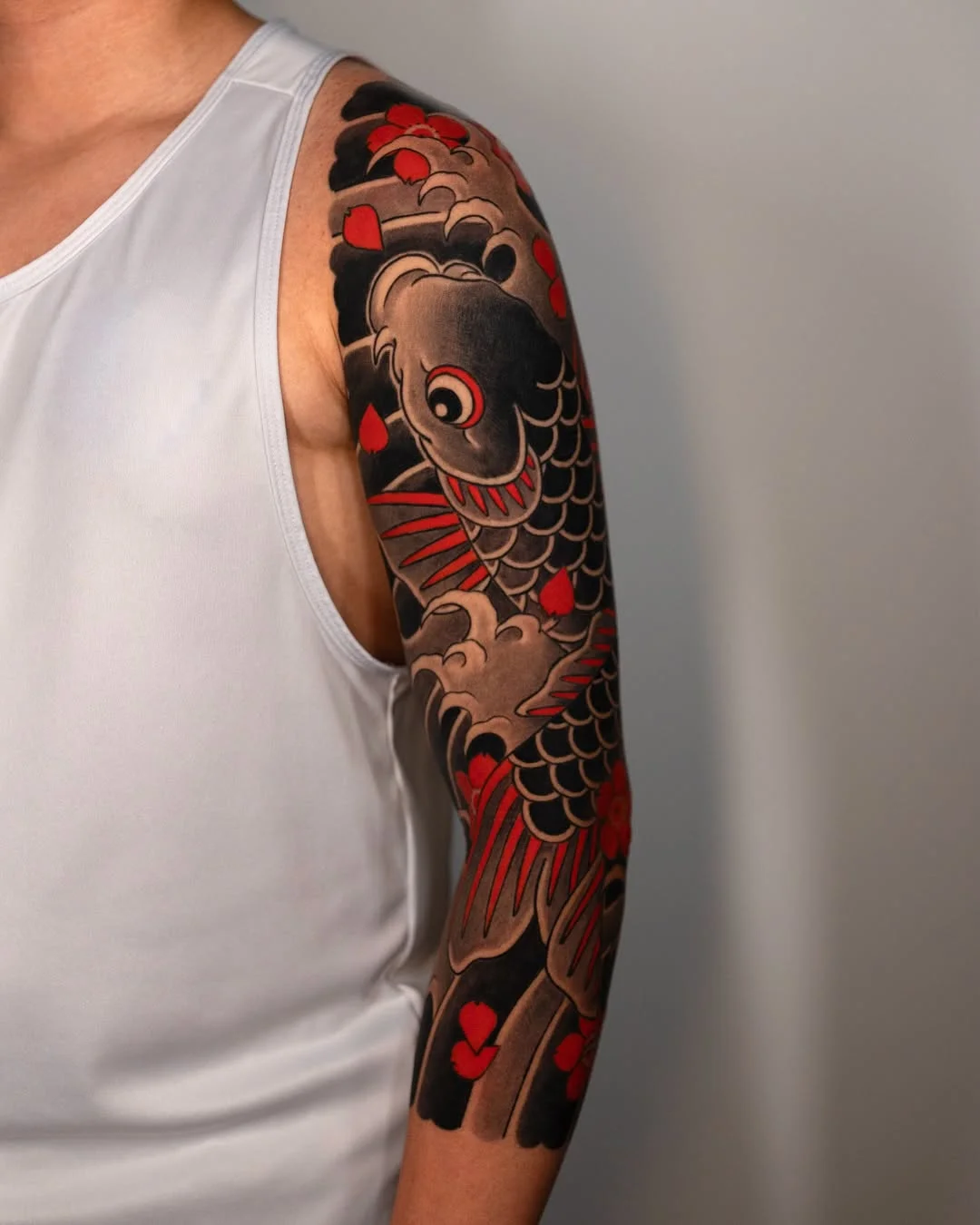
Koi tattoos symbolize perseverance through difficult times, the ability to swim against life's currents, transformation and personal growth, and success achieved through determination rather than luck. The direction and color of the koi add additional layers of meaning. Koi swimming upstream represent active struggle and ongoing challenges, while those swimming downstream can symbolize overcoming obstacles or going with life's flow.
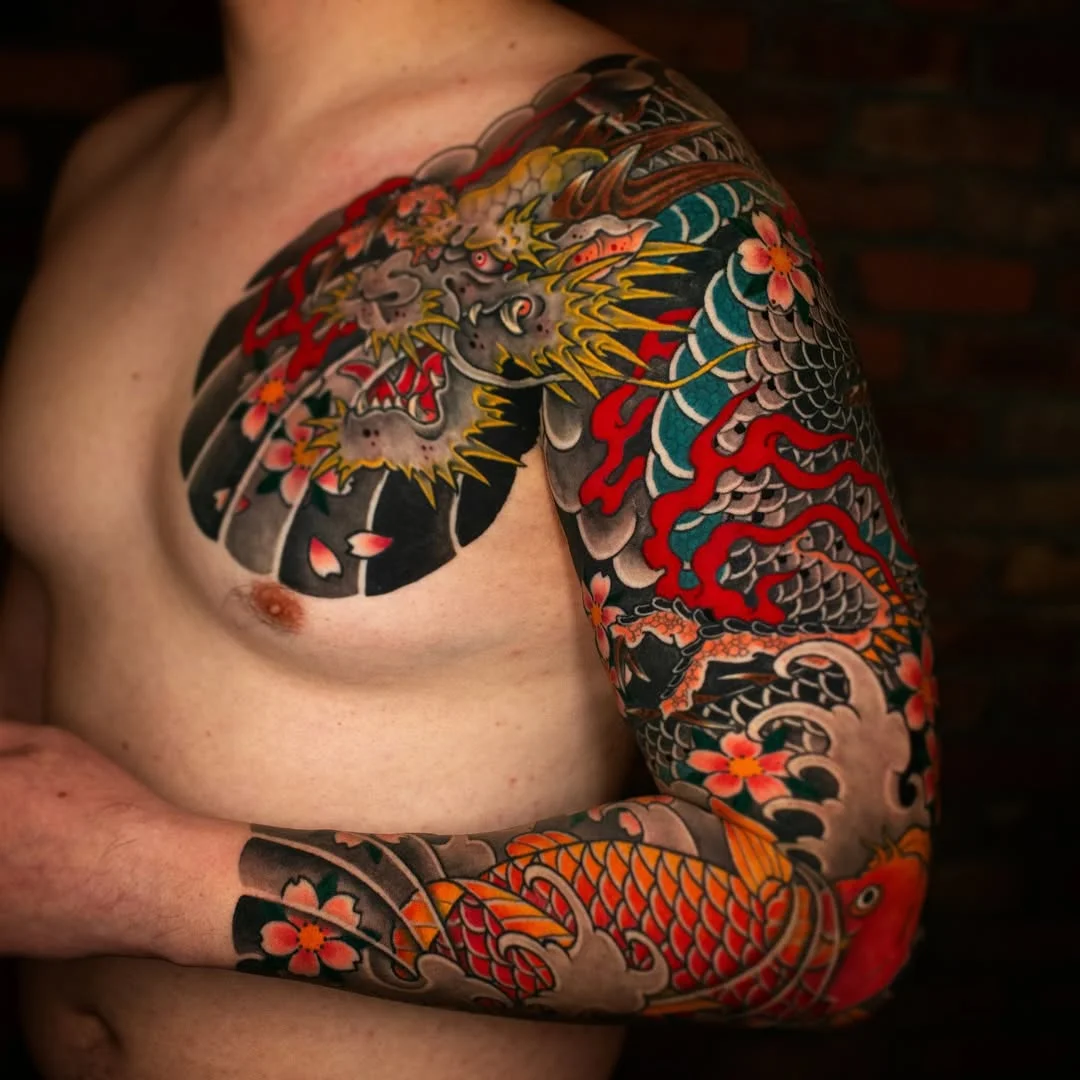
Color symbolism is particularly rich with koi: black koi represent overcoming significant obstacles, red koi symbolize intense love and strong masculine energy, blue koi embody tranquility and reproduction, and golden koi represent prosperity and wealth. In a full arm composition, koi are often surrounded by water, lotus flowers, and maple leaves, creating a complete narrative ecosystem.
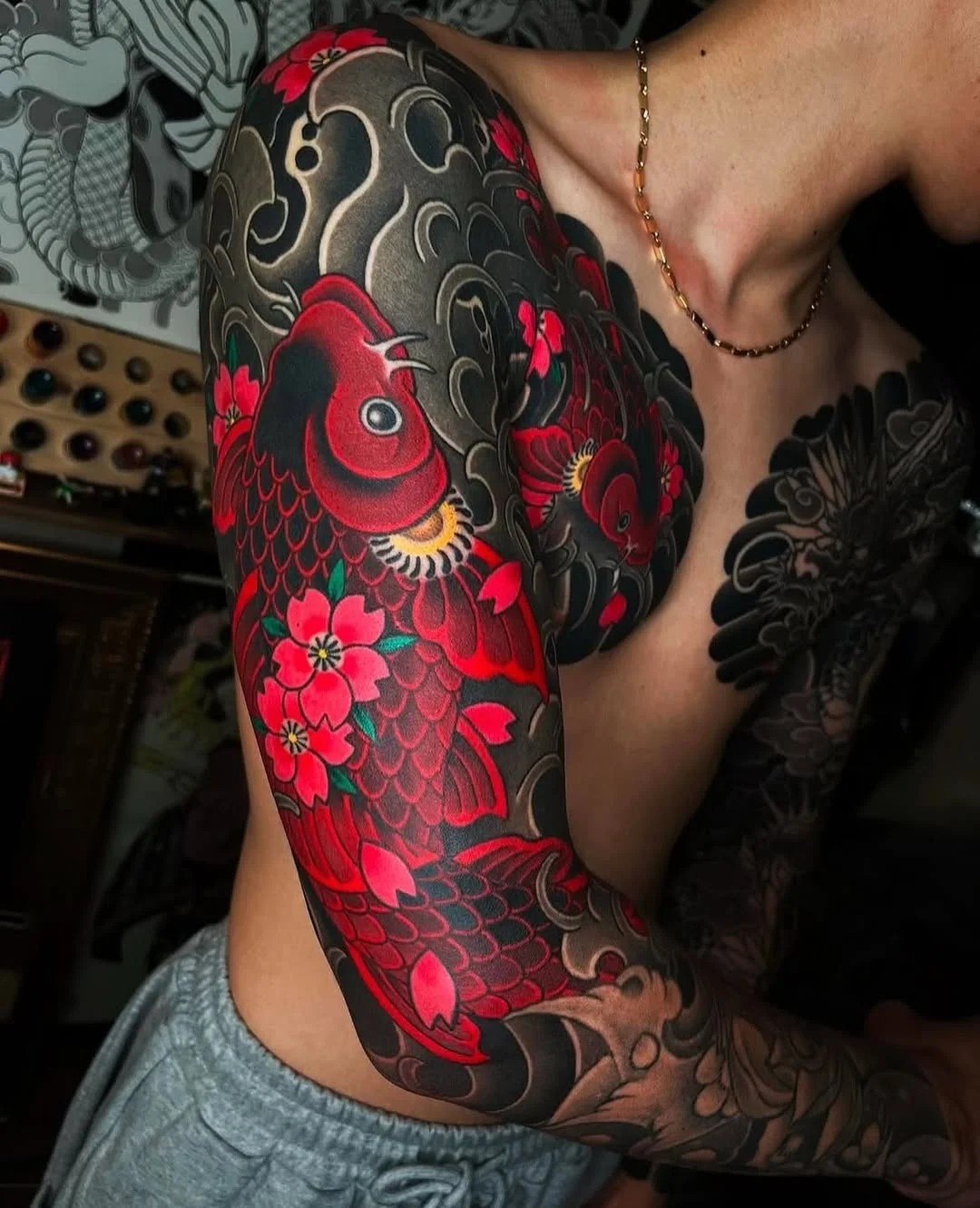
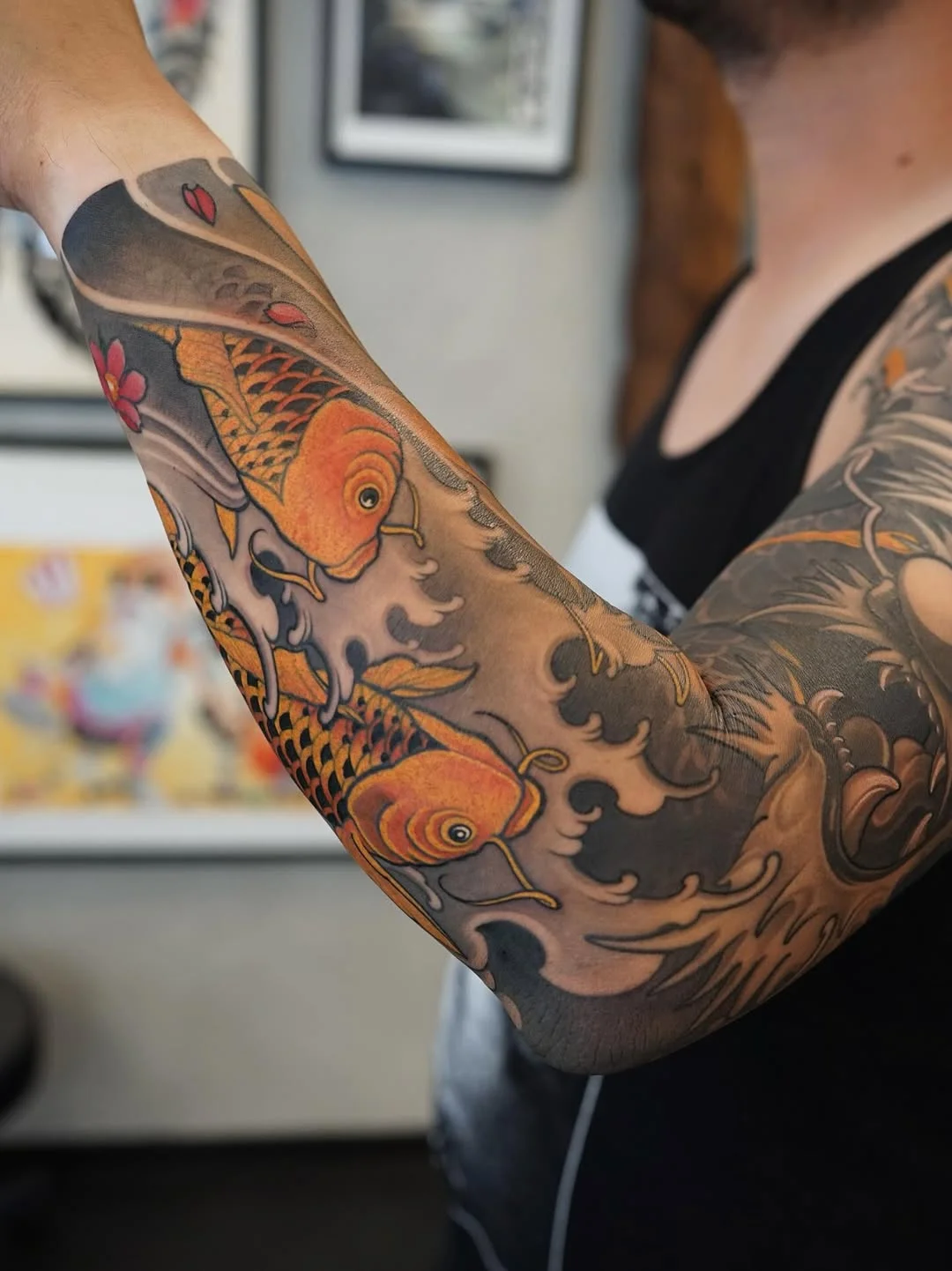
Samurai – Honor, Courage, and Unwavering Loyalty
Samurai warriors represent the bushido code—a set of principles emphasizing honor, loyalty, courage, and self-discipline. Samurai imagery in Japanese tattoos serves as a constant reminder of these values and the importance of living with integrity and purpose.
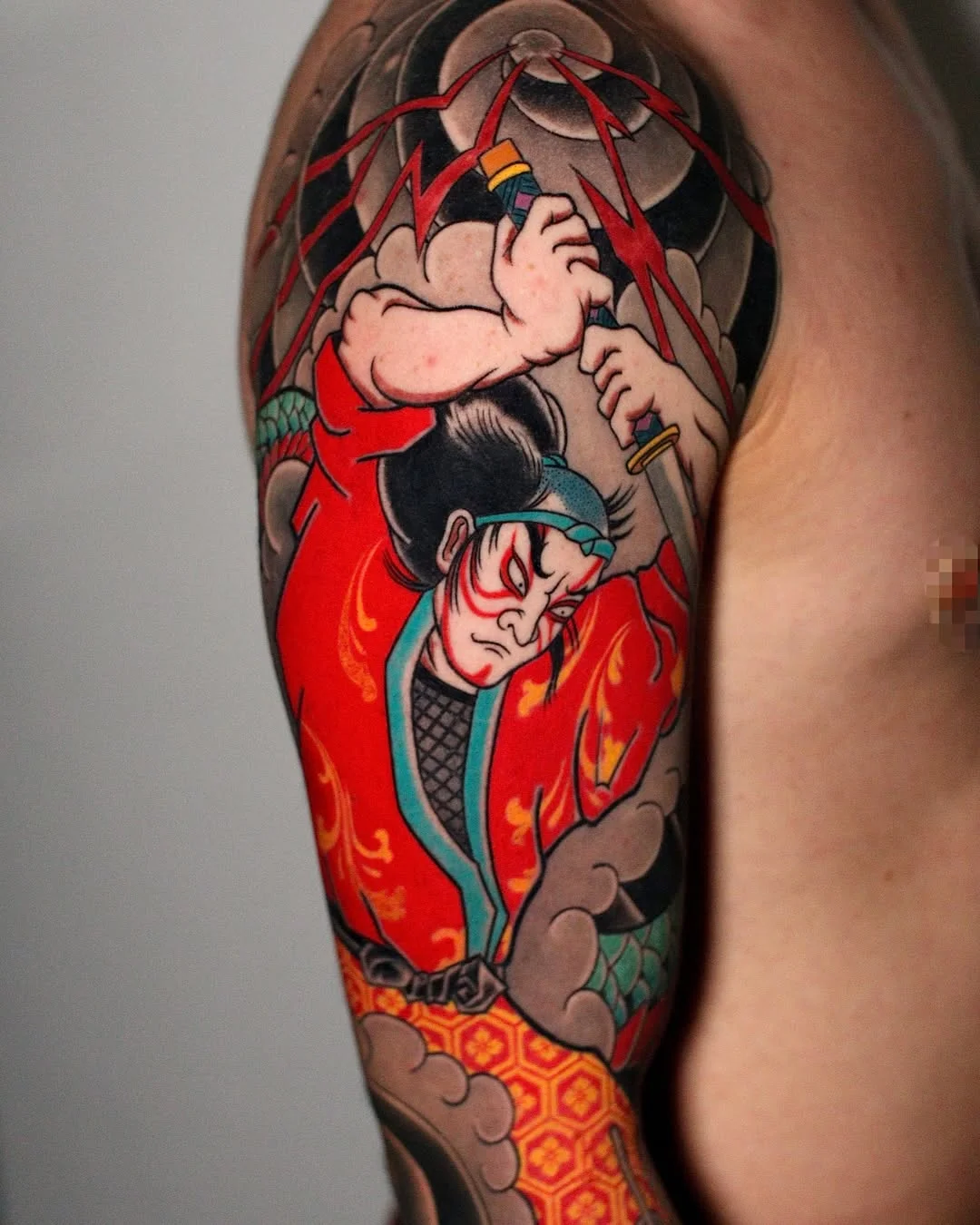
These designs typically feature samurai in full armor, often in dynamic combat poses or moments of quiet contemplation. The incredible detail possible in full arm pieces allows artists to render the intricate plates, cords, and patterns of traditional samurai armor with stunning realism. When incorporated into neck extensions, samurai masks or partial portraits create striking visual impact.
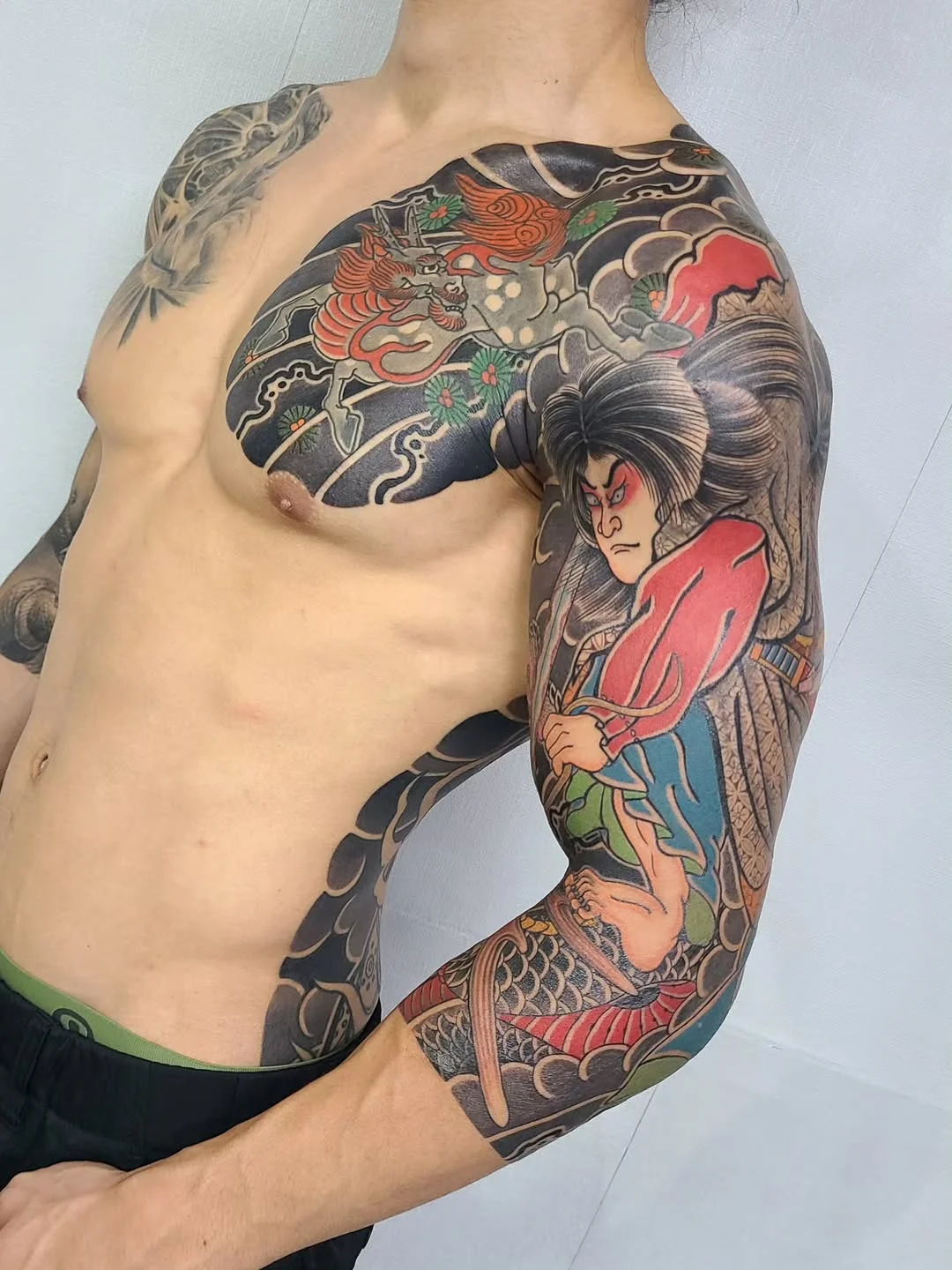
Samurai tattoos appeal particularly to those who value martial discipline, personal honor systems, protection of family and principles, and the warrior's path of continuous self-improvement. The inclusion of samurai weaponry—katana swords, tanto daggers, or yari spears—adds additional symbolic weight, representing the cutting away of negative influences and the precision required to live honorably.
Full Arm Traditional Japanese Tattoo with samurai warrior
>>>> READ MORE: Top 12+ Best traditional japanese hand tattoo Ideas And Meaning
Oni Mask – Strength, Protection Against Evil, and Dual Nature
Oni are supernatural demons or ogres from Japanese folklore, typically depicted with horns, fierce expressions, and wild hair. While they represent malevolent forces in traditional stories, oni masks in tattoo culture carry a more complex meaning—they serve as protective talismans that ward off bad luck and evil spirits while acknowledging the dual nature within all humans.
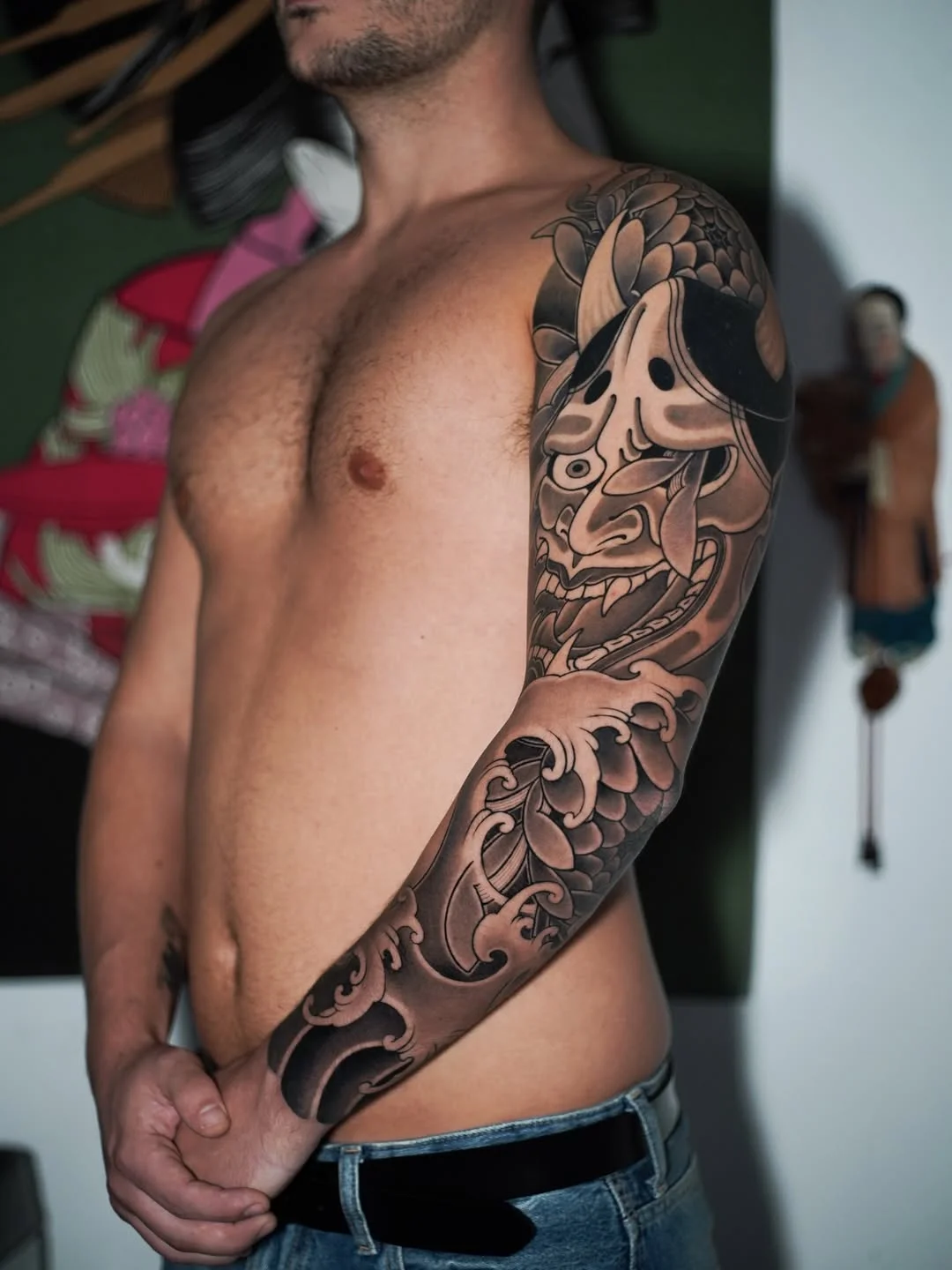
An oni mask tattoo symbolizes the wearer's strength to confront darkness, protection against negative external forces, acknowledgment of one's own capacity for both good and destructive impulses, and the fierce energy required to overcome personal demons. The masks come in various colors, each carrying distinct meanings: red oni represent anger and passion, blue oni embody sadness and calm rationality, black oni suggest mystery and depth, and white oni indicate purity and spiritual aspects.
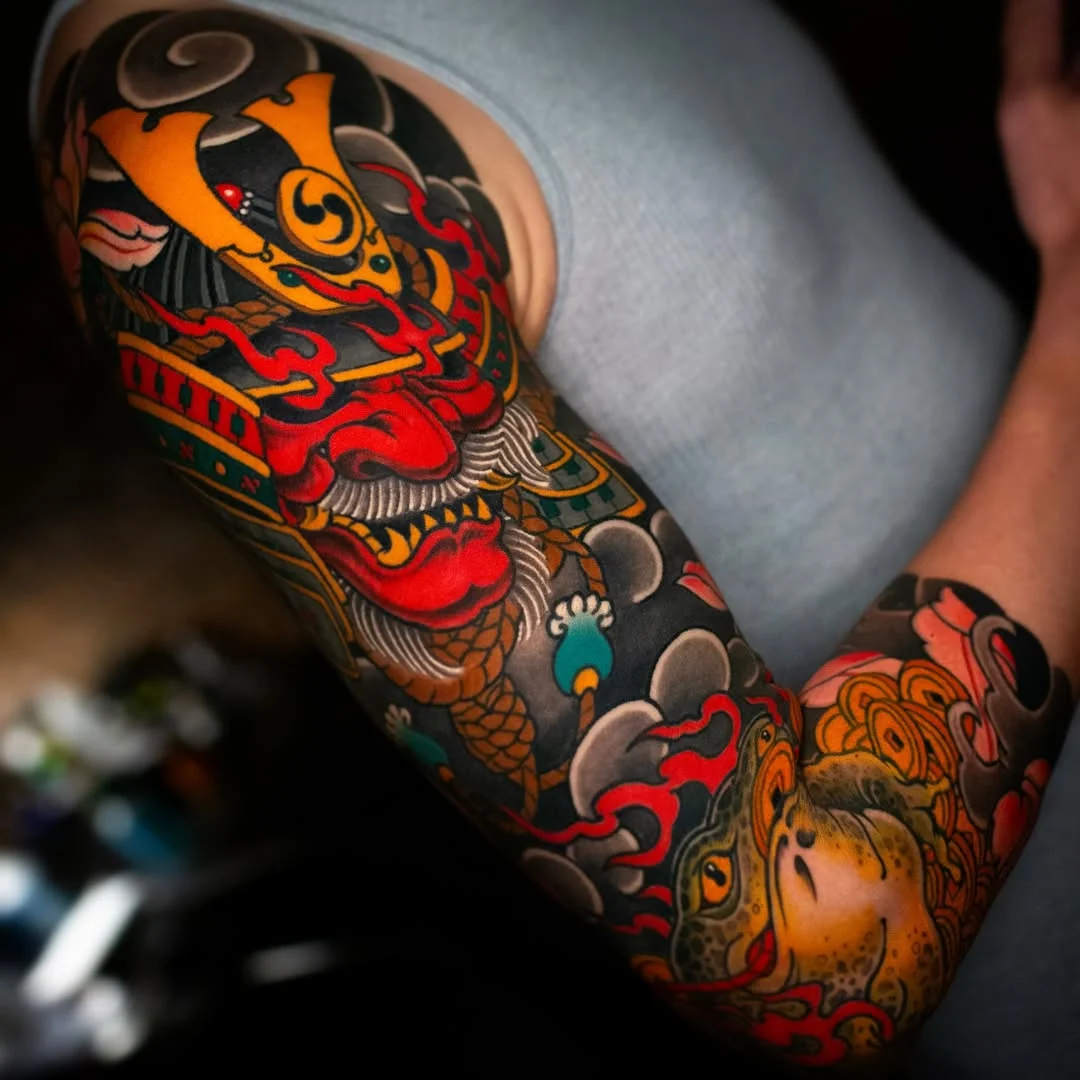
In full arm compositions, oni masks are often positioned at the shoulder or upper arm where their fierce expressions can be prominently displayed.
Peony Flower (Botan) – Masculine Beauty, Wealth, and Bravery
Despite being a flower, the peony carries distinctly masculine associations in Japanese tattoo tradition. Known as the "king of flowers," peonies represent wealth, prosperity, honor, and bravery. In classical Japanese art and literature, peonies were associated with nobility and the samurai class, often appearing in family crests and formal artwork.
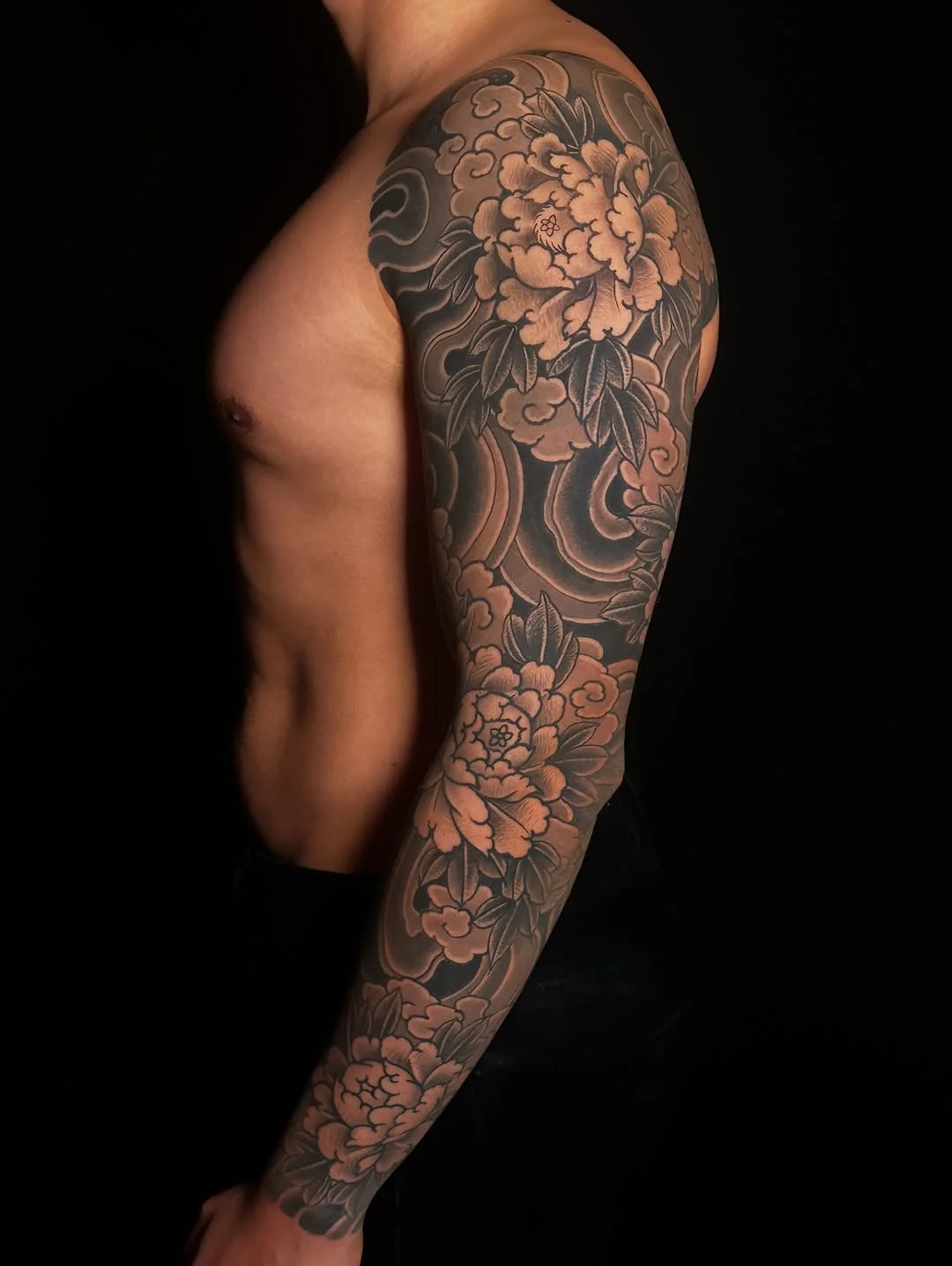
Peonies symbolize taking risks with confidence, noble character and good fortune, the intersection of beauty and strength, and prosperity earned through honorable means.
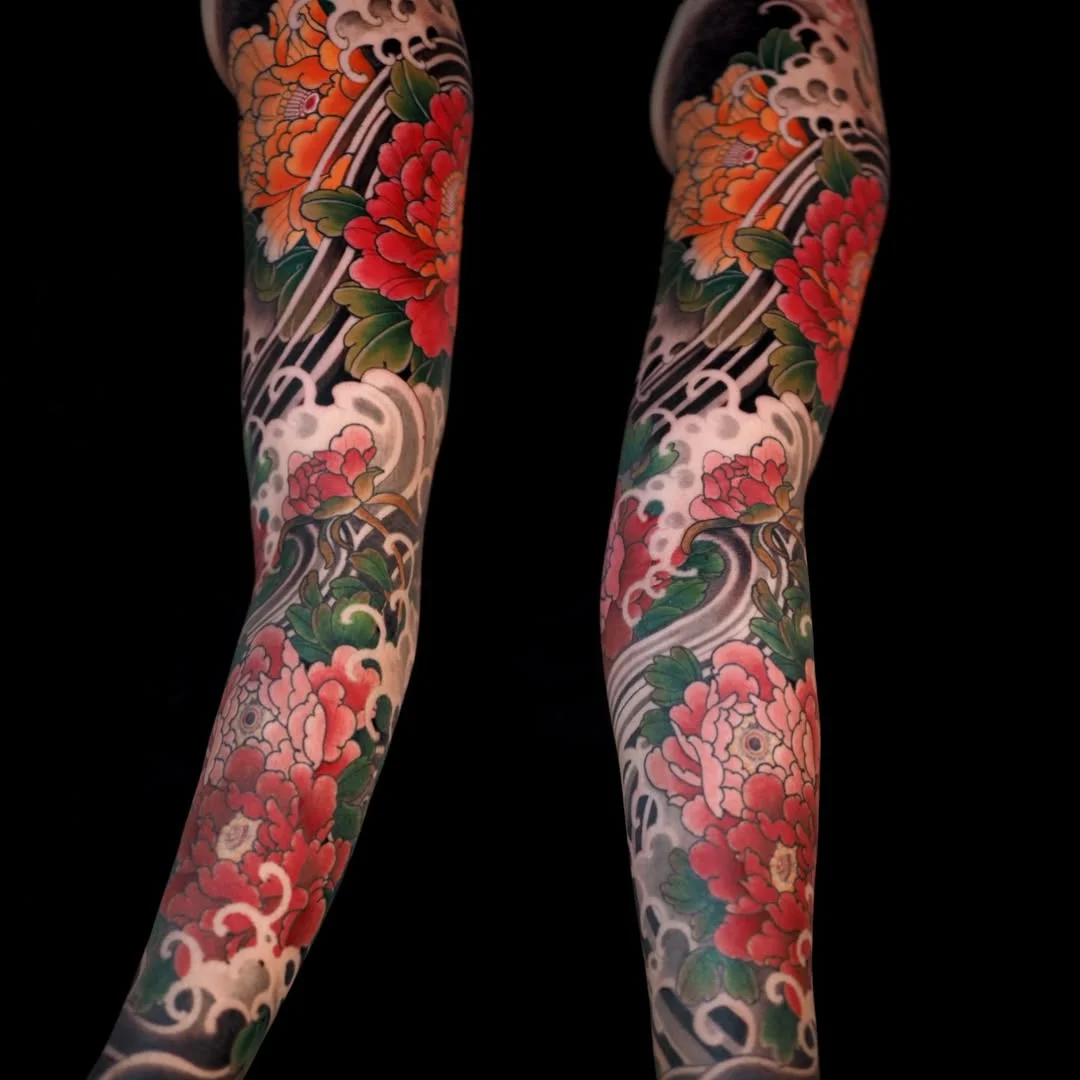
>>>> TRY MORE: Top 7 half back japanese tattoo Ideas: Bold Art, Timeless Style
Cherry Blossom (Sakura) – Beauty, Impermanence, and Living Fully
Cherry blossoms hold profound cultural significance in Japan, where their brief, spectacular bloom period represents the transient nature of life. The concept of mono no aware—a bittersweet appreciation of impermanence—is deeply connected to cherry blossom imagery.
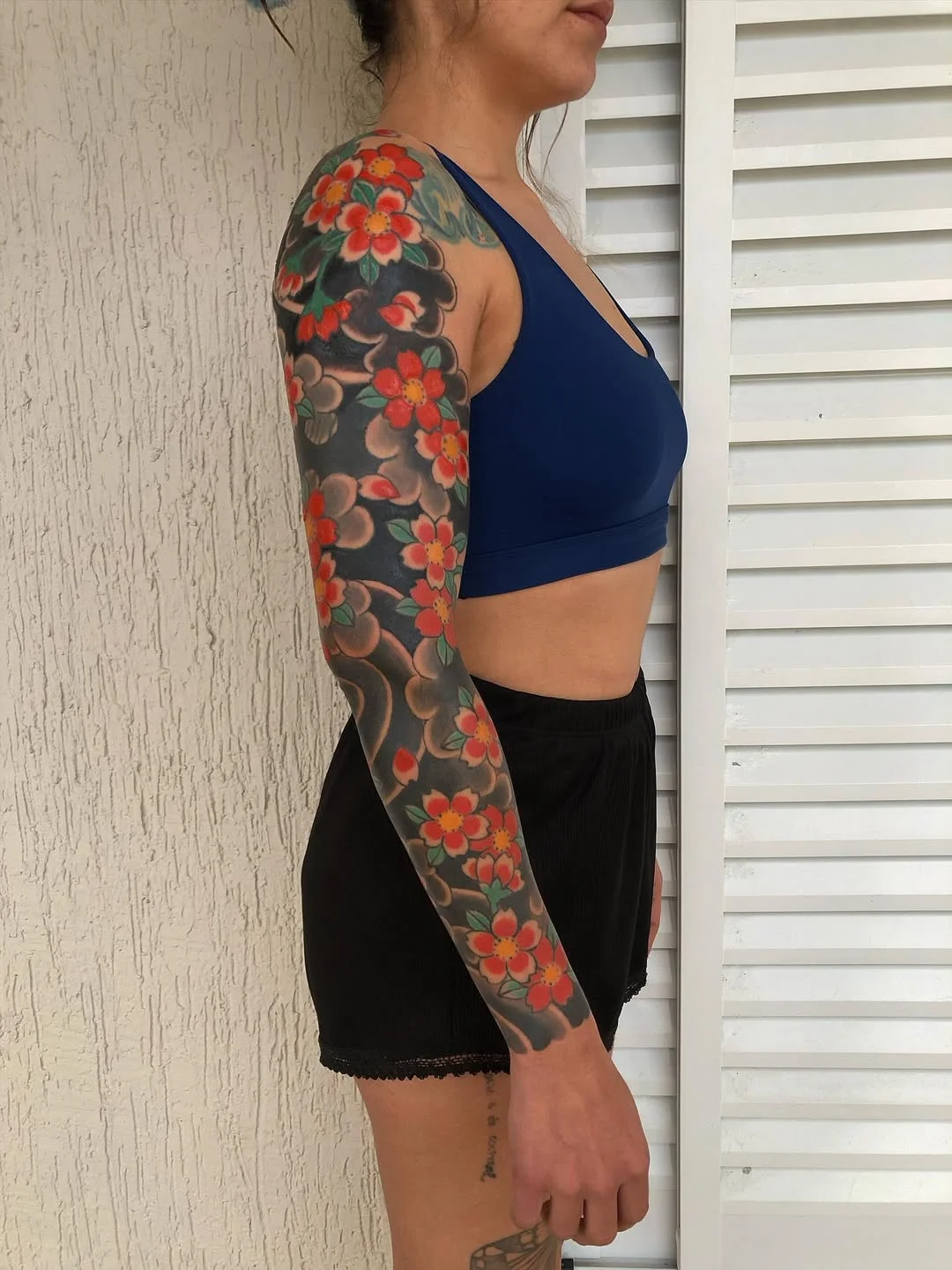
In tattoo symbolism, cherry blossoms remind the wearer to appreciate life's beauty while it lasts, embrace change and natural cycles, recognize the preciousness of fleeting moments, and live fully in the present. These delicate flowers create stunning contrast when paired with more aggressive imagery like dragons or oni masks, softening the overall composition while adding philosophical depth.
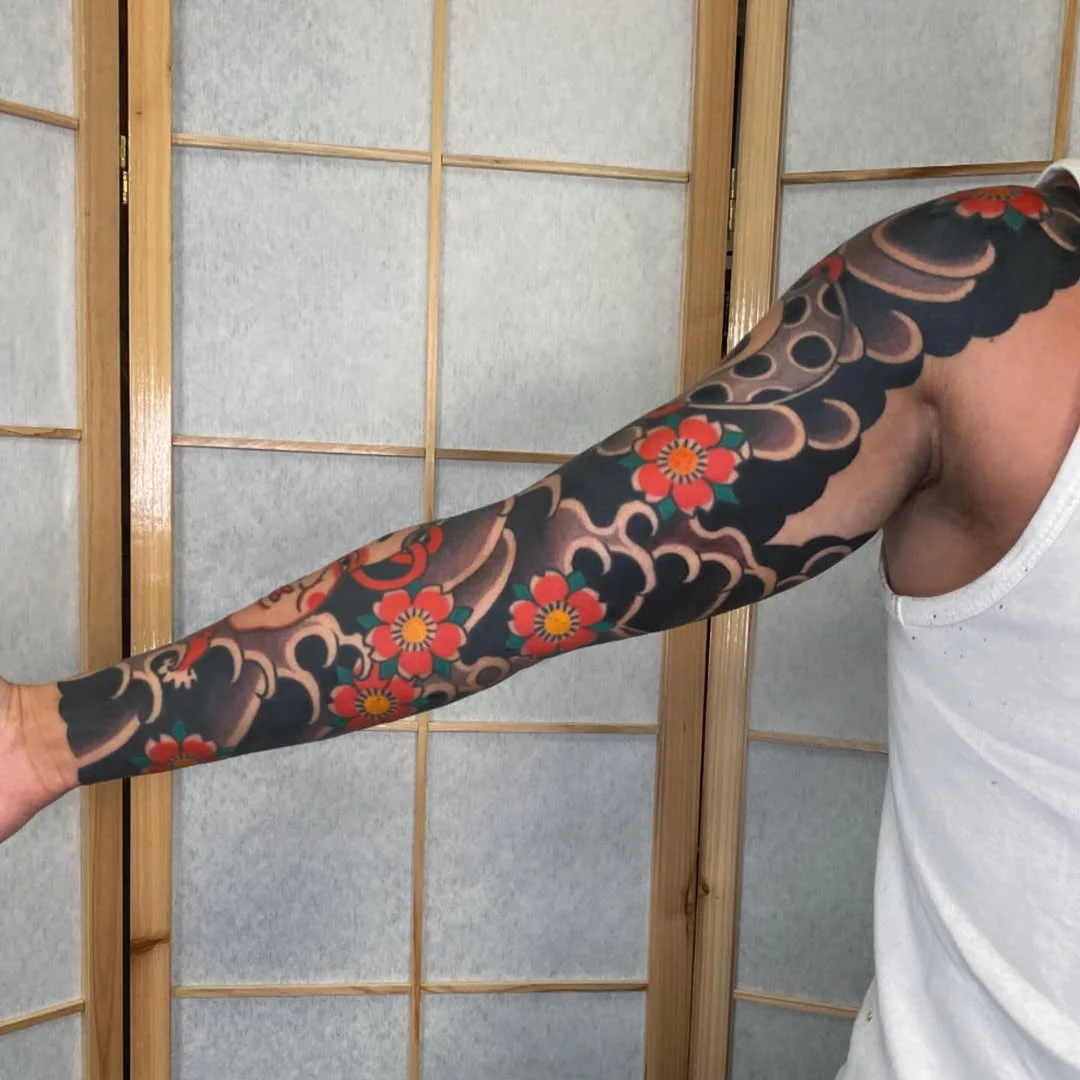
Cherry blossoms work exceptionally well as transitional elements in full arm designs, their scattered petals creating movement that guides the eye through the composition.
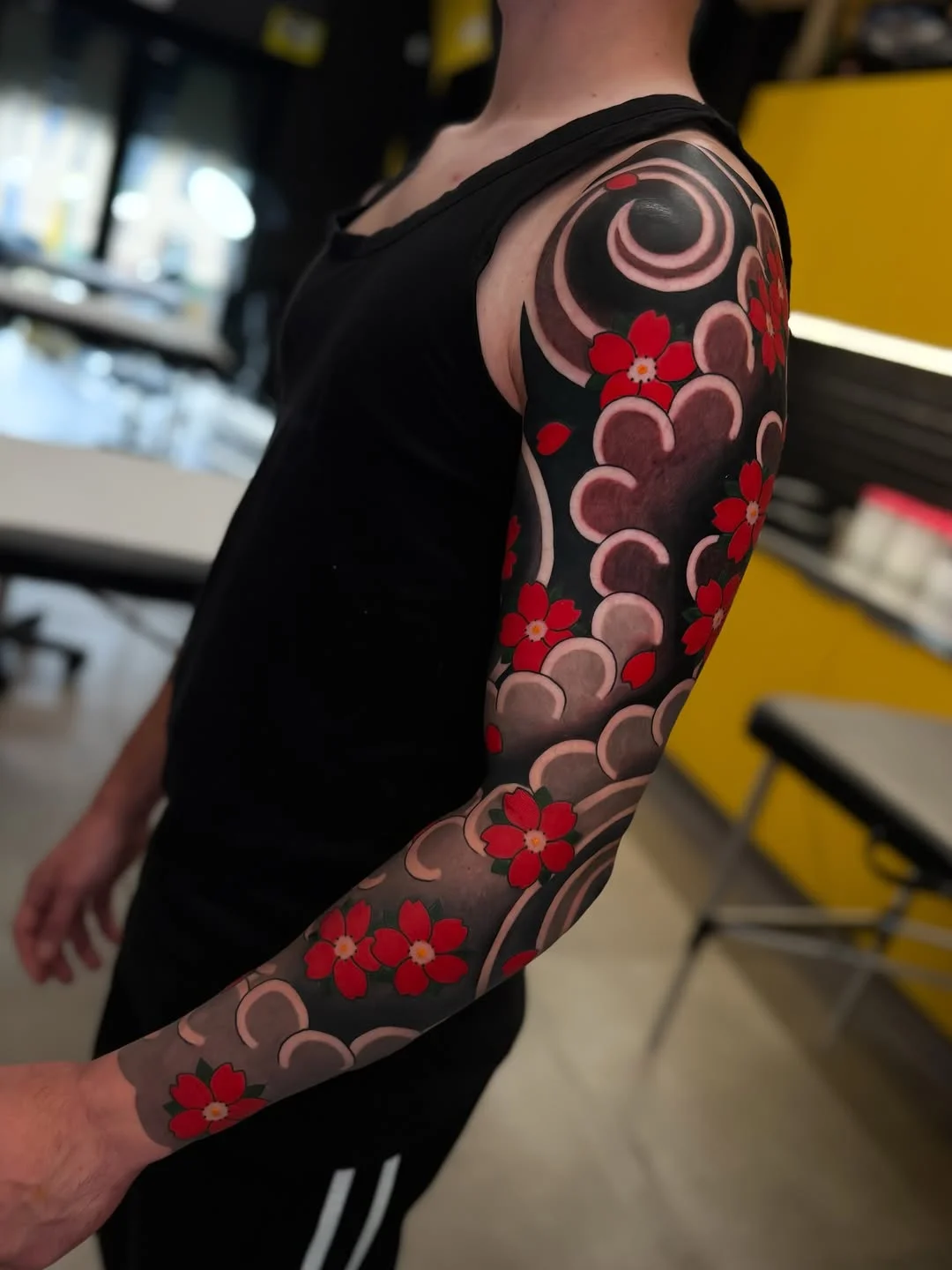
The flowers are typically rendered in soft pinks and whites with subtle shading, though some designs incorporate falling petals in various stages of their journey—from branch to ground—symbolizing life's progression from birth through death.
Water and Waves – Life's Flow, Adaptability, and Constant Change
While not always considered a primary subject, water elements - including waves, flowing streams, and ocean scenes - form the essential background in countless Japanese tattoo compositions. Water represents life force itself, adaptability, cleansing and renewal, and the constant flow of time and circumstance.
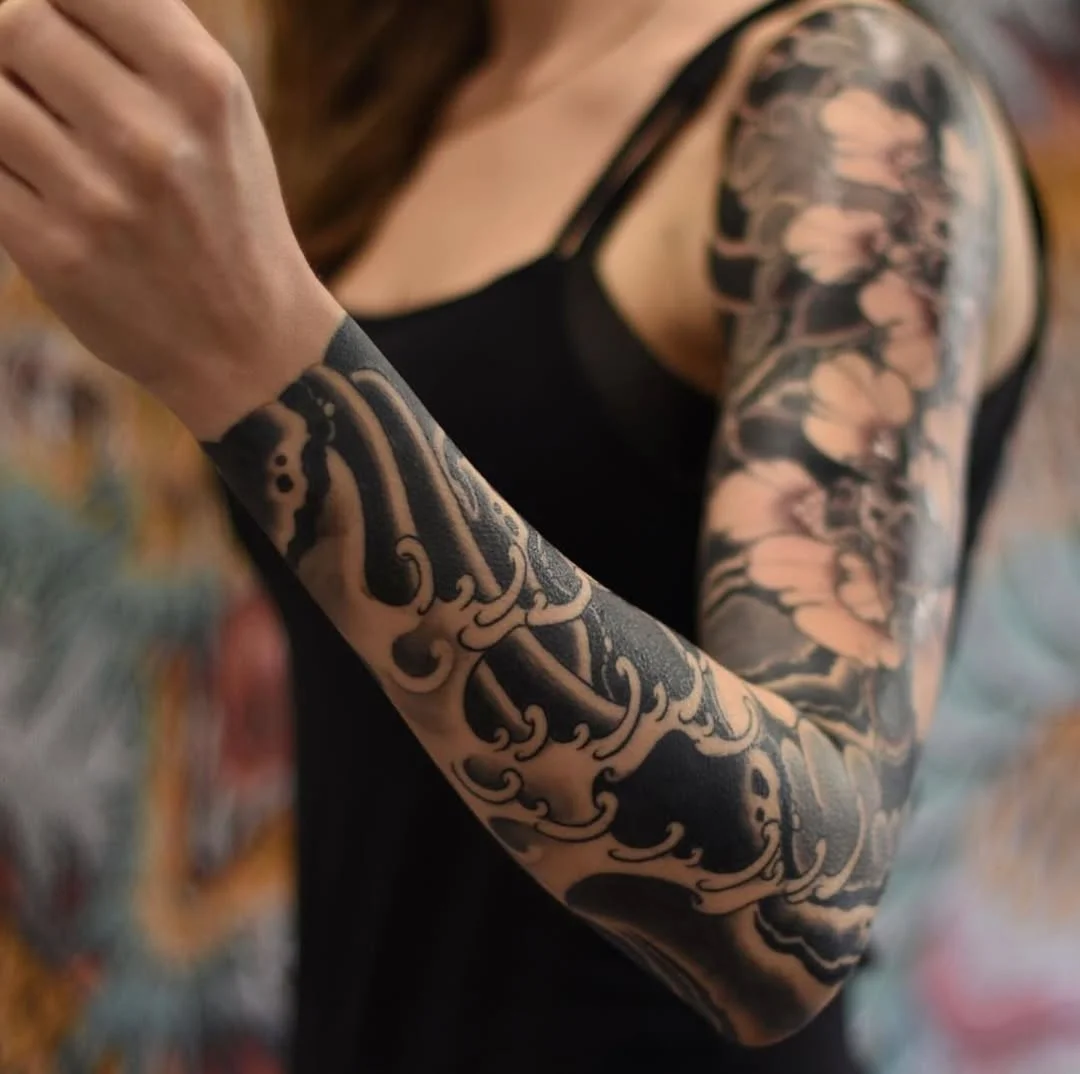
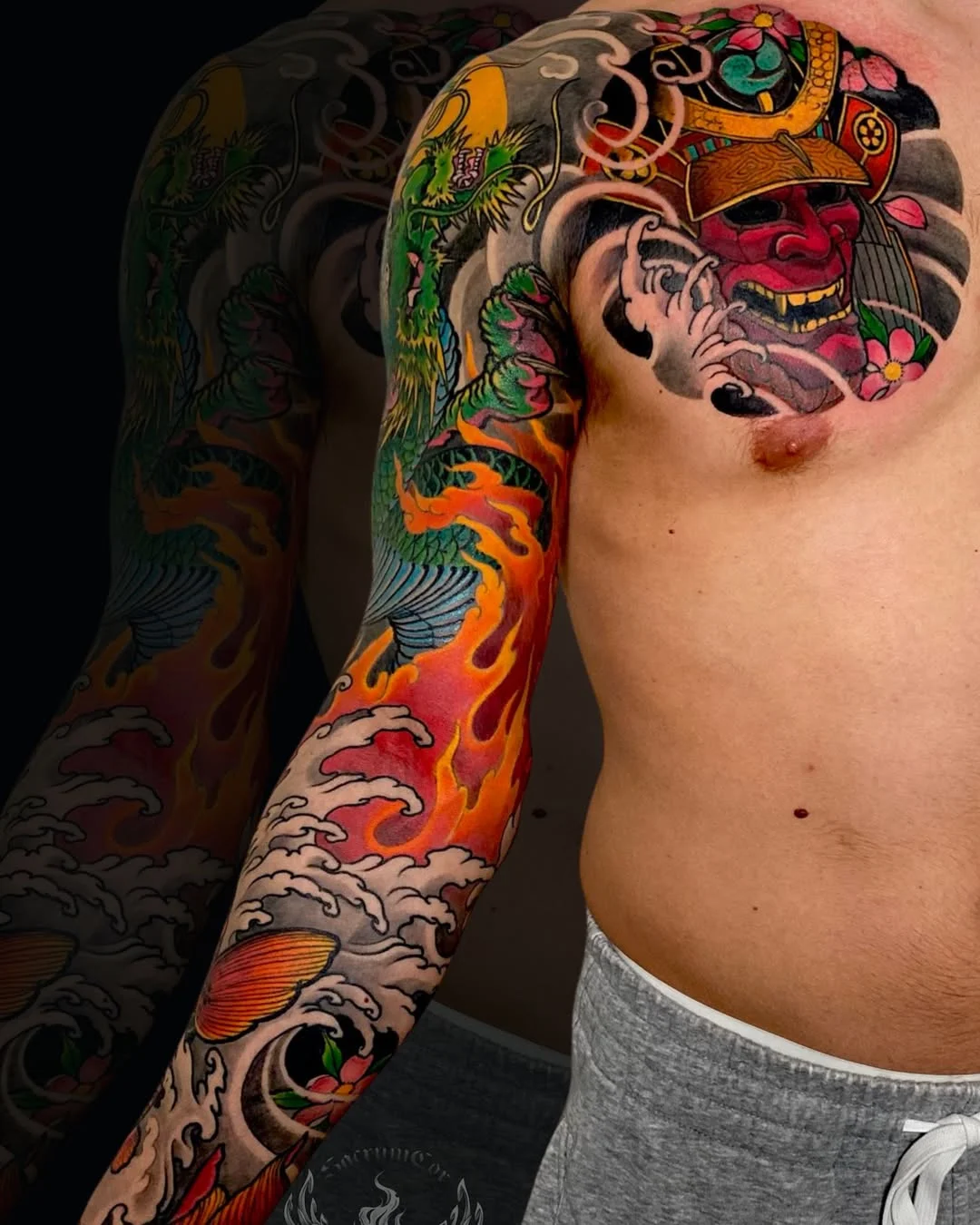
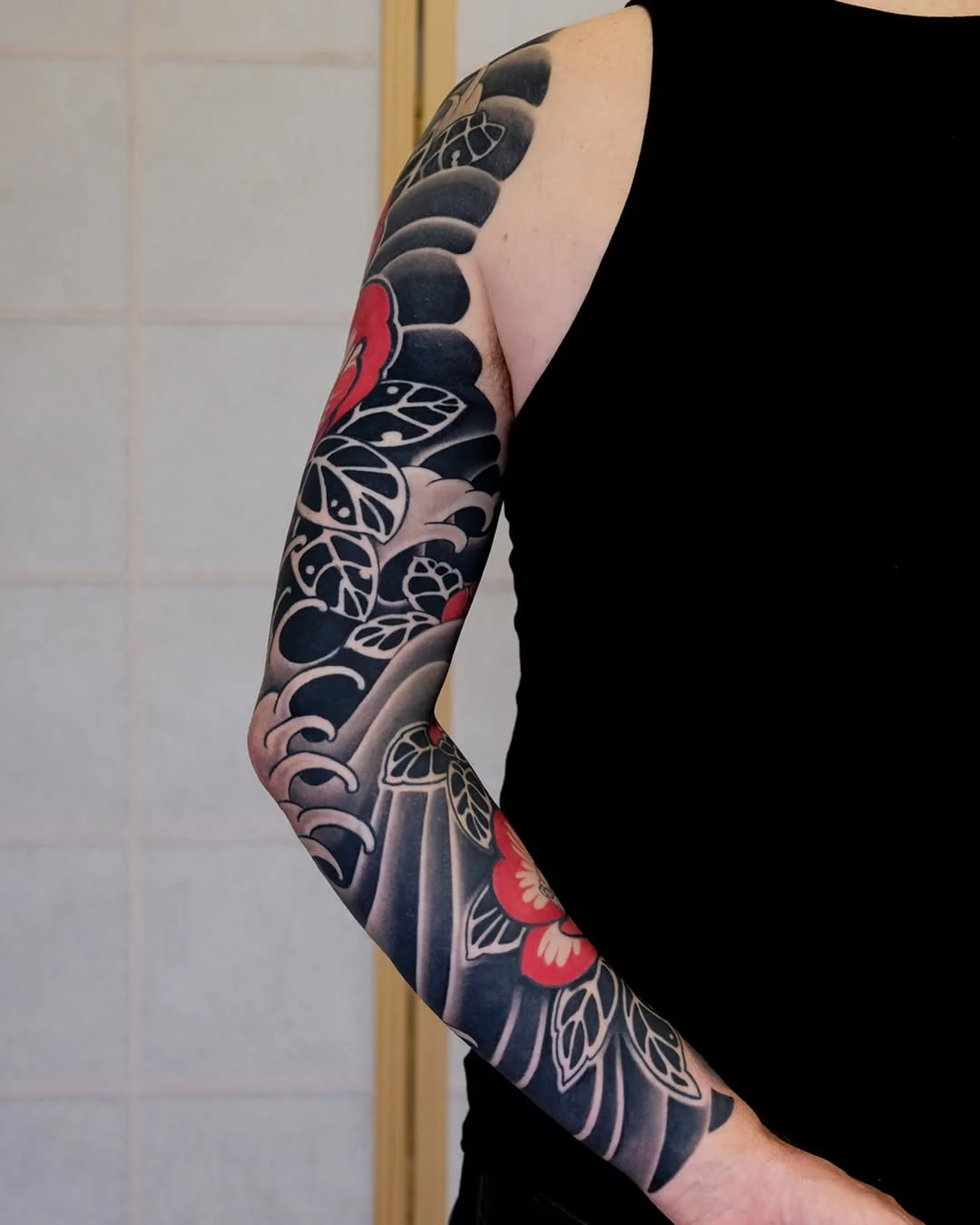
Traditional Japanese wave patterns create dramatic visual impact with their curling crests and powerful movement. In full arm designs, waves provide the dynamic background against which other elements play out their narratives—koi swim through rushing streams, dragons emerge from churning seas, and ships navigate treacherous waters.
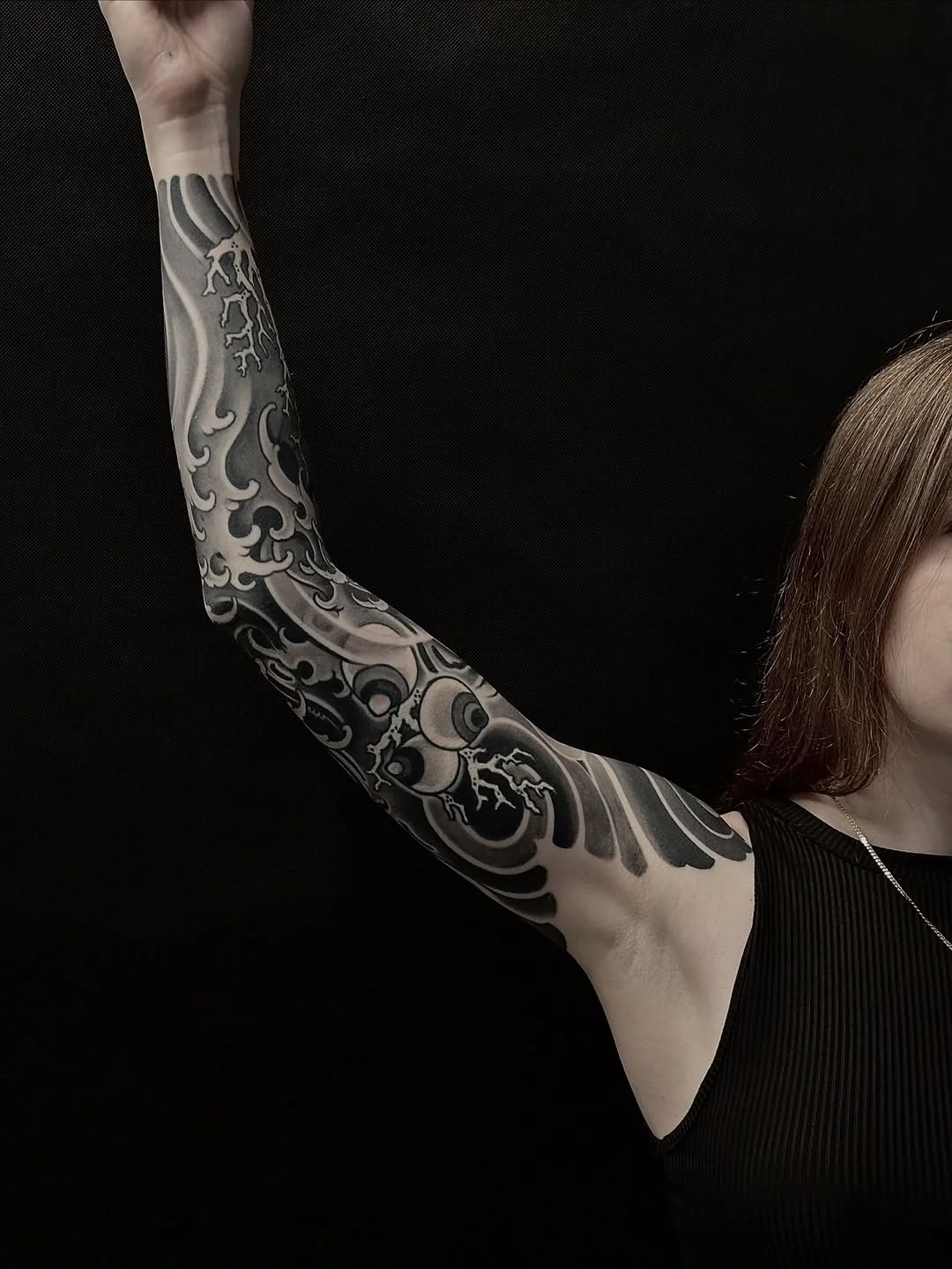
The style of water depicted adds additional meaning: calm, reflective water suggests peace and contemplation, rushing rapids represent life's challenges and turbulent periods, ocean waves indicate vast potential and powerful forces beyond individual control, and spiraling whirlpools symbolize the cyclical nature of existence. Water's adaptability makes it perhaps the most versatile element in Japanese tattoo composition, capable of connecting disparate elements into a cohesive whole while contributing its own symbolic weight.
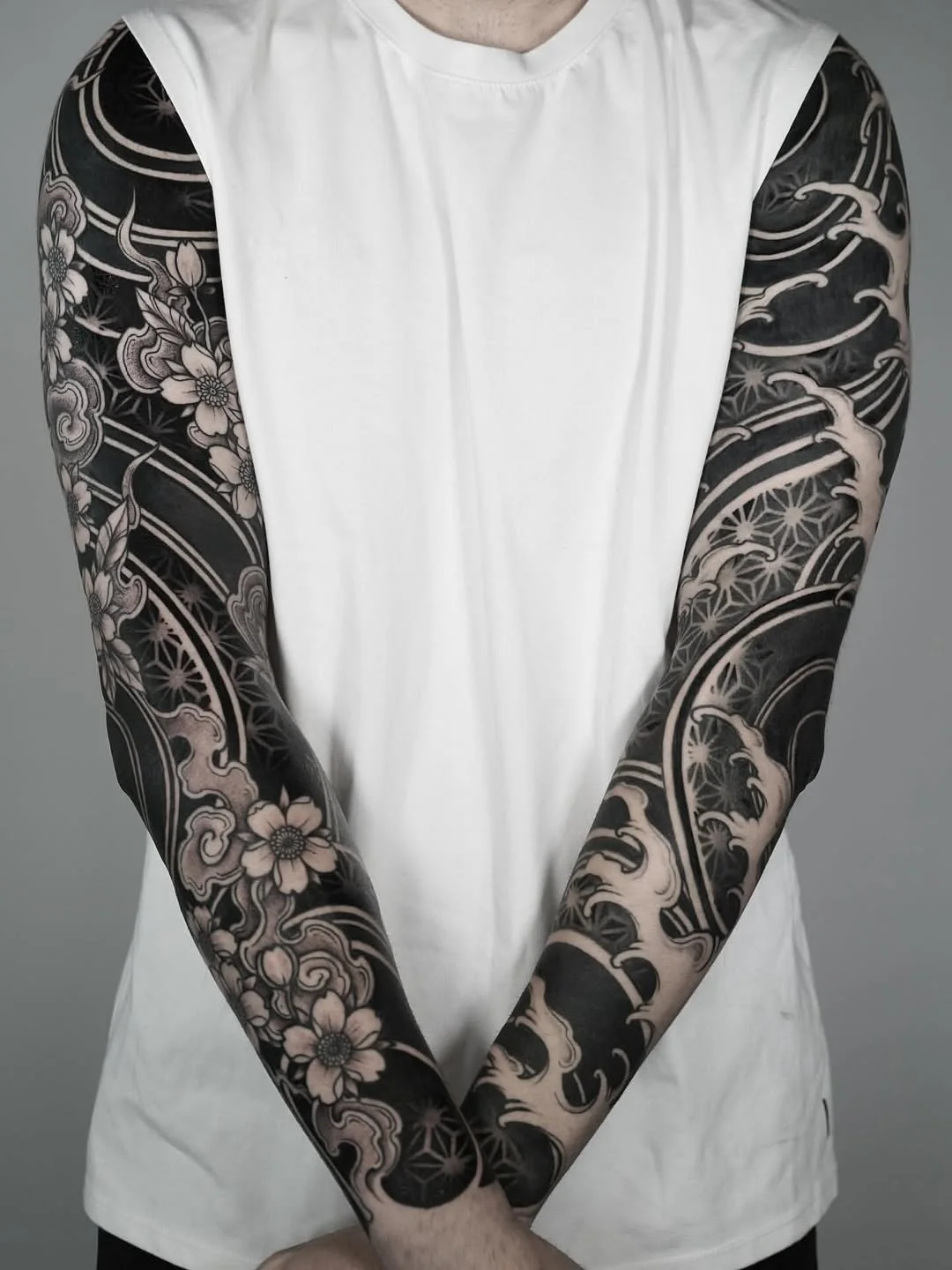
>>>> READ MORE: 20+ Best full back traditional japanese tattoo Ideas for Men and Women
H2M Tattoo Studio - Where to Get the Best Full Arm Traditional Japanese Tattoo
For those who love ancient Japanese tattoo art, especially Full Arm Traditional Japanese Tattoo, finding a satisfactory tattoo address is really not easy. Many people have been disappointed because the work is not as expected. The skewed layout, the color fades quickly, or the lines lack sophistication, causing the tattoo to lose the “soul” of Japanese culture. Some people even experience dermatitis and infection just because they choose an unsanitary place. A Full Arm Traditional Japanese Tattoo is not only costly but also a long journey in terms of time, effort and emotion. And it is heartbreaking when the final result is not worthy of expectations or loses the spiritual value you want to convey.
If you are looking for a place that can “understand” and “breathe life” into each tattoo, H2M Tattoo Studio is the right choice to trust. As a pioneer in the art of Full Arm Traditional Japanese Tattoo in Hanoi, H2M Tattoo Studio is famous for its team of experienced artists, with a deep understanding of traditional Irezumi style and modern aesthetic thinking. Each work here is individually designed according to the story and personality of each customer, not stereotyped. Above all, the studio commits to a safe tattoo process, absolutely sterile tools and brings you a professional and comfortable tattoo space.
The Full Arm Traditional Japanese Tattoo is not only a work of art but also a symbol of spirit, courage and personal style. H2M Tattoo Studio believes that every tattoo carries its own soul, and perhaps, it is the way you tell your story through the language of art. We hope this article has inspired you to embark on your own journey to embrace the classic, profound, and powerful beauty of this timeless art form.
>>>> NOTE NOW:


